MORE PLANT INFORMATION
Plant Information Resource Center
A Service Provided by Bohn's Farm and Greenhouses
Bohn's Farm and Greenhouses, a WHOLESALE-TO-THE-TRADE ONLY grower of herbaceous plants, offers this Plant Information Resource Center for the benefit of the green industry professional and the home gardener/landscape enthusiast. This section of our website can also be accessed via www.PerennialPicks.com.
The Plant Information Resource Center is supported by an extensive plant database that we initially developed in 1997. Since its inception, the Bohn's Farm plant database has continuously been updated with the most relevant and timely plant information. The database has offered the foundation of information for publishing 4 editions of the Bohn's Farm Plant Reference Guide in the years 1998, 2000, 2003 and 2006. The information presented on our extensive and ever-expanding custom plant tags is also supported by this central database.
The Bohn's Farm plant database is quite dynamic. We encourage your comments for improving plant information content, accuracy and display format. This website updated frequently with new plant information.
Acanthus spinosusBear'S Breeches, Spiny
Upright spikes of purple and white flowers in early summer. Glossy, deeply lobed leaves with spiny margins form large clumps. Reliable and vigorous. Acanthus leaves have a classical appearance and were the source of the Corinthian leaf motif developed and used as a decoration in ancient Greek and Roman art and architecture.
[
More Info
]
|

|
Achillea 'Coronation Gold'Yarrow
Golden-yellow flower clusters are 3-4" wide on strong stems. Fernlike foliage is gray-green and wooly.
[
More Info
]
|
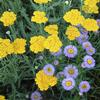
|
Achillea 'Moonshine'Yarrow
Clump-forming yarrow with flat-topped canary yellow flower clusters and bright silver, ferny foliage. Blooms over a long period. Will rebloom if cut back.
[
More Info
]
|
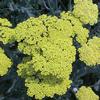
|
Achillea 'Terra Cotta'Yarrow
A multicolored selection, 'Terra Cotta' puts on a dazzling, everchanging show of salmon-peach, terra cotta orange, and pale yellow-orange flowers. When planted en masse, all three colors appear at the same time. They contrast nicely against the silver, ferny foliage.this variety has sturdy stems. This uniquely colored yarrow combines well with many other colors in the garden, especially purple and red.
[
More Info
]
|

|
Achillea millefoliumYarrow
Achillea millefolium, commonly called common yarrow, is a rhizomatous, spreading, upright to mat-forming perennial that is considered by many to be an aggressive weed. Common yarrow from Europe and Asia was originally introduced to America in colonial times, and has since naturalized throughout the U. S. primarily along roadsides, fields, waste areas and lawns. These species plants are noted for producing deeply-dissected, fern-like, aromatic, medium green foliage and tiny, long-lasting, white flowers that appear in dense, flattened, compound corymbs (to 2-4"across) throughout the summer on stems typically rising 2-3’ tall. Foliage has a strong, somewhat spicy aroma that persists when used in dried arrangements.
[
More Info
]
|
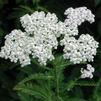
|
Achillea millefolium 'Oertel's Rose'Yarrow
Deep, rose-pink flower clusterare very well behaved in the garden, extremely drought tolerant, deer resistant, a Butterfly attractor, as well as a great cut flower. Grows best in sunny locations in well drained soils and blooms over a long period of time.
[
More Info
]
|

|
Achillea millefolium 'Paprika'Yarrow
Luscious apple-red and paprika colored flowers with sulphur yellow centers appear in flat clusters atop tall stems. Gray-green ferny foliage forms a compact, spreading mound.
[
More Info
]
|
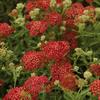
|
Adiantum pedatumFern, Northern Maidenhair
Dainty bright green fronds on shiny black stems create a light, airy texture. Spreads by shallow rhizomes to form a dense groundcover . Thrives in moist, loose, rich soil.
[
More Info
]
|
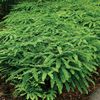
|
Aegopodium podagraria 'Variegatum'Snow-On-The-Mountain
Green foliage with creamy white margins. Flowers are inconspicuous. A good ground cover but can be aggressive. Best if planted in a contained area.
[
More Info
]
|
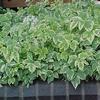
|
Agastache 'Black Adder'Hyssop, Anise
Tall racemes of deep purple, nearly black buds open to light violet blue in midsummer and keep coming late into fall. A sterile form that won't turn weedy in the garden. Tolerates heat and drought.
[
More Info
]
|
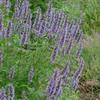
|
Agastache 'Blue Fortune'Hyssop, Anise
Purple-blue flower spikes from mid- to late summer attract butterflies and hummingbirds. Foliage is very fragrant.
[
More Info
]
|
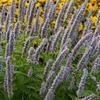
|
Agastache 'Purple Haze'Hyssop, Anise
Aromatic dark green, upright foliage with the scent of black licorice. Vibrant violet-purple flowers July through September. Heat and drought tolerant. Attracts songbirds. Zone 6.
[
More Info
]
|
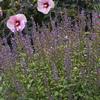
|
Ajuga reptans 'Black Scallop'Bugleweed
Dark, dark burgundy, glossy foliage with roundly scalloped margins forms a low, dense ground cover. Short spikes of blue flowers in mid- to late spring.
[
More Info
]
|
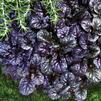
|
Ajuga reptans 'Catlin's Giant'Bugleweed
[
More Info
]
|
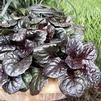
|
Ajuga reptans 'Chocolate Chip'Bugleweed, Dwarf
Petite selection forms a dense mat of foliage. Narrow, shiny leaves are chocolate with burgundy highlights. Light blue flower spikes appear in April. Stunning show of color when planted in mass.
[
More Info
]
|
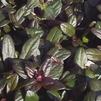
|
Alcea rosea 'Blacknight'Hollyhock
Deep black-purple, single flowers are produced on tall, sturdy stalks in midsummer. Spotlight Series is being introduced by Jelitto in 2010 with four single color strains including deep black-purple, red, yellow, and white.
Other than their fabulous blossoms, one of the best traits about this series is that the plants are truly perennialnot biennialand they bloom the first year from seed.
[
More Info
]
|
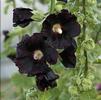
|
Alcea rosea 'Chater's Double Red'Hollyhock
This selection produces tall, sturdy spikes of red, ruffled, fully double flowers. They open from the bottom of the stalk to the top over a long period.
[
More Info
]
|

|
Alcea rosea 'Chater's Double Yellow'Hollyhock
This selection produces tall, sturdy spikes of yellow, ruffled, fully double flowers. They open from the bottom of the stalk to the top over a long period.
[
More Info
]
|
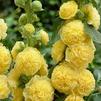
|
Alcea rosea 'Fiesta Time'Hollyhock
[
More Info
]
|
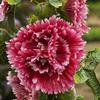
|
Alcea rosea 'Las Vegas'Hollyhock
Like the bright colorful lights of Las Vegas, this mixed color strain of fig leaf hollyhocks bears large, saucer-shaped flowers in unique shades of red, copper, chestnut brown, yellow, pink, and white over a long period beginning in early summer.
This hardy species of hollyhock has decorative lobed leaves that are borne all the way up the stems, leaving little bare stem at the base. ‘Las Vegas’ is a bit shorter than the species, standing about 5-6 feet tall in bloom.
The breeder, Jelitto, claims this new hybrid should live longer than the typical biennial hollyhocks. It is possibly hardier than zone 3.
Feel free to grow hollyhocks under Black Walnut trees; they are tolerant of the toxic juglone that is emitted through the trees' roots.
[
More Info
]
|
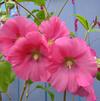
|
Alcea rosea 'Mars Magic'Hollyhock
Bright red, single flowers are produced on tall, sturdy stalks in midsummer. For over 18 years, Jelitto worked to develop a consistent strain of stable, straight color, single flowered Hollyhocks. The Alcea rosea Spotlight Series was introduced by Jelitto in 2010 with multiple single color strains including deep black-purple, red, pink, yellow, and white. Other than their fabulous blossoms, one of the best traits about this series is that the plants are truly perennial, not biennial.
Feel free to grow hollyhocks under Black Walnut trees; they are tolerant of the toxic juglone that is emitted through the trees' roots.
[
More Info
]
|
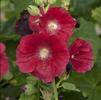
|
Alcea rosea 'PEACHES 'N DREAMS'Hollyhock
[
More Info
]
|
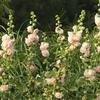
|
Alchemilla mollis 'Thriller'Lady'S Mantle
Excellent gray-green foliage with tiny, star-shaped, green-yellow blooms. Slightly larger than the species yet remains compact and well behaved.
[
More Info
]
|
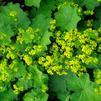
|
Allium 'Lavender Bubbles'Allium
Lavender Bubbles has a darker purple flower and blooms even later than Millennium. This variety is not known to reseed. Highly resistant to deer and rabbits and mildew. Drought tolerant, long lived perennial that can grow in clay soil. Attracts butterflies.
[
More Info
]
|

|
Allium 'Medusa'Allium
This ornamental onion has snaky, twisty leaves that will remind you of the snake hair from the Medusa legend. ‘Medusa’ forms a low mound of grey-green, narrow foliage with leaves the twist slightly at the end. The nodding buds look like snakes at the tips of the stems, before they straighten to form 1.75-2" rounded clusters of light amethyst purple flowers. Similar in flower color and flower foliage to ‘Blue Eddy’, but in a much larger form.
Butterflies and honeybees adore the flowers' sweet nectar but deer and rabbits steer clear of this perennial beauty.
[
More Info
]
|
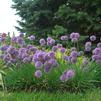
|
Allium 'Millenium'Allium
Long lasting rosy purple 2" globes bloom mid to late July, later than other Allium varieties. Compact variety. Bright green, clump-forming foliage is one of the earliest to emerge in spring. Highly resistant to deer and rabbits and mildew. Drought tolerant, long lived perennial. Attracts butterflies.
[
More Info
]
|
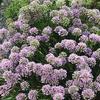
|
Allium 'Summer Peek-A-Boo'Allium
‘Summer Peek-a-Boo’s’ most charming attribute is how the flowers bloom just above its compact, short foliage. Round lavender-pink blooms on strong stems from June into early August. Butterflies and bees adore the flowers but deer and rabbits steer clear of this perennial beauty.
[
More Info
]
|
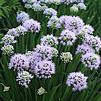
|
Allium angulosum 'Summer Beauty'Allium
Long lasting lavender-pink 2 globes bloom mid to late July, later than other Allium varieties. Bright green, clump-forming foliage is one of the earliest to emerge in spring. Highly resistant to deer and rabbits and mildew. Drought tolerant, long lived perennial. Attracts butterflies.
[
More Info
]
|
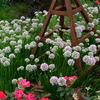
|
Allium giganteum 'Globemaster'Onion, Ornamental
'Globemaster' is a hybrid cross between A. christophii and A. macleanii. It is a bulbous perennial that is ornamentally grown for its spring bloom of spherical, deep lavender flower heads. Strap-shaped, gray-green, basal leaves form a clump of foliage in spring. As the leaves begin to wither in mid-spring, stout flowering stems rise to 20-30" tall topped with huge, globular, deep lavender to silver-purple flower heads (terminal umbels to 6-10" in diameter) packed with individual star-shaped florets which collectively display a metallic sheen. Flowers appear in an impressive, long-lasting, spring bloom (May in St. Louis) in which new florets continue to develop as the original ones fade. Flower heads dry after bloom and remain ornamental in the garden well into summer. Flowers generally lack fragrance.
[
More Info
]
|

|
Amorpha canescensLeadplant
Leadplant (Amorpha canescens) exhibits a unique display of both foliage and flowers. Spikes of iridescent purple flowers appear atop the delicate silver-gray foliage in the heat of mid-summer. Extremely long-lived, this is one of the few true shrubs of the prairie. Leadplant's deep taproot makes it extremely drought tolerant. Thrives in any well-drained soil.
[
More Info
]
|
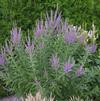
|
Amorpha fruticosaFalse Indigo Bush
Long racemes of purple flower bloom in May and June. Foliage has shrub-like habit and pinnately compound leaves. Grows along stream banks and moist woods.
[
More Info
]
|
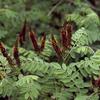
|
Amsonia hubrichtiiBlue Star, Narrow-Leaf
Pale blue star-like flowers in April and May. Narrow, feathery shrub-like foliage is green in summer, turning brilliant golden-yellow in the autumn. Excellent when massed.
[
More Info
]
|
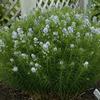
|
Amsonia illustrisBlue Star, Shining
Clusters of pale blue, star-like flowers grace a substantial mound of shiny, leathery leaves in May. Foliage often turns gold in fall. An easy-care native of the Ozarks.
[
More Info
]
|
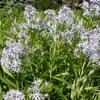
|
Amsonia tabernaemontanaBlue Star
Loose clusters of lilac blue star-shaped flowers bloom in May. Willow like leaves turn a stunning shade of yellow-orange in autumn. Drought tolerant. Easy to grow. Midwest native.
[
More Info
]
|
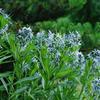
|
Amsonia tabernaemontana 'Blue Ice'Blue Star
Plump navy blue buds open to vivid periwinkle blue, star-shaped flowers in Ma'y.considerably longer and stronger than the species with 5 weeks or more of color. More compact and darker blue flowers than the species. Willow like leaves turn a stunning shade of yellow in autumn.
[
More Info
]
|
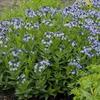
|
Amsonia tabernaemontana 'Storm Cloud'Blue Star
Amsonia tabernaemontana, commonly called bluestar, is a Missouri native herbaceous perennial which occurs most frequently in rich, open woods and thickets in the southwestern part of the State. An erect, clump-forming plant which features terminal, pyramidal clusters of 3/4", soft light blue, star-like flowers in late spring atop erect, leafy stems growing 2-3' tall. Narrow, willow-shaped, dull green foliage may turn an attractive yellow in fall.
‘Storm Cloud’ features near black stems in spring clad with silver-veined dark green leaves. Leaves lighten to olive green by summer. Light periwinkle-blue, star-shaped flowers bloom abundantly from late spring to early summer, often with some rebloom thereafter. Plants typically grow to 24-30" tall spreading to as much as 42" wide.
[
More Info
]
|
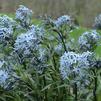
|
Andropogon gerardiiGrass, Big Bluestem
King of native grasses! Blue-green foliage that can reach 8' tall forms distinctive seed heads in late summer. Nice red color in fall. Ideal as a background plant, specimen or in naturalized plantings.
[
More Info
]
|
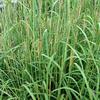
|
Anemone 'Curtain Call Deep Rose'Anemone, Japanese
Beginning in late summer, this perennial produces dark rose flowers that are positioned just above a small mound of green foliage. The flower's fullness is due to a double row of petals. Compact, mounded habit, great for front of border. Moderate, but consistent moisture needs.
[
More Info
]
|
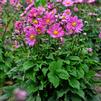
|
Anemone 'Fall in Love'Windflower
Semi-double pink flowers with yellow centers bring bright life to your fall garden. Slow, rhizomatous spreader.
[
More Info
]
|

|
Anemone 'Honorine Jobert'Windflower
Single white flowers with yellow center on tall graceful stems August through October. Dark green foliage forms attractive compact mound. Spreads by creeping rhizomes.
[
More Info
]
|

|
Anemone 'Pamina'Windflower
Japanese anemones are the perfect perennial to incorporate into your late summer and fall gardens. ‘Pamina’ comes into its prime just as other plants are beginning to retire for the season. From late summer into mid-fall, deep rosy pink 2.5" double flowers top tall, graceful stems which sway beautifully in the wind. Individual petals are elongated and daisy-like. Try planting Japanese anemones with other fall bloomers such as asters, snakeroot, and toad lilies.
[
More Info
]
|

|
Anemone 'Pocahontas'Windflower
Covered in double flowered, bubblegum pink blooms from mid to late summer! The seed heads look like fluffy cotton balls, standing atop strong stems to give interest to the garden from fall into winter. This vigorous, clumping selection is a delight in the garden or mixed container.
[
More Info
]
|

|
Anemone 'Whirlwind'Windflower
Semi-double pure white flowers are 4" across blooming September and October.
[
More Info
]
|
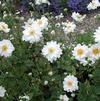
|
Anemone canadensisAnemone, Meadow
A strong growing plant that needs room to move. Clear white single flowers top out at 18" from mid spring to early summer. A robust and competitive native plant that brightens up woodland edges and shady corners of the garden.
[
More Info
]
|

|
Anemone hupehensis 'September Charm'Windflower
[
More Info
]
|
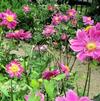
|
Anemone sylvestrisAnemone, Snowdrop
Spring blooming Anemone has pure white, fragrant flowers with yellow stamens. Blooms rise above foliage on sturdy stems in April. Interesting white, wooly seed heads follow flowers. Spreads by rhizomes.
[
More Info
]
|
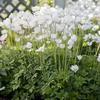
|
Aquilegia 'Swan Pink & Yellow'Columbine
The mid-size Swan series known for large bi-color blooms in rich colors on vigorous plants. This variety has pink outer spurs with yellow inner petals.
[
More Info
]
|

|
Aquilegia 'Swan Violet & White'Columbine
Pure white center surrounded by dark violet, shiny petals and spurs. The name honors the memory of the victims of the Columbine High School tragedy in Colorado. Proceeds benefit organizations that promote diversity and tolerance in schools.
[
More Info
]
|
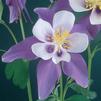
|
Aquilegia caerulea 'KIRIGAMI light blue & white'Columbine
First year flowering, upright stems, and upward-facing flowers. Flowers are a mix of light blue and white shades. Aquilegia is especially lovely when allowed to naturalize in shady, woodland borders. Excellent potential as cut flowers, lasting up to 2 weeks in a vase.
[
More Info
]
|

|
Aquilegia caerulea 'KIRIGAMI Red & White'Columbine
Upright, delicate foliage produces stunning red and white blooms, no cold treatment required.
[
More Info
]
|

|
Aquilegia caerulea 'KIRIGAMI Yellow'Columbine
Sweet, large upward facing yellow blooms with pale yellow spurs, no cold treatment required
[
More Info
]
|

|
Aquilegia caerulea 'Origami Yellow'Columbine
Long spurred yellow, upward facing blooms appear above upright silver gray foliage.
[
More Info
]
|
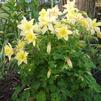
|
Aquilegia canadensisColumbine
Lots of red and yellow nodding flowers for many weeks from late April until mid June. A great source of early nectar for butterflies and hummingbirds. Found naturally on rocky ledges and wooded rocky slopes.
[
More Info
]
|
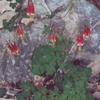
|
Aquilegia hybrida 'Earlybird Purple Blue'Columbine
Unique color combination, upward facing flowers on compact short stems
[
More Info
]
|

|
Aralia cordata 'Sun King'Spikenard
This deciduous perennial offers huge, compound foliage with leaflets to six inches, chartreuse-yellow in color, shading to pale lime, in contrast to its red-brown stems. A striking foliage plant for a cool, moist and shaded position rich loam. In late summer, tiny white flowers on radiating stems appear, followed by small purple (inedible) berries. Foliage and stems disappear for winter.
[
More Info
]
|
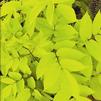
|
Armeria maritima 'Splendens'Thrift
Long-blooming, hot pink flowers on compact plants bloom late April through early June with grass-like foliage.
[
More Info
]
|
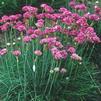
|
Armeria pseudarmeria 'Ballerina Lilac'Thrift
[
More Info
]
|
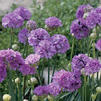
|
Aronia melanocarpaChokeberry, Black
[
More Info
]
|
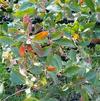
|
Artemisia schmidtiana 'Powis Castle'Wormwood
Mounding, feathery, aromatic, silver foliage. Good filler plant. Drought tolerant. Foliage resists late season frost damage, thus maintaining garden interest into early winter.
[
More Info
]
|
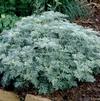
|
Artemisia schmidtiana 'Silver Mound'Wormwood
Finely cut, soft, silver foliage forms a neat, rounded mound. Drought tolerant. Noninvasive variety. Insignificant flowers. Prefers poorly fertile soil. Cut back in late spring to avoid "melting out".
[
More Info
]
|
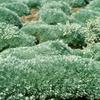
|
Aruncus dioicusGoat'S Beard
Large wands of frothy, creamy white flowers in May and June. Foliage is similar to astilbe but growth habit is shrub-like. A good native for woodland gardens.
[
More Info
]
|
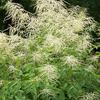
|
Aruncus dioicus 'Chantilly Lace'Goat'S Beard
Goat's Beard loves part shade, and Chantilly Lace produces beautiful sprays of lacy, cream-colored flowers in late spring to early summer. Loads of inflorescences completely covers the deep green foliage. Goatsbeard is a great option to replace Astilbe in the garden if you're looking to incorporate more natives.
Aruncus doesn't like to be transplanted, so although it is a slow grower the first couple of years, plan on giving each plant plenty of room to fill in over time.
[
More Info
]
|
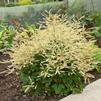
|
Aruncus dioicus 'Misty Lace'Goat'S Beard
[
More Info
]
|
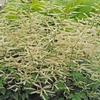
|
Arundo donax 'Versicolor'Grass, Striped Giant Reed
A striking specimen plant with stiff, upright, variegated leaves. Plants resemble huge corn plants. Heat tolerant but needs moist, well-drained soil. Hardy with winter protection.
[
More Info
]
|
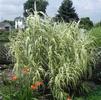
|
Asarum canadenseGinger, Wild
A deciduous ground cover with soft green, kidney-shaped leaves. Inconspicuous greenish brown flowers in April and May. Forms large colonies in cool, moist woodland areas. Very good deciduous ground cover for the shade garden.
[
More Info
]
|
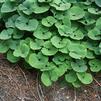
|
Asclepias incarnataMilkweed, Swamp
Clusters of long-lasting vanilla-scented rose-pink flowers are butterfly magnets in July and August. A host plant for Monarch larvae, and a nectar plant for many butterfly species. Grows best in moist soils, but tolerates drier conditions.
[
More Info
]
|
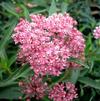
|
Asclepias incarnata 'Cinderella'Milkweed, Swamp
Large 3-4" clusters of fragrant vanilla-scented rose-pink flowers in July and August over lush green foliage attract butterflies and beneficial insects from midsummer to early fall. Grows best in moist soils but tolerant of drier conditions.
[
More Info
]
|
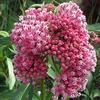
|
Asclepias incarnata 'Ice Ballet'Milkweed, Swamp
Large clusters of long-lasting, small white flowers. Host plant for the monarch butterfly and a great nectar plant for many other butterfly species. As the common name suggests, this species grows best in moist soil but will tolerate drier conditions.
[
More Info
]
|

|
Asclepias purpurascensMilkweed, Purple
Asclepias purpurascens, Purple Milkweed looks similar to Common Milkweed (Asclepias syriaca), but the flower color is a rich red purple color compared to the soft gray-pink of Common Milkweed. There are usually one to three blooms that form near the ends of the stems in late spring, early summer.
The flower is held above the leaves on stems a bit longer then Common Milkweed’s and the umbel itself is stiff, and holds a nicely rounded form while that of Common will flop a bit. Blooms can last for about a month and if seed is not set it will occasionally re-bloom. The average height is around 3 feet but it will sometimes go to 4 feet. The flowers will attract a variety of nectar seeking insects from the very small to large Bumble Bees and of course Monarch Butterflies. The leaves are big, around 6-8 inches and they taper to a point at both ends. The mid-vein in the leaves is tinted with the same color as the flower.
Grow Asclepias purpurascens in a site that is well drained but has ample moisture. It seems to prefer a bit of shade but will do well in full sun if it gets deep, regular watering. This Milkweed will not spread aggressively like the Common does. The seed pods are smooth and a little more slender than those of Common Milkweed which has plump pods with a prickly surface.
[
More Info
]
|
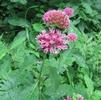
|
Asclepias sullivantiiMilkweed, Sullivant'S
Similar to Common Milkweed but is less aggressive, has slightly smaller flowers, and an overall smooth appearance on the stem, leaves and seed pods. Visited by hummingbirds and a wide variety of bees and butterflies (including, of course, Monarchs), Prairie Milkweed is one of the plants favored by the larvae of the Milkweed Leaf-Miner fly, which bore holes in the leaves.
Bears a very fragrant pink flower, Prairie Milkweed makes a nice addition to any sunny medium to medium-moist garden. After just a few years the taproot will extend very deep, protecting the plant in times of drought, but also making it difficult to move so choose your spot wisely.
[
More Info
]
|
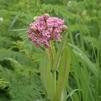
|
Asclepias syriacaMilkweed, Common
This native classic is best known as a food of larval monarch butterflies (along with its siblings A. incarnata and A. tuberosa). Robust and stoloniferous with deep pink clusters of fragrant flowers in June and July, followed by lovely pods of silky seeds in October.Monarch butterflies lay their eggs exclusively on Milkweed plants, making them the sole food source for their larvae. Once found in abundance in nearly every farm field, ditch, and disturbed site, Common Milkweed numbers have been in dramatic decline in recent years, due in part to suburban development and the increased efficiency of herbicides used in conjunction with herbicide-tolerant, genetically modified row crops. Common Milkweed is one of the easiest and fastest to establish of the Milkweeds. The large flower can vary in the color range from nearly white to deep pink-purple. The fragrance is very delicate and pleasing and numerous native pollinators will benefit during its long bloom time.
[
More Info
]
|
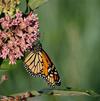
|
Asclepias tuberosaMilkweed, Butterfly
Abundance of bright orange flowers June through August. Host plant for the monarch butterfly and a superior nectar plant for many other butterfly species. Requires well-drained soil.
[
More Info
]
|
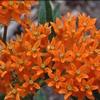
|
Asclepias tuberosa 'Hello Yellow'Milkweed, Butterfly
Clusters of vibrant yellow flowers bloom for many weeks. Host plant for the monarch butterfly and a superior nectar plant for many other butterfly species.
[
More Info
]
|
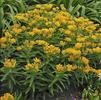
|
Asclepias verticillataMilkweed, Whorled
A widely adaptable and tough native is a deer-resistant food for larval butterflies. The fine-textured foliage provides a dark green backdrop for the clusters of white flowers that appear in June and July. Please note, Asclepias verticillata is highly toxic to livestock and horses - it should not be allowed to take root in pastures or hayfields. Found in dry fields, roadsides and shale barrens, you can see that it needs no coddling. Best located in a sunny dry spot, but will tolerate average to moist garden soil as well.
[
More Info
]
|
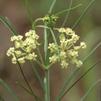
|
Asclepias viridisMilkweed, Spider
Green Milkweed shares with other Asclepias species its milky, irritating sap and strong attractiveness to Monarch butterflies and a host of other insects. Very tolerant of dry conditions, it is also called Green Antelopehorn. Green Milkweed features rose-white flowers surrounded by green that form in showy umbellated clusters, often one per plant. Its beauty and tendency to spread slightly make it a good garden choice. White crab spider lives on this plant.
[
More Info
]
|
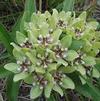
|
Aster (syn Symphyotrichum) dumosus 'Wood's Light Blue'Aster
Light blue flowers for four to six weeks from late summer through early fall. Clean compact foliage is resistant to mildew and rust.
[
More Info
]
|
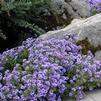
|
Aster (syn Symphyotrichum) dumosus 'Wood's Pink'Aster
Pale pink flowers with yellow centers for four to six weeks from late summer through early fall. Clean compact foliage is resistant to mildew and rust. Easy to grow. Tolerates clay soils.
[
More Info
]
|
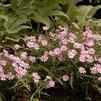
|
Aster (syn Symphyotrichum) dumosus 'Wood's Purple'Aster
Purple-blue flowers with yellow centers for four to six weeks from late summer through early fall. Clean compact foliage is resistant to mildew and rust.
[
More Info
]
|
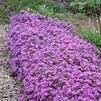
|
Aster (syn Symphyotrichum) ericodes 'Snow Flurry'Aster
Large white flower heads.
[
More Info
]
|
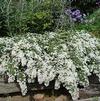
|
Aster (syn Symphyotrichum) ericoides 'Snow Flurry'Aster, Heath
A very low dense carpeting groundcover that is smothered with single white flowers with gold centers in September. A good strong grower and totally new look for Asters. Makes and excellent container plant.
[
More Info
]
|

|
Aster (syn Symphyotrichum) novae-angliaeAster, New England
Blooms August and September. AKA Symphyotrichum novae-angliae.
[
More Info
]
|
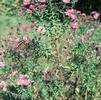
|
Aster (syn Symphyotrichum) novae-angliae 'Purple Dome'Aster, New England
Heavy blooming with deep purple flowers late July or early August and continuing through September and October. Densely compact mounded growth habit. While this plant may appear leggy in a container on the retail shelf, Purple Dome exhibits outstanding landscape performance and still offers the richest purple flower among all Asters. AKA Symphyotrichum novae-angliae.
[
More Info
]
|
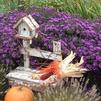
|
Aster (syn Symphyotrichum) oblongifoliusAster, Aromatic
A charming native with masses of blue-purple daisy like flowers blooming July through frost. Blue-green foliage forms tidy, compact, self-supporting mound and is aromatic when crushed. Neat, dome-shaped habit. AKA Symphyotrichum oblongifolium.
[
More Info
]
|
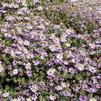
|
Aster (syn Symphyotrichum) oolentangiensisAster, Sky Blue
Dozens of blue flowers with yellow centers bloom in September and October. The foliage is blue-green and stems are dark. Butterflies love the nectar. AKA Symphyotrichum oolentangiense.
[
More Info
]
|
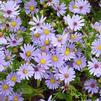
|
Astilbe 'Younique Carmine'Astilbe
The Younique series offer double blooms on compact foliage. Carmine offers medium to dark pink plumes.
[
More Info
]
|

|
Astilbe chinensis 'Maggie Daley'Astilbe, Chinese
Bright lavender-purple plumes are dense and fuzzy. Shiny dark green foliage is attractive even when the plant is not in bloom.
[
More Info
]
|

|
Astilbe chinensis 'Milk and Honey'Astilbe, Chinese
Creamy white plumes turn light pink as they age. Bushy foliage is somewhat marbled with green & silver when young. Vigorous, prolific bloomer; holds up under sun and drought. PPAF
[
More Info
]
|
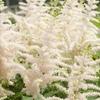
|
Astilbe chinensis 'PURPLE CANDLES Purpurkerze'Astilbe, Chinese
A big, bold astilbe with dense, poker-like purple-red flower plumes in June and July. Very unique and useful tall Astilbe best placed in the back of the garden border. AKA Purple Candles.
[
More Info
]
|
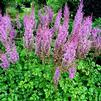
|
Astilbe chinensis 'Visions'Astilbe, Chinese
Upright raspberry red plumes are sweetly scented. Deep bronze-green foliage. Tougher than arendsii types, A. chinensis grows best in moist soil but will tolerate temporary drought without burning. Blooms mid- to late-season.
[
More Info
]
|
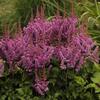
|
Astilbe chinensis 'Visions in Pink'Astilbe, Chinese
Pink flowers on sturdy upright stems late May through early July. Shiny dark green foliage. Very robust and floriferous. More drought resistant than A. arendsii types. Late season bloomer.
[
More Info
]
|
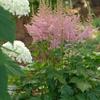
|
Astilbe chinensis 'Visions in Red'Astilbe, Chinese
Deep purple-red flower buds open dark lavender on sturdy upright stems in June and July. Foliage is bronze-green. Very robust and floriferous. More drought resistant than A. arendsii types. Late season bloomer.
[
More Info
]
|
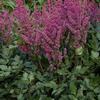
|
Astilbe chinensis 'Visions in White'Astilbe, Chinese
[
More Info
]
|
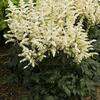
|
Astilbe chinensis var. pumilaAstilbe, Chinese
Lilac-pink fluffy flower plumes June through August on graceful, fernlike foliage mounds . Dwarf variety spreads to form an excellent ground cover. Needs consistent moisture for best performance.
[
More Info
]
|
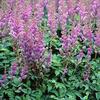
|
Astilbe japonica 'Deutschland'Astilbe
Pure white, open lacy panicles in May and June above glossy deep green foliage. Early to midseason bloomer.
[
More Info
]
|
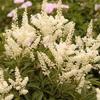
|
Astilbe japonica 'Elizabeth van Veen'Astilbe
Vibrant raspberry-purple plumes. Blooms in early summer. Mid-green foliage with a reddish tinge. A member of Astilbe japonica (Japanese Astilbe). A species characterized by an early bloom time and glossy green leaves often tinged with red. Flowers are produced in dense, pyramidal clusters. Spikes of graceful plumes, mostly erect but on some types arching. Flowers are effective in dried arrangements. Prefers a rich and moist soil in a shady location. Elisabeth van Veen features vibrant raspberry plumes on red stems. Red tinged glossy green foliage. One of the best varieties for container growing.
[
More Info
]
|
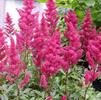
|
Astilbe japonica 'Montgomery'Astilbe
Dark magenta-red flower plumes rise above foliage in June. Glossy green, fern-like foliage, emerges bronze in spring. Stems are dark red. Thrives in moist conditions. Early to midseason bloomer.
[
More Info
]
|
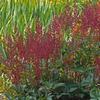
|
Astilbe japonica 'Peach Blossom'Astilbe
Dense, pyramidal flower clusters are delicate peach with a hint of pink. Early blooming species blooms in mid May and early June. Fern-like mounds of glossy green foliage is sometimes tinged with red. Requires some sun to bloom.
[
More Info
]
|
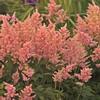
|
Astilbe japonica 'Rheinland'Astilbe
Clear rose-pink flowers are held in large, diamond-shaped panicles. Very floriferous and vigorous. Large, mid-green leaves. One of the best early pink Astilbes.
[
More Info
]
|
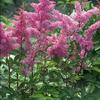
|
Astilbe x arendsii 'Bridal Veil'Astilbe
Frothy profusion of pure white flowers. Midseason bloomer.
[
More Info
]
|

|
Astilbe x arendsii 'Fanal'Astilbe
Blood red flowers are presented in upright spires. Foliage is mahogany red in spring, turning green by summer. Very popular selection. Midseason bloomer.
[
More Info
]
|

|
Athyrium filix-feminaFern, Lady
Bright green, lacy fronds arise from creeping rhizomes. Clumps are dense and upright. Vigorous and easy to grow.
[
More Info
]
|
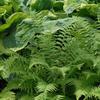
|
Athyrium filix-femina 'Lady in Red'Fern, Lady
Vibrant burgundy stems stand out against light green lacy fronds. Foliage is upright and arching. Naturalizes by creeping rhizomes.
[
More Info
]
|

|
Athyrium filix-femina 'Victoriae'Fern, Lady
Fringed leaflets form a criss-cross pattern creating a unique texture. Foliage is upright and arching. Tolerates drier conditions than most ferns. Vigorous grower.
[
More Info
]
|
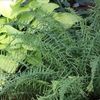
|
Athyrium niponicum 'Ghost'Fern, Lady
Stunning silvery fronds are accented with dark maroon midribs. New growth emerges with a ghostly white hue maturing to silver. Striking upright, clump forming habit. A hybrid of A. n. Pictum (Japanese Painted Fern) and A. filix-femina (Lady Fern).
[
More Info
]
|
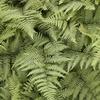
|
Athyrium niponicum 'Pictum'Fern, Japanese Painted
Showy silvery-grey fronds with purple-red veining and stems. Low, mounding habit. Brightens dark spots in shade border. Partners well with purple and red foliage plants. A tough fern for the Midwest. Easy to grow. 2001 Illinois Perennial Plant of the Year.
[
More Info
]
|
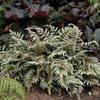
|
Baptisia 'American Goldfinch'Indigo, False
In late spring, American Goldfinch produces loads of golden yellow flower spikes atop its wide habit, that offer colorful drama for many weeks followed by attractive round seed pods in the fall.
[
More Info
]
|
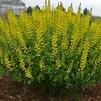
|
Baptisia 'Blueberry Sundae DECADENCE'Indigo, False
Deep indigo blue flowers much more vibrant than B. australis and a perfect plant habit are the key features of this new variety. An excellent floral display occurs in late spring to early summer. The deep blue-green foliage forms a more compact, upright mound to 3ft tall at maturity. Blueberry Sundae is a vigorous grower and the foliage looks great all summer. Ornamental seed pods extend the season of interest into fall. PROVEN WINNER.
[
More Info
]
|
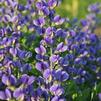
|
Baptisia 'Cherries Jubilee DECADENCE'Indigo, False
An unusually beautiful and unique flower color as well as densely branched foliage set this new variety apart. Deep maroon buds open to bicolor maroon and yellow flowers held on strong scapes above the blue-green foliage in late spring to early summer. Secondary branching on the flower stems makes this variety especially floriferous. Well-branched stems form a bushy, upright spreading mound of foliage that is relatively short for Baptisia. It is a good candidate for the middle of the flower border. Ornamental seed pods extend the season of interest into fall.
[
More Info
]
|
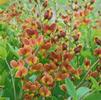
|
Baptisia 'Gape Taffy'Indigo, False
‘Grape Taffy’ a new Baptisia developed by Hans Hansen at Walters Gardens, Inc., is one of the most compact Baptisia to date. Coming in at under 2½ feet tall, this naturally compact plant stays small. Spikes of deep reddish-purple flowers appear in early summer, reminiscent of grapes. Each flower is accented by a buff yellow keel. The reddish-purple flowers are a color break for Baptisia, a departure from the typical deep blue flowers of the genus. The green foliage looks attractive even when the flowers are not in bloom. This extremely long-lived perennial could be used instead of a shrub in landscape settings, with minimal care required to thrive year after year.
[
More Info
]
|
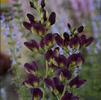
|
Baptisia 'Indigo Spires'Indigo, False
This Baptisia greatly did well in trials with its perfect habit and heavy flower production. Unlike some Baptisia which can be tall and leggy, ‘Indigo Spires’ forms a densely branched, fully rounded clump of glaucous green foliage that extends far down the stems, leaving little bare stem showing at the base.
In early summer, 12-15" long spikes of deep violet purple flowers accented by a yellow keel are borne on all sides of the rounded clump, not just at the top, producing a bigger show of color overall. Secondary flower spikes extend the flowering time into midsummer.
This perennial could easily be used in place of a shrub in the landscape where it will be extremely long lived and require little care to thrive year after year.
Baptisia is easy to grow and will thrive with little maintenance. There are many potential applications in the landscape including meadow plantings, as a backdrop in borders, or as a specimen. Plants are very long-lived once established.
[
More Info
]
|
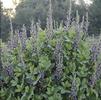
|
Baptisia 'Lemon Meringue DECADENCE'Indigo, False
Youll be impressed with the excellent vigor of this yellow flowered selection. It forms an upright, vase-shaped mound of attractive blue-green foliage topped with long, charcoal stems which carry the lemon yellow flowers in late spring to early summer. The contrast of dark stems with light flowers really pops in the landscape, delivering an excellent floral display. Ornamental seed pods extend the season of interest into fall. Plants are very long-lived once established. PROVEN WINNER.
[
More Info
]
|
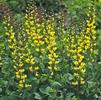
|
Baptisia 'Pink Lemonade'Indigo, False
'Pink Lemonade' is such a unique member of the DECADENCE® series, with beautiful bicolor flower spikes in late spring to early summer that begin as soft yellow and mature to a dusty raspberry purple. Both colors adorn this vase-shaped charcoal-stemmed plant at the same time. Like all Baptisias, attractive seed pods extend this plant's season of interest.
[
More Info
]
|
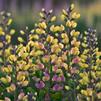
|
Baptisia 'Pink Truffles'Indigo, False
Selected for its compact habit and unique pink flowers, ‘Pink Truffles’ is a novel new color for Baptisia. Clear soft pink blossoms with a pale yellow keel are produced on pretty spikes in late spring, the perfect color to complement other spring bloomers like peonies and bleeding hearts. As the flowers age, they take on lavender tones.
Because of its shorter stature, you will easily find room to fit this long lived perennial in your flower garden and it will be easier to manage in containers at retail.
[
More Info
]
|
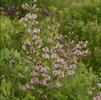
|
Baptisia 'Purple Smoke'Indigo, False
Large spikes of blue-purple lupine-like flowers held aloft on charcoal gray stems. Gray-green, clover-like foliage. Black seed pods form after flowering.
[
More Info
]
|
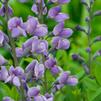
|
Baptisia 'Sparkling Sapphire'Indigo, False
This newest addition to the Baptisia DECADENCE® series will stop you in your tracks with its intensely vibrant flower color. You’ll enjoy its vivid violet blue blossoms in late spring, around the same time as peonies and COLOR SPIRES® Salvia.
Because of its shorter stature, you will easily find room to fit this perennial in your flower garden. Seed pods begin to develop immediately after the plant is finished flowering, deepening in color and persisting into fall.
Baptisia is easy to grow and will thrive with little maintenance. There are many potential applications in the landscape including meadow plantings, as a backdrop in borders, or as a specimen. Plants are very long-lived once established.
[
More Info
]
|
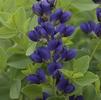
|
Baptisia 'Twilite Prairieblues'Indigo, False
Unique deep violet-purple flowers highlighted by a lemon-yellow keel held above handsome foliage. Inflorescences can be up to 32 inches long!
[
More Info
]
|
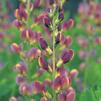
|
Baptisia 'Vanilla Cream'Indigo, False
Hybridized and selected for its shorter, more compact habit, this new Baptisia grows into a very well-branched, full, rounded clump of attractive grey-green foliage. Unlike many native species, this cultivar has a refined, cultivated look about it that makes it worthy of any city garden.
Also unique to this cultivar, the newly emerging foliage is a beautiful shade of bronze which contrasts nicely with other spring green perennials planted nearby in the garden.
From late spring into early summer, 10” long spikes of pastel yellow buds open to creamy vanilla colored flowers on strong scapes. It’s the perfect color for a spring blooming perennial. Seed pods begin to develop immediately after the plant is finished flowering, deepening in color and persisting into fall.
[
More Info
]
|
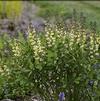
|
Baptisia alba (syn. B. leucantha)Indigo, False
White flowers with black stems in May into early June. Slightly weeping habit. Native.
[
More Info
]
|
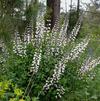
|
Baptisia australisIndigo, False
[
More Info
]
|
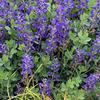
|
Baptisia bracteata (syn. B. leucophaea)Indigo, False
Creamy yellow, pea-like flowers on arching stems. Ornamental black seed pods. Handsome blue-green foliage. A long-lived, trouble-free native of our prairies and open woods. May need support if grown in less than full sun.
[
More Info
]
|
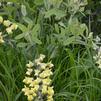
|
Belamcanda chinensisLily, Blackberry
Sword-shaped, iris-like leaves give rise to branched flower stems. Each stem holds many, 2" orange flowers speckled with red. Seed pods split open to reveal shiny black seeds that resemble blackberries.
[
More Info
]
|
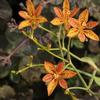
|
Belamcanda chinensis 'Freckle Face'Lily, Blackberry
[
More Info
]
|
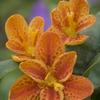
|
Belamcanda chinensis 'Hello Yellow'Lily, Blackberry
Sword-shaped, iris-like leaves precede a multitude of midsummer spotless yellow, star-shaped blooms. Pear-shaped tan seed pods open to reveal clusters of blackberry-like seeds, which persist into winter. More compact than the species.
[
More Info
]
|
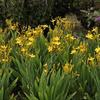
|
Bouteloua curtipendulaGrass, Sideoats Grama
Narrow leaves form compact clumps that turn an attractive gold in autumn with interesting reddish orange flowers and seed heads that are carried to one side of the stem. Attractive to birds and very drought tolerant.
[
More Info
]
|
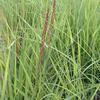
|
Bouteloua gracilisGrass, Blue Grama
[
More Info
]
|
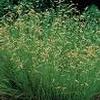
|
Brunnera macrophylla 'Sterling Silver'Bugloss, Siberian
Sterling Silver Brunnera emerges in spring with large heart-shaped, variegated leaves that provide much-desired brightness in the shade garden. Sprays of tiny baby blue, forget-me-not type flowers float above the sturdy, heat-tolerant foliage.
Brunneras are classic perennials that are treasured for their shade tolerance and lovely blooms. They make a fantastic groundcover, though the variegated forms may be slower to spread than the species. Try growing them in containers too so they will be close at hand when you want to snip a few blooms for a spring bouquet.
[
More Info
]
|

|
Buddleia 'Crown Jewels'Butterfly Bush
Sharply contrasting, magenta purple flowers sparkle like jewels against the dense, golden foliage, pointing skyward on branched stems from late summer through early fall. Secondary flowers extend the show even further into fall.
Butterfly Bushes have certainly earned their place in the garden over the years, and its easy to see why. Just when we need a breath of fresh air in the late summer heat, they happily burst into bloom. At a time when many other plants are already spent, buddleias are just beginning their show. Their passive coloring and texture makes a wonderful backdrop for perennials, and you'll love the butterflies, bees, and hummingbirds that flock to their honey-scented blossoms.
[
More Info
]
|
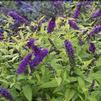
|
Buddleia 'Glass Slipper'Butterfly Bush
‘Glass Slippers’ forms a relatively low, wide spreading, tightly knit cushion topped with pale periwinkle blue blossoms held on silvery, branched stems from late summer into early fall. Secondary flowers extend the show further into fall.
Suitable for Cinderella’s garden and all other gardening princesses!
Butterfly Bushes have certainly earned their place in the garden over the years, and its easy to see why. Just when we need a breath of fresh air in the late summer heat, they happily burst into bloom. At a time when many other plants are already spent, buddleias are just beginning their show. Their passive coloring and texture makes a wonderful backdrop for perennials, and you'll love the butterflies, bees, and hummingbirds that flock to their honey-scented blossoms.
[
More Info
]
|
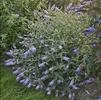
|
Buddleia 'Grand Cascade'Bush, Butterfly
Enormous panicles full of lovely lilac flowers cascade downard, giving this shrubby perennial a distinct look while in bloom. Grand Cascade's panicles are 12'14" long and 4" thick, wow! Early fall blooms that persist a long time.
[
More Info
]
|

|
Buddleia 'Little Angel'Butterfly Bush
Although this Buddleia has a shorter stature, its extremely dense, compact habit demands your attention in the garden. Very long 10-12" pure white flower panicles appear above the gum drop-like habit a few weeks sooner than you would expect for a Butterfly Bush. Although the best blooming power is in its initial bloom in mid to late summer, secondary blooms will extend the flowering season. In the HUMDINGER Collection, a group of compact and earlier blooming Buddleias.
[
More Info
]
|
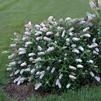
|
Buddleia 'LO AND BEHOLD Blue Chip'Butterfly Bush
This is a breakthrough variety of buddleia with all the fragrance and butterfly appeal of traditional varieties in a small, easy to maintain package. Stays under three feet tall without any pruning, and blooms continuously from June to September without deadheading. It is frost tolerant, non-invasive and very easy to grow.
[
More Info
]
|
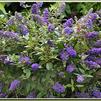
|
Buddleia 'Magenta Munchkin'Butterfly Bush
You’ll find this munchkin welcome in your sunny landscape because of its shorter stature and earlier blooming. 7-8” fuchsia red flowers have lighter centers on each individual flowers that look like eyes from afar. This floriferous variety will produce tons of flower panicles when in bloom. The low, rounded, ball-shaped habit has medium green foliage.
The word “humdinger” is defined as “something that is very impressive or exciting.” That word definitely applies to this new collection of Buddleia! This collection features five new varieties of Butterfly Bush, each blooming a few weeks earlier than the members of the MONARCH® Collection. In addition to blooming starting in midsummer, each of these varieties has a compact habit and shorter stature. garden!
[
More Info
]
|
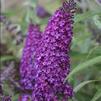
|
Buddleia 'Orchid Annie'Butterfly Bush
Totally unlike the tall and leggy Buddleia of the past, ‘Orchid Annie’ maintains a compact, refined habit. 8” orchid purple flower panicles appear above a perfect rounded shrub a few weeks sooner than you would expect for a Butterfly Bush. Although the best blooming power is in its initial bloom, this beauty will bloom on shorter secondary panicles well into early fall.
The word “humdinger” is defined as “something that is very impressive or exciting.” That word definitely applies to this new collection of Buddleia! This collection features five new varieties of Butterfly Bush, each blooming a few weeks earlier than the members of the MONARCH® Collection. In addition to blooming starting in midsummer, each of these varieties has a compact habit and shorter stature.
[
More Info
]
|
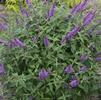
|
Buddleia 'Prince Charming'Butterfly Bush
Part of the MONARCH collection, ‘Prince Charming’ is truly a color break for the Buddleia genus. 10" long flower spikes will stun you with their bright cerise pink color. Compared to ‘Queen of Hearts’, ‘Prince Charming’ is closer to raspberry pink than purple. In mid to late summer, its upright, gumdrop shaped habit is covered with intensely colored flowers and blooms for many weeks.
Butterfly Bushes have certainly earned their place in the garden over the years, and its easy to see why. Just when we need a breath of fresh air in the late summer heat, they happily burst into bloom. At a time when many other plants are already spent, buddleias are just beginning their show. Their passive coloring and texture makes a wonderful backdrop for perennials, and you'll love the butterflies, bees, and hummingbirds that flock to their honey-scented blossoms.
[
More Info
]
|
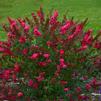
|
Buddleia 'Queen of Hearts'Butterfly Bush
The vibrant magenta red flowers of this new selection are sure to capture the hearts of gardeners everywhere, and the butterflies and hummingbirds will love them too! Large 7-9” long panicles are produced from the top of the plant to the bottom, pointing upward and outward on all sides in late summer and early fall. Smaller secondary flowers extend the show.
In addition to its heavy flower production, this plant is also quite short and compact, forming a full, rounded clump that is just a bit wider than it is tall. It is the perfect plant for adding a hot splash of color to the landscape late in the season.
Butterfly Bushes have certainly earned their place in the garden over the years, and its easy to see why. Just when we need a breath of fresh air in the late summer heat, they happily burst into bloom. At a time when many other plants are already spent, buddleias are just beginning their show. Their passive coloring and texture makes a wonderful backdrop for perennials, and you'll love the butterflies, bees, and hummingbirds that flock to their honey-scented blossoms.
[
More Info
]
|
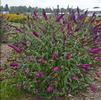
|
Calamagrostis acutiflora 'Avalanche'Grass, Feather Reed
[
More Info
]
|
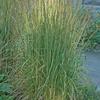
|
Calamagrostis acutiflora 'Eldorado'Grass, Feather Reed
Narrow green leaves variegated with a bright gold midrib. Similar to 'Karl Foerster' with its distinct upright clumping habit and attractive feathery plumes from early summer through fall. PPAF
[
More Info
]
|
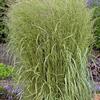
|
Calamagrostis acutiflora 'Lightning Strike'Variegated foliage; white centers and green edges on 3 foot plants.
[
More Info
]
|

|
Calamagrostis arundinacea 'Karl Foerster'Grass, Feather Reed
[
More Info
]
|
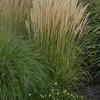
|
Calamagrostis arundinacea 'Overdam'Grass, Feather Reed
[
More Info
]
|
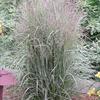
|
Calamagrostis brachytrichaGrass, Korean Feather Reed
Clump-forming, warm season grass with bright green leaves reaching about 2 feet. In late summer blooms emerge with a pink tint and reach 3 to 4 feet. The feathery flowers fade to cream in fall and finish in a straw color in winter. A graceful addition to the shade or part shade garden! Will also tolerate sun with sufficient moisture. One of the few flowering grasses that is happy in the shade. Wonderful for cut flowers.
[
More Info
]
|
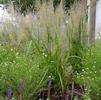
|
Calamintha nepeta 'Blue Cloud'Calamint
A trouble-free plant whose leaves smell strongly of mint. The small, glaucous green leaves resemble those of Nepeta. Beginning in early summer, tiny, tubular, pale lavender-blue flowers are produced in profusion on upright spikes just above the foliage. Their sweet nectar attracts butterflies, hummingbirds, and bees. This plant makes a great filler in the border garden and can also be used as an edging.
[
More Info
]
|
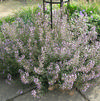
|
Calamintha nepeta 'Montrose White'Calamint
Plumes of delicate white flowers float over shiny mint-scented foliage June through October. Dense, mat forming foliage makes good edging plant. Excellent habit; stays upright without flopping. Heat and drought tolerant.
[
More Info
]
|
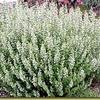
|
Calamintha nepeta ssp. nepetaCalamint
Plumes of delicate light blue flowers float over shiny mint-scented foliage from early summer to fall. Use in rock gardens, herb gardens and perennial borders. Grow in full sun with good drainage.
[
More Info
]
|
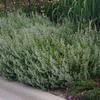
|
Callicarpa americanaBeautyberry, American
[
More Info
]
|

|
Callirhoe bushiiPoppy Mallow, Bush'S
Cup shaped magenta flowers bloom June through August. Rambling flower stems are more erect than those of the similar C. inbolucrata. Long tap root provides good drought tolerance buts makes transplanting of established plants more difficult.
[
More Info
]
|
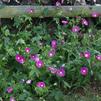
|
Callirhoe involucrataPoppy Mallow, Purple
Showy, cup-shaped magenta flowers bloom June through frost. Foliage forms trailing stems that forms excellent ground cover or hangs over walls. Drought tolerant.
[
More Info
]
|
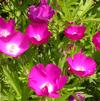
|
Campanula poscharskyana 'Blue Waterfall'Bellflower, Serbian
Vibrant violet-blue, star-shaped flowers cover plant in May and June. Prostrate sprawling foliage forms a low mounding ground cover. Tolerant of Midwest heat and humidity. May repeat bloom.
[
More Info
]
|

|
Campsis radicansTrumpet Vine
Woody vine with root-like holdfasts that attaches to any surface. Hummingbirds feed on nectar produced by clusters of orange-red trumpet-shaped flowers from July-September. Brown seed pods, up to 6" long form in late summer. Leaves are lustrous dark green.
[
More Info
]
|

|
Carex albicansSedge, Whitetinge
[
More Info
]
|
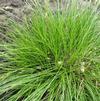
|
Carex amphibolaSedge, Creek
Compact, clump forming sedge with shiny, semi-evergreen foliage. Vigorous grower. Widely adaptable, preferring dry to moderate moisture conditions. A Midwest native.
[
More Info
]
|
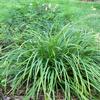
|
Carex annectensSedge, Yellow Fruited
Missouri Native sedge with attractive yellow flower spikelet's and compact tufts of fine foliage. Flowers form in May, seeds in June. aka C. brachyglossa
[
More Info
]
|
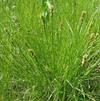
|
Carex bicknelliiSedge, Bicknell'S
Carex bicknellii can be found in North America from Eastern half of Canada and south to Kansas. It grows in dry and moist prairies, open woodlands and rocky areas. This Carex tolerates dry locations better than many sedges. It is useful for rain gardens, meadows, and areas where drought-tolerant plants are required. Bicknell’s Sedge grows in tufts of green, narrow, grasslike foliage and spreads by rhizomes. Copper-colored, oval-shaped seedheads appear in late spring giving it one of its common names. Carex bicknellii is named in honor of Eugene Pintard Bicknell (1859-1925), who is known for his keen observations of plant and animal life.
[
More Info
]
|
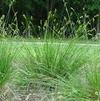
|
Carex breviorSedge, Shortbeak
A common sedge able to grow almost anywhere, most often found in the wild in dry, disturbed areas. Also called Plains Oval Sedge, Shortbeak Sedge actively grows during the spring and fall when soil temperatures are cool like most sedges (cool-season growers). In summer triangular leafy stems rise above low tufts of narrow grass-like foliage. The culms bear prickly green oval spikelets that transition into golden brown seed clusters.Leaf blades are usually about 1’ long and 1/8” wide. The leaf sheaths at the base of each blade has an unusual whitish color and an almost glassy appearance.
In late spring multiple leafy culms rise above the foliage to 3-4’. Each culm bears 2-6 oval flower spikes. Each green spikes contain upper pistillate and lower staminate florets. The spikelets are tapered at the base and bluntly pointed at the tip. The flowers transition into reddish brown summer seed spikes.
Plants are 1-4’ tall with an equal spread.
[
More Info
]
|
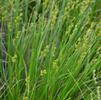
|
Carex eburneaSedge, Bristle-Leaved
Soft, thread-like, green foliage forms a spherical clump. Insignificant whitish-green flowers in April. Occurs naturally in limestone outcrops but also tolerates acid conditions.
[
More Info
]
|
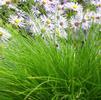
|
Carex elata 'Bowles Golden'Sedge, Golden
Bright gold foliage changing to light green later in the season. Requires consistent moisture to thrive. Provides bright accent in the shade garden.
[
More Info
]
|
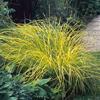
|
Carex flaccospermaSedge, Blue Wood
Evergreen sedge forms attractive clumps of narrow, blue-green leaves. Thrives in moist conditions but will tolerate drought. An American native groundcover for shade. Greenish-white flower is insignificant.
[
More Info
]
|
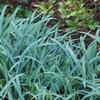
|
Carex frankiiSedge, Frank'S
Hardy grass-like plant with green foliage. Bristle-like, brown seed heads in May to September. Native to floodplain woodlands. AKA Bristly Cattail Sedge.
[
More Info
]
|
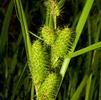
|
Carex glauca 'Blue Zinger'Sedge, Blue
Steel blue semi-evergreen grass-like foliage. Colonizes to form a graceful ground cover. Thrives in moist soil but tolerates some drought. Provides winter interest.
[
More Info
]
|
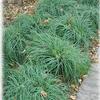
|
Carex grayiSedge, Bur
Attractive, evergreen pleated foliage is lime green in full sun and dark green in part shade. Spiked flowers in May form star-like seed heads. A Midwest native.
[
More Info
]
|
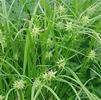
|
Carex hachijoensis 'Evergold'Sedge, Variegated
Bright, creamy yellow leaves with green margins form dense graceful clumps. Semi-evergreen foliage provides winter interest. Prefers moist, rich soil but will tolerate some drought.
[
More Info
]
|
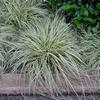
|
Carex hystericinaSedge, Bottlebrush
These are wetland sedges with prickly spikelets. The narrow leaves are light or medium green and arranged in loose or open tufts. In late spring triangular culms rise above the foliage to 3’ bearing the green bottlebrush shaped spikelets and the resulting brown seed spikes. This cool season sedge flourishes in sun or part sun but goes dormant during hot weather. Plants favor wet or consistently moist soils and tolerate seasonal flooding. Foliage is 2' tall with flower 3'.
[
More Info
]
|

|
Carex laxiculmus 'BUNNY BLUE Hobb'Sedge, Bunny Blue
Evergreen sedge has silvery blue foliage forming dense rounded clumps. Insignificant flower spikes appear in late spring. A strong growing clump former and good naturalizer.
[
More Info
]
|

|
Carex morrowii 'Ice Dance'Sedge, Variegated Japanese
Clear white margins on dark green leaves form compact, dense, colonizing tufts. Establishes quickly. Outstanding glasslike plant for the shade garden! Provides year round interest. An excellent, very winter hardy alternative to variegated Liriope.
[
More Info
]
|
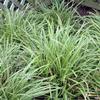
|
Carex muskingumensisSedge, Palm
A dense, clump-forming sedge which is grown for its foliage effect. Produces rigid, erect stems to 20" tall with 8" long, pointed, grass-like, light green leaves radiating from the stem tops. Commonly called palm sedge since the leaves somewhat superficially resemble miniature palm fronds. A Missouri native which is found most often in wooded swamps and on wooded flood plains of rivers. Spread by rhizomes and self-seeding. Insignificant flowers appear in May on terminal spikes which are not showy but are noticeable and of some interest and persist throughout the summer. Foliage promptly turns yellow after frost. Species is named for the Muskingum River in Ohio.
[
More Info
]
|
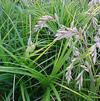
|
Carex muskingumensis 'Little Midge'Sedge, Palm
Finley textured bright green leaves forms dense clumps. Dwarf selection maintains a neat and very uniform growth habit. Prefers consistently moist and fertile soil. Spreads by rhizomes.
[
More Info
]
|
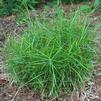
|
Carex oshimensis 'Everest'Sedge, Variegated
White edged sport of Evergold. Striped evergreen foliage with distinctive silvery white edges that forms attractive 12- to 18-inch mounds. Once established, it offers good tolerance to dry conditions. Great for containers.
[
More Info
]
|
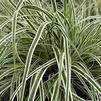
|
Carex pensylvanicaSedge, Pennsylvania
A compact sedge with arching, semi-evergreen, fine-texture foliage. An excellent shade to part shade groundcover. Tolerant of tough urban conditions, especially under trees. An American native.
[
More Info
]
|
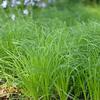
|
Carex praegracilisSedge, Tollway
[
More Info
]
|
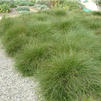
|
Carex radiataSedge, Straight-Styled Wood
Fine textured, grass-like, medium green foliage forms a tidy clump. A drought tolerant groundcover for shady sites. A Midwest native.
[
More Info
]
|
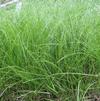
|
Carex strictaSedge, Tussock
A wetland native that grows in 2-3' tall clumps about 2' wide. As old leaves die, they build up around the living plant, making a "tussock" or little hill. It grows in or near water and spreads by rhizomes.
[
More Info
]
|
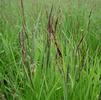
|
Carex testaceaSedge, Orange
Graceful arching mounds of fine-textured pale olive green leaves in the summer, turning to rich russet-brown in cooler temperatures.
[
More Info
]
|

|
Carex vulpinoideaSedge, Fox
Missouri native sedge grows on moist open ground in swamps, wet prairies or near water, is one of the most abundant sedges in the state. Foliage consist of narrow grass-like leaf blades. The seed heads, which spray out attractively from the center of the clump, resemble a fox's tail but are short-lived.
[
More Info
]
|
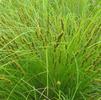
|
Ceanothus americanusNew Jersy Tea Shrub
[
More Info
]
|

|
Centaurea montana 'Blue'Bachelor'S Button, Perennial
Cornflower-blue, fringed blooms that attract butterflies like magnets. Blooms in June and July.
[
More Info
]
|

|
Centranthus ruber 'Coccineus'Valerian
A profusion of cherry red flowers on top of glaucous foliage with a spreading habit. Cut back after the first bloom to encourage repeat bloom. Prefers well-drained, infertile, alkaline soil.
[
More Info
]
|
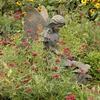
|
Cephalanthus occidentalisButtonbush
Blooms late June or July.
[
More Info
]
|

|
Ceratostigma plumbaginoidesLeadwort (Pumbago)
Long blooming gentian blue flowers from late June or July through frost. Glossy green leaves turn reddish bronze in autumn. Excellent, long-lived groundcover tolerates a wide range of conditions. Not evergreen. An excellent ground cover.
[
More Info
]
|
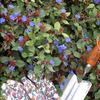
|
Chasmanthium (syn Uniola) latifoliumGrass, Northern River Oats
Upright clumps of bamboo-like foliage. Green foliage turns copper in fall and brown in winter. Attractive flat flower spikes hang down from flowering stems. Prefers light shade and damp locations. Can self-sow.
[
More Info
]
|
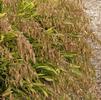
|
Chelone glabraTurtlehead
White spike flowers with a tinge of pink appear August through October. Flowers look like a turtle's head. Deep green foliage on upright stems looks good all season. A Midwest native.
[
More Info
]
|
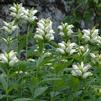
|
Chelone glabra 'Black Ace'Turtlehead
Hooded, white, snapdragon-like flowers bloom August to October. Flowers resemble the head of an open mouthed turtle. Dark green foliage. Usually grows 3-4' but may grow to 6' in optimal conditions.
[
More Info
]
|
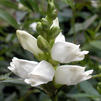
|
Chelone lyonii 'Hot Lips'Turtlehead
Dense spikes of rose red flowers for four weeks in late summer. Foliage is deeper green than the species. Stems are red and new spring growth has a bronze tint.
[
More Info
]
|
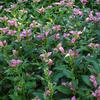
|
Chelone obliquaTurtlehead
[
More Info
]
|
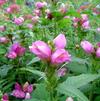
|
Chelone obliqua 'Tiny Tortuga'Turtlehead
A tiny turtlehead with all the flower power of its taller brothers, this native cultivar features uniquely shaped, hot pink blooms atop lustrous dark green leaves with a bronzy sheen. Flowers reminiscent of turtles' mouths persist from mid-summer into fall, a favorite of butterflies but distasteful to deer. Its very compact habit is a great choice for mixed containers, or let it spread ever so slowly in the landscape along pond and stream edges, rain gardens or perennial borders.
[
More Info
]
|
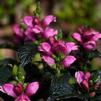
|
Clematis 'Asao'Clematis
Huge rose pink flowers with white central bars and yellow stamens are highly fragrant. Largest flowers are 6-8" in May and June. Smaller flowers may appear in August and Sept. Attractive seed heads follow flowers and make excellent cut flowers.
[
More Info
]
|
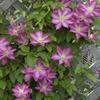
|
Clematis 'Bee's Jubilee'Clematis
[
More Info
]
|
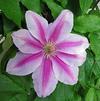
|
Clematis 'Belle of Woking'Clematis
Large silvery-mauve to white double flowers fade to silvery blue. Double flowers are 4-6" wide on old growth in May and June. Single flowers may appear on new growth in September and October.
[
More Info
]
|
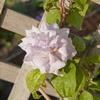
|
Clematis 'Candida'Clematis
Huge pure white flowers with yellow stamens. Blooms are 6-9" June through July with slightly smaller flowers August and September. Long blooming variety.
[
More Info
]
|
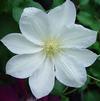
|
Clematis 'Dr. Ruppel'Clematis
Huge pale orchid, wavy petals with a wide carmine central bar and yellow stamens. Largest flowers are 6-8"on old growth in May and June. Smaller flowers may appear on new growth in August and September.
[
More Info
]
|
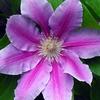
|
Clematis 'Duchess of Edinburgh'Clematis
Large fully double white rosette flower may be touched with green. Double flowers are 4-6" on old growth in May and June. Single flowers may appear on new growth in August and September
[
More Info
]
|
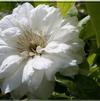
|
Clematis 'Fireworks'Clematis
Huge bicolor flowers are bright purple with a wide reddish-pink bar and contrasting purple tipped stamens. Largest flowers are 6-8" on old growth May and June. Smaller flowers in August and September.
[
More Info
]
|
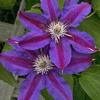
|
Clematis 'H. F. Young'Clematis
A compact, free-flowering selection producing large blue flowers with pale yellow anthers. Produces attractive seed heads.
[
More Info
]
|

|
Clematis 'Henryi'Clematis
Huge pure white flowers have purple anthers. Blooms are 6-8" May and June with slightly smaller flowers July thru September. Vigorous Grower. Long blooming variety.
[
More Info
]
|
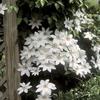
|
Clematis 'Miss Bateman'Clematis
Large creamy-white flowers have chocolate-red stamens. Blooms are 4-6" May and June with slightly smaller flowers July to September. Heirloom variety. Free flowering. Long blooming. One of the first large flowering varieties to bloom.
[
More Info
]
|
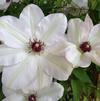
|
Clematis 'Montana Rubens'Clematis
Wonderful summer color from sweetly fragrant, soft pink, anemone-like flowers. This is one of the largest Clematis vines, often used for covering fences or sheds. Up to 20 ft. An intriguing ground cover or charming rambler, when allowed to sprawl or climb through informal shrub borders. New growth has purplish coloring, maturing to bronze-green. Deciduous.
[
More Info
]
|
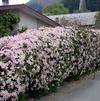
|
Clematis 'Multi Blue'Clematis
Large deep purplish-blue flowers have a light silvery blue central bar. Double flowers are 4-6" on old growth in May and June. Single flowers appear August through October. Performs best in light shade.
[
More Info
]
|
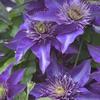
|
Clematis 'Nelly Moser'Clematis
Pastel pink flowers with red bar. Blooms in May, June and September on new and old wood.
[
More Info
]
|
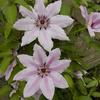
|
Clematis 'Picardy'Clematis
Very free flowering red/purple clematis. Clematis Picardy is particularly suitable for container growing.Enjoy the deep reddish purple blooms of Evipo024 Clematis Picardy™ throughout the summer. The 4" red/purple blooms surround the light brown center and take on an almost two tone look as the flowers age. Picardy™ Clematis is the perfect specimen for container gardening, standing only 4 foot tall it is just the right height for a patio or small garden. This free flowering Clematis vine should give you color throughout the summer months. Picardy™ is noted by many gardeners as one of their favorite container options. Clematis add vertical interest to gardens, landscapes and patio gardens.
[
More Info
]
|
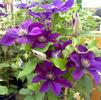
|
Clematis 'Pink Champagne'Clematis
[
More Info
]
|
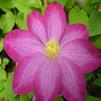
|
Clematis 'Rooguchi'Clematis
Cobalt-blue 2" bells. Free flowering May through September. Prune Group 3.
[
More Info
]
|
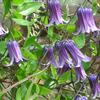
|
Clematis 'Rouge Cardinal'Clematis
Large crimson-red flowers have contrasting yellow anthers and rounded petals. Blooms are 4-6" June through July with slightly smaller blooms August and September. Long blooming variety. Also known as Red Cardinal.
[
More Info
]
|
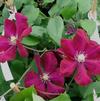
|
Clematis 'Ruutel'Clematis
Huge magenta-red to pink flowers have black anthers. Blooms are 6-8" May through June with slightly smaller flowers July to October. Vigorous grower. Heavy bloomer. Compact size is good for containers.
[
More Info
]
|
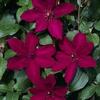
|
Clematis 'The President'Clematis
Huge, rich purple-blue flowers have dark reddish-purple anthers. Blooms are 6-8" in May and June with slightly smaller flowers July to September. Attractive seed head. Vigorous. Long blooming. Easy to grow.
[
More Info
]
|
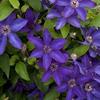
|
Clematis terniflora (syn paniculata)Clematis, Sweet Autumn
Masses of small pure white, highly fragrant blooms smother plant in late August and September. Vigorous twining vine grows rapidly. Will sprawl to form dense groundcover. Tolerates shade. Attractive fluffy seed head follows flower. May aggressively self-seed. Also know as C. paniculata.
[
More Info
]
|
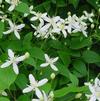
|
Clematis texensis 'Princess Diana'Clematis
Tulip shaped,3",dark pink flowers have light pink margins and bright yellow anthers. Flowering starts in June and continues into September. Attractive seed heads. May be late to emerge. Tolerates heat and humidity. Cross between C. texensis and C.Bees Jubilee
[
More Info
]
|

|
Conoclinium coelestinumMist Flower (Wild Ageratum)
Blooms September through October. (FKA Eupatorium coelestinum)
[
More Info
]
|
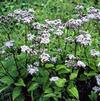
|
Convallaria majalisLily Of The Valley
Tulip-like leaves coddle fragrant, white, bell-shaped flowers bloom late April and early May followed by tiny orange berries. Excellent ground cover for shade.
[
More Info
]
|
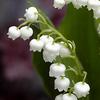
|
Coreopsis 'Daybreak'Coreopsis (Tickseed)
A shower of cheerful bicolor blossoms with a prominent orange-red center and fringed, gold petal tips appear over an extremely long period, from early summer through early fall in the Midwest. Since the flowers are sterile, they just keep on coming all season long without the need for deadheading.
It forms a compact, basal mound of highly disease resistant, dark green foliage. A midseason shearing will keep this plant looking its best all season.
If you’ve been pleased with the performance of Big Bang™ Coreopsis like ‘Mercury Rising’, you might also like to try the Li'l Bang™ series from the same breeder, master hybridizer Darrell Probst. These naturally compact cultivars exhibit the same great disease resistance and long bloom time (commencing a bit earlier than the Big Bangs) but measure in at about half the height. They are the perfect size for container gardening, rock gardens, and the front of the border.
[
More Info
]
|
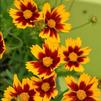
|
Coreopsis 'Gold & Bronze UPTICK'Tickseed
Golden yellow flowers with dark red centers adorn the small, neat mound of the UPTICK Coreopsis series known for large, long-lasting blooms.
[
More Info
]
|

|
Coreopsis 'Jethro Tull'Coreopsis (Tickseed)
Golden yellow flowers with consistently fluted petals are produced atop a compact mound of foliage. Very floriferous! PPAF
[
More Info
]
|

|
Coreopsis 'UPTICK Cream & Red'Tickseed
Cream flowers with dark red centers adorn the small, neat mound of the UPTICK Coreopsis series known for large, long-lasting blooms.
[
More Info
]
|
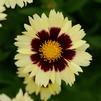
|
Coreopsis 'Yellow & Red UPTICK'Tickseed
Golden yellow flowers with dark red centers adorn the small, neat mound of the UPTICK Coreopsis series known for large, long-lasting blooms.
[
More Info
]
|

|
Coreopsis grandiflora 'Early Sunrise'Coreopsis (Tickseed)
A profusion of brilliant golden-yellow, semi double, flowers flushed orange-yellow at the center May through August. A 1989 All-America Selection winner.
[
More Info
]
|
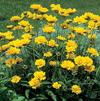
|
Coreopsis grandiflora 'Presto'Coreopsis (Tickseed)
Dwarf, mounding habit with large golden-yellow, semi-double to double flowers May through August.
[
More Info
]
|

|
Coreopsis Grandiflora 'Sunkiss'Coreopsis, Tickseed
Coreopsis 'Sunkiss' has the brightest yellow flowers and largest central blotching of any grandiflora type and they are produced in abundance on compact well-branching plants, from late spring right through to the hard frosts of autumn. What's more, this hardy perennial will bloom in your garden in the first year; unlike older coreopsis types - there's no waiting for 'Sunkiss' to perform. Inbuilt heat tolerance makes this the perfect addition to sunny hot spots in the garden, where other plants might frazzle in the heat of the summer sun.
[
More Info
]
|
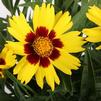
|
Coreopsis grandiflora 'SunKiss'Tickseed
The big standout for this coreopsis is its huge, nearly 3" wide flowers--yellow with wine-red centers. According to the breeder, this is the brightest yellow flower with a large blotch available as a seed strain. Heat-tolerant, easy to grow, floriferous plant.
Coreopsis is easy to grow, making it a good choice for beginners. One plant will provide you with long-lasting cut flower bouquets all summer long.
[
More Info
]
|
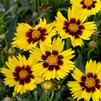
|
Coreopsis lanceolataCoreopsis, Lance-Leaf
Showy, single, gold-yellow flowers on tall stems in May and June.
[
More Info
]
|
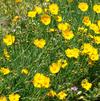
|
Coreopsis palmataCoreopsis, Prairie
Pale yellow flowers--much softer in color than those of our other native coreopsis--are carried on stiff, upright stems for several weeks, beginning in late spring. Spreads by rhizomes and seed, eventually forming large colonies.
[
More Info
]
|
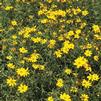
|
Coreopsis tripterisCoreopsis, Tall
[
More Info
]
|
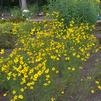
|
Coreopsis verticillata 'Crème Brulee'Coreopsis, Thread-Leaf
Soft yellow blooms on compact mounds of bright green, threadleaf foliage. Similar to 'Moonbeam' but with larger flowers and improved mildew resistance. PPAF
[
More Info
]
|
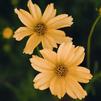
|
Coreopsis verticillata 'Curry Up'Coreopsis, Threadleaf
This Coreopsis in the SIZZLE & SPICE series has a bold and vibrant color that will catch your eye from a distance. 1.5” wide, golden yellow flowers with clear, dark red eyes have wider petals. The rounded, compact habit has excellent flower coverage, looking like a blanket of flowers. Bright green, threadleaf foliage.
Members of this bright-colored collection have compact, rounded habits that are covered with flowers from early to late summer.
Coreopsis is easy to grow, making it a good choice for beginners. One plant will provide you with long-lasting cut flower bouquets all summer long.
[
More Info
]
|
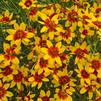
|
Coreopsis verticillata 'Hot Paprika'Coreopsis, Threadleaf
This beautiful red Coreopsis in the SIZZLE & SPICE series forms a compact, rounded, uniform mound. 1.5”, rich, deep red flowers cover the bright green, threadleaf foliage for a showy midsummer display.
Members of this bright-colored collection have compact, rounded habits that are covered with flowers from early to late summer.
Coreopsis is easy to grow, making it a good choice for beginners. One plant will provide you with long-lasting cut flower bouquets all summer long.
[
More Info
]
|
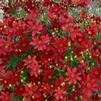
|
Coreopsis verticillata 'Moonbeam'Coreopsis, Thread-Leaf
Long-blooming, pale lemon flowers on mounds of needlelike foliage. [PPA-1992]
[
More Info
]
|
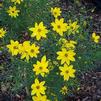
|
Coreopsis verticillata 'Red Hot Vanilla'Coreopsis, Threadleaf
Cream petals with red eyes that get bigger as florescence ages. SIZZLE AND SPICE: compact, rounded habit; early to late summer blooms in bright tones.
[
More Info
]
|

|
Coreopsis verticillata 'Red Satin'Coreopsis, Thread-Leaf
Deep wine red to ruby red flowers with an orange center measure about 1 ½” across and completely cover the deep green, threadleaf foliage. Since the flowers are sterile, they appear over a long period from early through late summer and if cut back, the plants can be encouraged to rebloom until frost.
Compared to other threadleaf types, this plant has darker green foliage and is more clump forming, producing fewer rhizomes. Compared to ‘Mercury Rising’, this plant has finer threadleaf foliage, solid red flowers that do not become “frosted” in the heat, and a tighter mounding habit.
'Red Satin' has proven to be hardy to zone 5, a permanent threadleaf form as its series name suggests.
[
More Info
]
|
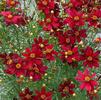
|
Coreopsis verticillata 'Sassy Saffron'Coreopsis, Threadleaf
Cheery yellow flowers with deep maroon, nearly black centers atop classic threadleaf foliage. SIZZLE AND SPICE: compact, rounded habit; early to late summer blooms in bright tones.
[
More Info
]
|

|
Coreopsis verticillata 'Zagreb'Coreopsis, Thread-Leaf
Bright golden yellow flowers on upright compact, vase-shaped plants with airy, fernlike foliage. Long bloom time. Easy to grow. Long lived species of coreopsis. Drought tolerant once established.
[
More Info
]
|
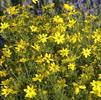
|
Cornus drummondiiDogwood, Rough
[
More Info
]
|

|
Corylus americanaFilbert, American
[
More Info
]
|

|
Dalea (syn Petalosteum) purpureaClover, Purple Prairie
A native Missouri prairie clover which occurs in glades, rocky open woods and prairies in much of the state. It features tiny purple flowers in dense, cone-like heads atop erect, wiry stems late June through September.
[
More Info
]
|
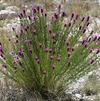
|
Delosperma 'Fire Spinner'Ice Plant
Vibrant tri-colored flowers cover the tight succulent foliage late June throught August. Bright green needle-like foliage spreads quickly to form a dense mat. Tolerates heat and drought.
[
More Info
]
|

|
Delosperma 'John Proffitt Table Mountain'Ice Plant
A succulent, semi-evergreen, mat-forming cultivar with bright fuchsia flowers from May to fall. Foliage is covered with transparent flakes that resemble pieces of ice, thus the common name.
[
More Info
]
|
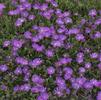
|
Delosperma congestumIce Plant
Radiant yellow, daisy-like flowers appear June through September. Succulent evergreen foliage turns maroon in autumn. Heat and drought tolerant. Excellent when massed. Tolerates light foot traffic.
[
More Info
]
|
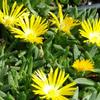
|
Dennstaedtia punctilobulaFern, Hay-Scented
A fast spreading ground cover that produces a thick mat of bright green fronds. Crushed fronds smell of hay.
[
More Info
]
|

|
Deschampsia cespitosa 'Goldtau'Hairgrass, Tufted
This lovely cultivar of Deschampsia cespitosa shares many attributes with the species: clump growing, semi evergreen, fine textured leaves, and thin stems topped with sprays of airy delicate flowers. However, Deschampsia cespitosa ‘Goldtau’ has yellowish seeds heads that turn golden in the fall and provide wonderful winter interest. Deschampsia cespitosa performs best and flowers most in cooler climates. In warmer climates, Golden Dew Tufted Hair Grass needs semi-shade and moist conditions.
[
More Info
]
|
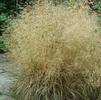
|
Dianthus 'Black Cherry Frost'Pinks
This improved variety replaces ‘Black Cherry Wild’ in the FRUIT PUNCH® Dianthus series. ‘Black Cherry Frost’ has more consistent, formal flowers than its predecessor, and fills the void of dark red flowers in the series. 1¼in, rich, semi-double velvety red flowers have a fine, serrated, near white edge. Flower stems are strong, and are produced above the silvery blue foliage. Members of the Dianthus FRUIT PUNCH® series all share the following traits: fully double, fragrant flowers, and good heat and humidity tolerance. Flowers appear in early summer, and a quick shearing after flowering will encourage them to rebloom in early fall. FRUIT PUNCH® Dianthus are just the right size to edge the front of the sunny border and use in combination containers.
[
More Info
]
|

|
Dianthus 'Cherry Vanilla FRUIT PUNCH'Pink
Cherry Vanilla Dianthus, in the FRUIT PUNCH series, burst with beautiful color contrast. Deep red double flowers have light pink, almost white, edges for a beautiful and fascinating effect.
[
More Info
]
|

|
Dianthus 'Classic Coral FRUIT PUNCH'Pinks
This beautiful coral rounds out the color palette for the FRUIT PUNCH series of semi-double to double, fragrant Dianthus with tolerance for heat and humidity.
[
More Info
]
|

|
Dianthus 'Coral Reef'Pinks
Large frilly, fully double blossoms are a rich coral color with delicately fringed, light pink to white edges. Though the flower color lightens a bit as the flowers age, they remain an attractive shade of coral rose until they are fully spent. Blooms mid summer.
The flowers are complemented by the glaucous grey-blue foliage that forms a uniform, rounded, densely compact clump and remains attractive all season.
As the series name SCENT FIRST implies, the beautiful blossoms have a strong, spicy fragrance which is even more noticeable when you cut them for your fresh bouquets. Try adding a few to your combination planters this spring.
[
More Info
]
|
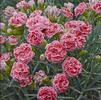
|
Dianthus 'Cranberry Cocktail'Pinks
The large flowers of ‘Cranberry Cocktail’ look and smell like mini-carnations and you can enjoy them in your garden and in cut bouquets alike. Full, 2" double hot magenta pink flowers have serrated edges, rising above its grey-green, dense foliage.
Deer resistant, low maintenance and drought tolerant, attracts butterflies, fragrant, cute cut flower—what more could one want in a perennial? The Dianthus FRUIT PUNCH® series delivers all that and more in your choice of four colors. Double flowers stand like mini carnations atop a short mound of evergreen foliage in early summer. A quick shearing after flowering will encourage them to rebloom in early fall. Dianthus is just the right size to edge the front of the sunny border and use in combination containers.
[
More Info
]
|
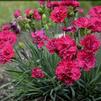
|
Dianthus 'Double Bubble'Pinks
Great big bubble gum pink color in a teeny-tiny package. Loads of classic pink double blooms cover cover these low growers!
[
More Info
]
|

|
Dianthus 'Early Bird Fizzy'Pinks
Early blooming lavender, double flowers have a maroon eye appear April through October on compact blue-green foliage. Fragrant blooms have enticing clove-like scent. Will repeat bloom if deadheaded.
[
More Info
]
|

|
Dianthus 'Early Bird Frosty'Pinks
Early blooming pure white, double flowers appear April through October on compact blue-green foliage. Fragrant blooms have enticing clove-like scent. Will repeat bloom if deadheaded.
[
More Info
]
|
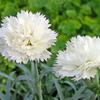
|
Dianthus 'Early Bird Radiance'Pinks
Early blooming crimson, double flowers appear April through October on compact blue-green foliage. Fragrant blooms have enticing clove-like scent. Will repeat bloom if deadheaded.
[
More Info
]
|
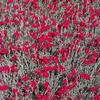
|
Dianthus 'Early Bird Sherbet'Pinks
Early blooming cherry pink, double flowers appear April through October on compact blue-green foliage. Fragrant blooms have enticing clove-like scent. Will repeat bloom if deadheaded.
[
More Info
]
|
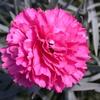
|
Dianthus 'Electric Red'Pinks
Eye-catching rich red blooms cover these low growers. A little flower with a big impact!
[
More Info
]
|
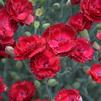
|
Dianthus 'Maraschino'Pinks
Wide cherry red flowers have dark burgundy eye. Fluffy, double flowers with deeply fringed petals have a sweet fragrance and silvery blue, spiky leaves. The foliage looks great all season, and won’t get tired in the heat of summer. Deer resistant, low maintenance and drought tolerant, attracts butterflies, fragrant, cute cut flower.
[
More Info
]
|
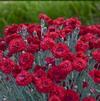
|
Dianthus 'Neon Star'Pinks
Compact, mounding plant with fluorescent pink flowers and spicy clove fragrance over evergreen, blue-gray foliage. Drought tolerant. Heaviest bloom in spring with some rebloom in autumn.
[
More Info
]
|

|
Dianthus 'Passion'Pinks
Large, fully double, fragrant flowers with smooth-edged petals open above the foliage like a bouquet of little roses. The blue-green to grey-green leaves are a bit longer than shorter varieties of Dianthus, forming a spiky clump of evergreen foliage in the landscape. blossoms have a strong, spicy fragrance which is even more noticeable when you cut a few for your fresh bouquets. Some have reported that this variety tends to bloom 2-3 weeks earlier than others in the SCENT FIRST series.
[
More Info
]
|
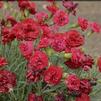
|
Dianthus 'Raspberry Ruffles FRUIT PUNCH'Pinks
Fully double raspberry-pink blooms hold their color with tenacity, making it a lovely addition to the FRUIT PUNCH series of semi-double to double, fragrant Dianthus with tolerance for heat and humidity.Will rebloom in the fall if spent blooms are sheared back.
[
More Info
]
|
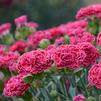
|
Dianthus 'Sweetie Pie'Pinks
The true pink, semi-double flowers are1.5" wide with a subtle darker pink eye. Incredibly floriferous: the flowers totally cover the silvery blue-green foliage when it’s in bloom.
[
More Info
]
|

|
Dianthus gratianopolitanus 'FIREWITCH Feuerhexe'Pinks
Shocking magenta-pink flowers shimmer over a dense mat of semi-evergreen blue-green foliage. Blooms heavily in May and June. Tolerates heat, humidity and some drought. 2006 Perennial Plant of the Year.
[
More Info
]
|
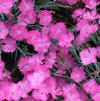
|
Diarrhena obovataBeakgrain, American
[
More Info
]
|
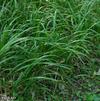
|
Dicentra spectabilisBleeding Heart, Old Fashioned
This is the old-fashioned favorite with nodding pink and white heart-shaped flowers. It is a lovely compliment to Hosta but foliage dies down in summer if temperatures are high and adequate moisture is not maintained.
[
More Info
]
|
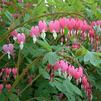
|
Dicentra spectabilis 'Alba'Bleeding Heart, Old Fashioned
Similar to D. spectabilis but with white flowers.
[
More Info
]
|
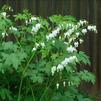
|
Dicentra spectabilis 'Gold Heart'Bleeding Heart, Old Fashioned
[
More Info
]
|
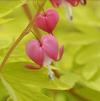
|
Digitalis grandiflora (syn ambigua) 'Carillon'Foxglove, Yellow
A tough perennial form of foxglove with upright spikes of tubular creamy-yellow flowers May through June. Compact growth habit. Deadhead to extend bloom. Tolerates clay soils.
[
More Info
]
|
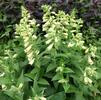
|
Digitalis purpurea 'Camelot Lavender'Foxglove
Large white flowers with lavender shading and burgundy spotting inside appear all the way around the stems for a showy display. Will rebloom if deadheaded.
[
More Info
]
|
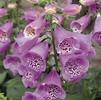
|
Digitalis purpurea 'Camelot Rose'Foxglove
Large, deep rose-pink flowers with burgundy spotting inside appear all the way around the stems for a showy display. Will rebloom if deadheaded.
[
More Info
]
|
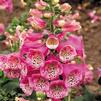
|
Dryopteris erythrosoraFern, Autumn
"Autumn Fern" refers to the coppery-orange color of the emerging fronds. Foliage matures to shiny dark green. A deciduous fern with an erect habit. A durable perennial fern for the Midwest.
[
More Info
]
|
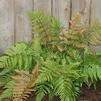
|
Dryopteris erythrosora 'Brilliance'Fern, Autumn
[
More Info
]
|
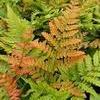
|
Dryopteris marginalisFern, Eastern Wood
Tough, adaptable evergreen fern with olive green arching fronds that grow in a vase shape. Established plants are reasonably drought tolerant. The leathery leaves of Dryopteris marginalis are a beautiful addition to the woodland garden and can form a lovely an easy to maintain groundcover. A sturdy east coast native, it forms a tidy clump that will not spread and is very tolerant of dry shade conditions once it has established. Marginal wood fern is often found in shaded crevices of rocky ledges and bluffs from Newfoundland to Georgia, west to Oklahoma and Minnesota.
[
More Info
]
|
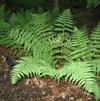
|
Echinacea 'Cheyenne Spirit'Coneflower
Everyone is talking about this new dynamic mixed color strain of Echinaceas and for good reason! It is the first of its kind offered from seed.
In our trials, we marveled at the incredible color range of these first year-flowering perennials which includes rich shades of tomato red, near-fluorescent orange, magenta, golden yellow, and white. Though the height of each color varies slightly, they are all very well-branched, bushy plants that fill out the pot nicely and have high color impact in the landscape.
[
More Info
]
|

|
Echinacea 'Coral Craze'Coneflower
Vibrant coral pink flowers fade into lavender tones over time. 5" flowers with wide petals. Bold colors on a compact, well-branched plant are the hallmarks of the EYE-CATCHER series.
[
More Info
]
|

|
Echinacea 'Green Jewel'Coneflower
Fragrant, light green flowers with green cones. Flowers hold their color as they age. Relatively short, upright habit.PP18803
[
More Info
]
|
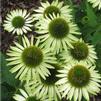
|
Echinacea 'Pica Bella'Coneflower
Compact growth habit with frisbee-shaped, watermelon pink flowers in mid to late summer; very floriferous.
[
More Info
]
|
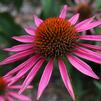
|
Echinacea 'Pixie Meadowbrite'Coneflower
Adorable pink mini-coneflowers with soft yellow center. PPAF
[
More Info
]
|
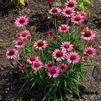
|
Echinacea 'Sombrero Adobe Orange'Coneflower
One of the best orange Echinacea to date. 2½-3", intense orange flowers will make other Echinacea pale in comparison, with a matching orange cone that really makes the color pop. Dark green foliage is completely covered with flowers. Praised for their cheerful brightly colored flowers, coneflowers are a mainstay in today's garden. Be sure to leave some spent blooms on the plants in the fall because their seeds provide winter food for finches and other birds. The dried seed heads also provide architectural interest in the winter.
[
More Info
]
|
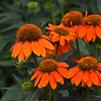
|
Echinacea 'Sombrero Lemon Yellow'Coneflower
SOMBRERO® Lemon Yellow produces rich yellow blossoms with a copper cone. The petals overlap, giving the flowers a fuller, more polished look. They are freely produced from early through late summer. SOMBRERO® Echinaceas are evenly matched for habit and timing, making them a breeze in production. They are all very well-branched, sturdy plants that bulk up quickly, do not require vernalization to bloom, and are loaded with buds for a vibrant show of color.
Praised for their cheerful brightly colored flowers, coneflowers are a mainstay in today's garden. Be sure to leave some spent blooms on the plants in the fall because their seeds provide winter food for finches and other birds. The dried seed heads also provide architectural interest in the winter.
[
More Info
]
|
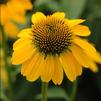
|
Echinacea 'Sombrero Salsa Red'Coneflower
SOMBRERO® Echinaceas are evenly matched for habit and timing, making them a breeze in production. They are all very well-branched, sturdy plants that bulk up quickly, do not require vernalization to bloom, and are loaded with buds for a vibrant show of color.
SOMBRERO® Salsa Red produces softly fragrant, spicy orange-red blossoms with an orange-brown cone. The petals overlap, giving the flowers a fuller, more polished look. They are freely produced from early through late summer.
Praised for their cheerful brightly colored flowers, coneflowers are a mainstay in today's garden. Be sure to leave some spent blooms on the plants in the fall because their seeds provide winter food for finches and other birds. The dried seed heads also provide architectural interest in the winter.
[
More Info
]
|
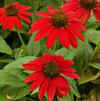
|
Echinacea hybrida 'Artisan Ombre Red'Coneflower
Uniform, highly branched habit with deep red flowers that soften to lighter red as they age
[
More Info
]
|

|
Echinacea hybrida 'Artisan Soft Orange'Coneflower
Uniform, highly branched habit with dark orange flowers that soften to lighter orange. Drought tolerant.
[
More Info
]
|

|
Echinacea pallidaConeflower, Pale
Tall bare stems are topped by flowers with narrow, strap-like pink-purple petals. Tolerates very dry soil.
[
More Info
]
|
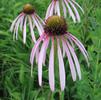
|
Echinacea paradoxaConeflower, Yellow
Each flower stem produces a single bloom with yellow ray petals around a brown cone-shaped seed head. A very drought tolerant Midwest native.
[
More Info
]
|
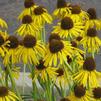
|
Echinacea purpureaConeflower, Purple
Rosy purple flowers with non-drooping petals. A Midwest native.
[
More Info
]
|
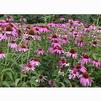
|
Echinacea purpurea 'Magnus'Coneflower
Intense rose-pink ray petals with a coppery-brown cone. Petals fade to pale pink as they age. Huge, flat flower heads with non-drooping petals. [PPA-1998]
[
More Info
]
|

|
Echinacea purpurea 'PowWow White'Coneflower
Large flowers with white petals and orange cone bloom June through September. Sturdy foliage is well branched producing many flowers. Attracts gold finches. A seed selection of Echinacea purpurea.
[
More Info
]
|
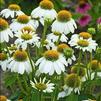
|
Echinacea purpurea 'PowWow Wild Berry'Coneflower
Large flowers have rosy-purple horizontal rays and orange June through September. Sturdy foliage is well branched producing many flowers. Attracts gold finches. A seed selection of Echinacea purpurea.
[
More Info
]
|
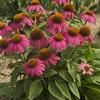
|
Echinacea purpurea 'Prairie Splendor'Coneflower
Large, 4-6 inch wide, rose pink flowers are presented atop compact, well-branched plants. Blooms 2 weeks earlier than other varieties; flowering period extends from late June to the first frost!
[
More Info
]
|
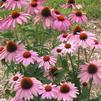
|
Echinacea purpurea 'RUBY STAR Rubinstern'Coneflower
Large carmine-red to purple flowers bloom June to August. Seed heads attract finches and other songbirds. Tolerant of drought, heat, humidity and poor soils. Said to be an improvement over `Magnus'.
[
More Info
]
|
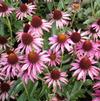
|
Echinacea purpurea 'White Swan'Coneflower
Pure white ray petals reflex downward away from the coppery-brown, spiky central cone. Their fragrance attracts masses of butterflies.
[
More Info
]
|

|
Elymus canadensisGrass, Canada Wild Rye
[
More Info
]
|
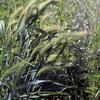
|
Elymus hystrixBottlebrush Grass
Missouri native perennial grass. Adaptable to wide variety of soils--tolerates clay soil. Medium green leaf blades grow to 1' long. Nine inch long "bottlebrush" inflorescences emerge in the summer, are held well above the foliage, and persist well into the fall.
[
More Info
]
|

|
Elymus virginicusGrass, Virginia Wild Rye
Green to silvery blue foliage, often with a waxy appearance, is topped with 3-6" long spikelets in late spring and early summer.Typically found scattered on shaded banks, along fencerows and in open woodlands throughout much of the US. Similar to E. canadensis, but shorter in height with shorter awns on the seed heads, which do not droop.
A larval host for most branded skippers and satyrs, E. virginicus is also used by birds and small mammals for seed and forage for nesting material.
[
More Info
]
|
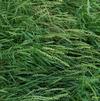
|
Epimedium x perralchicum 'Frohnleiten'Barrenwort
Big bright yellow flowers on upright flower stalks in April and May. Spiny, evergreen, dark green foliage emerges bronze-pink and turn back to bronze in winter.. An excellent, slow-growing ground cover for dry shade.
[
More Info
]
|
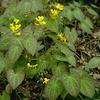
|
Epimedium x versicolor 'Sulphureum'Barrenwort
Spurred yellow flower clusters appear above foliage in April. Attractive evergreen foliage emerges with reddish tint, mature to green and turns red in autumn. Perfect for dry shade under trees.
[
More Info
]
|
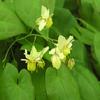
|
Epimedium x youngianum 'Roseum'Barrenwort
Lavender pink flowers in spring over small delicate foliage. An excellent, slow-growing ground cover for dry shade.
[
More Info
]
|
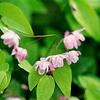
|
Equisetum hyemaleRush, Horsetail
Bamboo-like, dark green stems are rigid, rough and hollow. Evergreen stems provide winter interest in water and bog gardens or in a low wet spot. Can be aggressive.
[
More Info
]
|
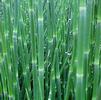
|
Eragrostis spectabilisGrass, Purple Love
Clouds of tiny, fine textured flower panicles appear like reddish purple clouds hovering just about ground level. Foliage forms a 10" mat of twisty green foliage. Excellent fine textured accent for the late summer garden. Drought tolerant. An American native.
[
More Info
]
|
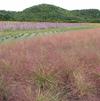
|
Erianthus (syn Saccharum) ravennaeGrass, Hardy Pampas
Robust, gray-green foliage grows 48" tall with silvery flower spikes that tower above the leaves in fall. Looks best with constant moisture but is considerably drought tolerant.
[
More Info
]
|
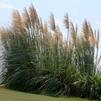
|
Eryngium 'Big Blue'Sea Holly
Iridescent 4" blue flower. Blue stems and silver foliage. Spectacular long-lasting cut flower.
[
More Info
]
|
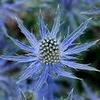
|
Eryngium planum 'Blue Glitter'Sea Holly
Sea Holly is adored by florists and gardeners alike for its unique and long lasting, blue, spiny flowers which add interesting color and texture to bouquets or the garden. They are produced on intensely silver-blue stems and stand high above the basal rosette of blue-green, deeply toothed, smooth textured leaves.
'Blue Glitter' is an improvement over older varieties because it matures quickly, produces a greater number of flowers, and has a more intense blue flower color. It does not require vernalization to bloom, which is an advantage to gardeners in southern zones.This species of Eryngium is one of the hardiest and it has proven to be a reliable, long-lived perennial.
[
More Info
]
|
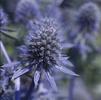
|
Eryngium yuccifoliumRattlesnake Master
Clusters of round, greenish white flower heads June through September on sword shaped, medium green foliage. Distinctive plant is an interesting cut flower. A drought-tolerant Midwest native.
[
More Info
]
|
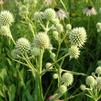
|
Eupatorium dubium 'Baby Joe'Joe Pye Weed
This selection features lovely fuchsia-colored flowers over bright green foliage, and is smaller than most Joe Pye Weed varieties.
[
More Info
]
|
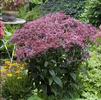
|
Eupatorium dubium 'Little Joe'Joe Pye Weed
A compact Joe Pye Weed that needs no staking. Flowers are produced in the usual dome-shaped clusters. Mauve-purple flowers on dark purple stems and green foliage July through September. Butterfly magnet. An outstanding, underutilized shrub-like perennial. More tolerant of light shade that other E. purpureum.
[
More Info
]
|
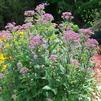
|
Eupatorium dubium 'Phantom'Joe Pye Weed
Dramatic compact version with large, wine-red flower clusters.
[
More Info
]
|

|
Eupatorium fistulosumJoe-Pye Weed, Hollow
Pink Bloom
[
More Info
]
|
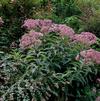
|
Eupatorium fortunei 'Pink Frost'Joe Pye Weed, Variegated
This unique perennial forms bushy mounds of dark green variegated foliage with creamy yellow margins. Small clusters of deep pink flowers appear in August and September. Use this variety as a specimen for the border or containers. It is easy to grow in slightly moist soils and makes a lovely cut flower.
[
More Info
]
|
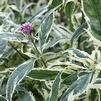
|
Eupatorium maculatumJoe-Pye Weed
Joe-Pye Weeds are bold, architectural specimen plants, perfect for making a statement in the border. Plants forms a huge clump of coarse green leaves, bearing enormous umbrella-like heads of rosy-purple flowers in late summer. Eupatorium maculatum is perfect for planting in damp soil in marshy areas, along streambanks, and on pond edges. Joe Pye Weed (also called Spotted Joe Pye Weed) also thrives in rich garden soil.
[
More Info
]
|
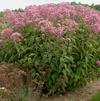
|
Eupatorium purpureumJoe Pye Weed
[
More Info
]
|
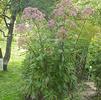
|
Euphorbia 'Ascot Rainbow'Spurge
[
More Info
]
|
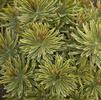
|
Euphorbia polychroma 'Bonfire'Spurge, Cushion
Cheerful chartreuse flowers in spring contrast with purple-red foliage on a uniform, mounding habit. PPAF
[
More Info
]
|
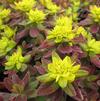
|
Festuca glauca 'Elijah Blue'Grass, Blue Fescue
Fine textured, semi-evergreen leaves create a mound of silvery-blue foliage. Foliage color intensifies in full sun and holds its color all summer. Requires sharp soil drainage. Enjoys sandy soils. Flowers are insignificant.
[
More Info
]
|
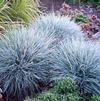
|
Filipendula rubraQueen Of The Prairie
[
More Info
]
|
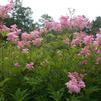
|
Fragaria virginicaStrawberry, Wild
Virginia strawberry or wild strawberry is a ground-hugging plant rising from a fibrous, perennial root system. Hairy leaf petioles, up to 6 in. long, each bear a single trifoliate leaf. The hairy flower stalk gives rise to a loose cluster of small, five-petaled flowers followed by tasty, wild strawberries.
Found in patches in fields and dry openings, this plant produces the finest, sweetest, wild strawberry.
[
More Info
]
|
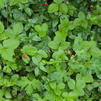
|
Gaillardia aristata 'Arizona Sun'Blanket Flower
Fiery orange-red centers are ringed with bright yellow tips. Flowers bloom continuously creating a blanket of color. Heat tolerant. Attracts butterflies. Does not tolerate heavy clay soils. A 2005 All-America Selection winner.
[
More Info
]
|

|
Gaillardia grandiflora 'Mesa Yellow'Blanket Flower
Vibrant sunshine yellow blooms are 3" wide blooming continuously May through August. Mounding habit. Drought tolerant once established. 2010 All-America Selections winner.
[
More Info
]
|
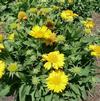
|
Galium odoratumWoodruff, Sweet
A vigorous ground cover for moist, shady areas. Tiny, white, star-shaped flowers appear above a carpet of finely cut green leaves. Flowers and foliage are fragrant.
[
More Info
]
|
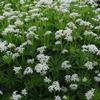
|
Gaura lindheimeri 'Siskiyou Pink'Gaura
Brilliant, red-pink, 4-petaled flowers on wiry, red-tinged stems. Drought and heat resistant. Requires well-drained soil.
[
More Info
]
|
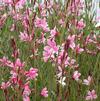
|
Gaura lindheimeri 'Whirling Butterflies'Gaura
Bright white, 4-petaled flowers resembling tiny butterflies flutter above the foliage from early summer into fall. As the flowers age, they take on a hint of pink. This plant forms a basal mound of finely textured, dark green leaves. The flower stems are long, thin wands which blow freely in the wind while the flowers look like a cloud of butterflies.
Gaura is a native North American wildflower; it is very drought and heat tolerant. Unlike the species, 'Whirling Butterflies' does not self-seed.
[
More Info
]
|
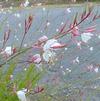
|
Geranium 'Brookside'Cranesbill
Large clear blue flowers with a small white eye. A long-blooming, compact form with finely cut foliage. Considered an improvement over `Johnson's Blue' due to it's less floppy growth habit.
[
More Info
]
|
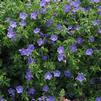
|
Geranium 'Johnson's Blue'Cranesbill
Long-blooming, lavender-blue flowers on upright plants.
[
More Info
]
|
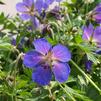
|
Geranium 'Rozanne'Cranesbill
Large, violet-blue flowers with white centers bloom profusely from May through October. This is the longest blooming perennial geranium we have observed! Slightly marbled, deep green foliage forms spreading mounds. We consider this hardy geranium to be the finest selection in it's growth habit category! Heat tolerant. 2008 Perennial Plant of the Year. PP12175
[
More Info
]
|
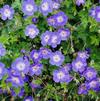
|
Geranium macrorrhizum 'Bevan's Variety'Cranesbill, Bigroot
Deep magenta 1" flowers bloom April through July. Thick, fragrant, clump forming foliage chokes out most weeds. Semi evergreen leaves are rounded and broadly lobed. Plants spread to form an effective ground cover. Foliage looks good all season, turning red-bronze in autumn.
[
More Info
]
|
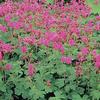
|
Geranium maculatumGeranium, Wild
[
More Info
]
|
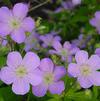
|
Geranium pratense 'Boom Chocolatta'Cranesbill
Dark bronzy purple leaves and blue purple flowers on an upright habit. Hardy geraniums are wonderful filler plants for any landscape, either residential or commercial. They blend nicely with most other perennials and offer continuous color throughout the summer months.
[
More Info
]
|

|
Geranium sanguineumCranesbill
Shell pink flowers with dark pink veins. Compact selection with small, deeply cut fragrant leaves. Foliage often turns red in autumn. Prefers protection from hot afternoon sun. Well drained soil is key. (syn `Lancastriense')
[
More Info
]
|
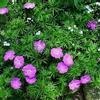
|
Geranium sanguineum 'Album'Cranesbill
Clear white flowers. Deeply cut, glossy green leaves have a looser habit than the species. Very easy to grow. Plants are heat tolerant and prefer full sun.
[
More Info
]
|
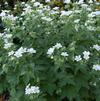
|
Geranium sanguineum 'Max Frei'Cranesbill
Purple-pink flowers on compact mounded plants. Blooms May and June with sporadic rebloom. Glossy green foliage turns red in autumn. Prefers protection from hot afternoon sun. Well drained soil is key.
[
More Info
]
|
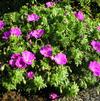
|
Geranium sanguineum 'New Hampshire Purple'Cranesbill
Long-blooming flowers are larger, have greater substance, and are a shade darker than the species. Deeply cut, glossy green leaves form a low-growing clump turning red in autumn. 2000 Illinois Perennial Plant of the Year.
[
More Info
]
|
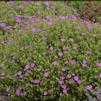
|
Geranium x cantabrigiense 'Biokova'Cranesbill
Large white to pale pink flowers repeat bloom through the summer. Trailing stems with glossy leaves form an excellent colonizing ground cover.
[
More Info
]
|
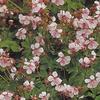
|
Geranium x cantabrigiense 'Biokova Karmina'Cranesbill
Large rich, raspberry-pink flowers repeat bloom through the summer. Trailing stems with glossy leaves form an excellent colonizing ground cover. Raspberry-pink flowering form of 'Biokova'.
[
More Info
]
|
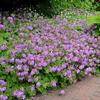
|
Gypsophila paniculata 'FESTIVAL STAR Danfester'Baby'S Breath
Dense sprays of pure white flowers are produced on relatively short stems above the grey-green foliage. This is also an incredibly long blooming selection, flowering from late spring into fall. Compact, tightly mounded habit. The plants remain very tidy and uniform over the season. PROVEN WINNER.
[
More Info
]
|
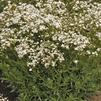
|
Hakonechloa macra 'All Gold'Grass, Japanese Forest
Brilliant solid gold foliage glows in the shade. Spreads slowly by stolons but is not invasive. Reddish-brown flowers.
[
More Info
]
|
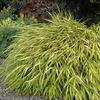
|
Hamamelis vernalisWitch Hazel, Vernal
[
More Info
]
|

|
Hamamelis virginianaWitch Hazel, Eastern
[
More Info
]
|

|
Hedera helixIvy, English (Baltic)
Fast-growing, dark green glossy evergreen foliage will form climbing vine or trailing ground cover. Inconspicuous flowers on mature growth in October.
[
More Info
]
|
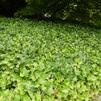
|
Helianthus occidentalisSunflower, Western
[
More Info
]
|
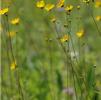
|
Helictotrichon sempervirens 'Sapphire'Grass, Blue Oat
Bright steel blue leaves that tend to widen as they mature. Small, tan seed heads appear on tall stems.
[
More Info
]
|
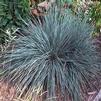
|
Heliopsis helianthoidesSunflower, Ox-Eye
Golden yellow daisy-like flowers bloom for weeks in summer and make good cut flowers. Seed heads are attractive to songbirds. Pinch for shorter, bushier plants.
[
More Info
]
|
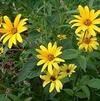
|
Heliopsis helianthoides 'Sunstruck'Sunflower, False
ariegated Heliopsis have long been popular in the perennial landscape, and ‘Sunstruck’ fills the spaces at a much shorter height. 2” large, golden yellow flowers appear above the cream and green variegated foliage even earlier than typical Heliopsis, and blooms all through summer until fall. Compared to ‘Loraine Sunshine’, ‘Sunstruck’ is more compact, has more ray florets and a deeper flower color.
[
More Info
]
|
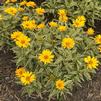
|
Heliopsis helianthoides 'Tuscan Gold'Sunflower, False
Heliopsis Tuscan Gold is a companion to the very popular Tuscan Sun, offering flowers that a little more saturated with color and a little larger. This selection blooms mid to late summer and has a compact, upright habit with dark green leaves that resist powdery mildew.
[
More Info
]
|
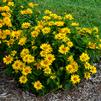
|
Heliopsis helianthoides 'Tuscan Sun'Sunflower, False
Bright yellow flowers with gold center June through September. Most compact Heliopsis available, more controllable in the landscape. PROVEN WINNER.
[
More Info
]
|
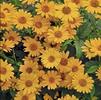
|
Helleborus 'Apricot Blush'Lenten Rose
The unique coloration of this variety is perfectly described by its name. Since it is from seed, each flower is a little different but all ‘Apricot Blush’ flowers fall in the color range of peachy yellow to apricot with varying degrees of bright rose veining, speckling, and picotee edges. Often the backs of the petals are marked with red pigments as well, which is a lovely touch for these downward facing blossoms. ‘Apricot Blush’ produces very large single flowers measuring about 3-4 inches across. It is an exceptionally vigorous selection that grows much like ‘Cherry Blossom’, a pink member of the series.
[
More Info
]
|
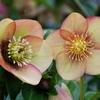
|
Helleborus 'Black Diamond'Lenten Rose
Like a diamond in the rough, this hellebore shines in early spring with its dramatic slate purple to Slate purple to near-black, single blossoms measuring about 2-2½" across. After setting seed, the petals turn a unique shade of slate green, continuing the interest long after the plants have finished blooming. The flowers are downward facing like most hellebores. The new foliage of this deep purple-black flowering selection is purple when it emerges in early spring before it matures into a lovely shade of green.
[
More Info
]
|
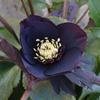
|
Helleborus 'Blushing Bridesmaid'Rose, Lenten
Helleborus ‘Blushing Bridesmaid’ bears 2-2½"double white flowers with raspberry pink edges and veining.The WEDDING PARTY series offers numerous double flowers, in beautiful hues.
[
More Info
]
|

|
Helleborus 'Cherry Blossom'Lenten Rose
As sweet as the name implies, 'Cherry Blossom' is a mixed strain of exceptionally vigorous, soft pink picotee hellebores with very large 3" flowers. Some have an anemone center and most have a red starburst in the center. The flowers are downward facing like most hellebores, but the front and backs of the petals are marked with varying degrees of bright red veining and picotee edges
[
More Info
]
|
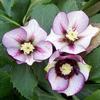
|
Helleborus 'Confetti Cake'Lenten Rose
'Confetti Cake' has 2.5-3" double white flowers with burgundy speckling concentrated toward the center of the petals. Walters Gardens, Inc. hybridizer Hans Hansen has a passion for hellebores. In his breeding work, he selects for plants with notable vigor, showy floral displays with large numbers of blossoms per plant, and rich flower colors. The WEDDING PARTY series showcases his double flowered selections, available in numerous, beautiful color shades.
Hellebores are the harbingers of spring, blooming for six weeks or more beginning in late winter. They are often flowering during the Christian season of Lent, from which they get their common name, Lenten Rose. This is the perfect plant for naturalizing in moist, woodland areas where its extensive root system will spread as far as it is allowed.
[
More Info
]
|
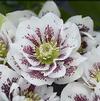
|
Helleborus 'Dark and Handsome'Lenten Rose
Helleborus 'Dark and Handsome' bears 2.5-3", near black to black-purple flowers. Walters Gardens, Inc. hybridizer Hans Hansen has a passion for hellebores. In his breeding work, he selects for plants with notable vigor, showy floral displays with large numbers of blossoms per plant, and rich flower colors. The WEDDING PARTY™ series showcases his double flowered selections, available in numerous, beautiful color shades.
Hellebores are the harbingers of spring, blooming for six weeks or more beginning in late winter. They are often flowering during the Christian season of Lent, from which they get their common name, Lenten Rose. This is the perfect plant for naturalizing in moist, woodland areas where its extensive root system will spread as far as it is allowed.
[
More Info
]
|
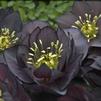
|
Helleborus 'Flower Girl'Lenten Rose
Helleborus 'Flower Girl' bears 2.5-3", double blush to light pink flowers. Walters Gardens, Inc. hybridizer Hans Hansen has a passion for hellebores. In his breeding work, he selects for plants with notable vigor, showy floral displays with large numbers of blossoms per plant, and rich flower colors. The WEDDING PARTY™ series showcases his double flowered selections, available in numerous, beautiful color shades.
Hellebores are the harbingers of spring, blooming for six weeks or more beginning in late winter. They are often flowering during the Christian season of Lent, from which they get their common name, Lenten Rose. This is the perfect plant for naturalizing in moist, woodland areas where its extensive root system will spread as far as it is allowed.
[
More Info
]
|
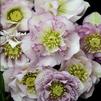
|
Helleborus 'French Kiss'Lenten Rose
Helleborus 'French Kiss' has 3-3.5, single white flowers lined with raspberry pink that veins in toward the center of the petals. You’ve enjoyed the double-flowered Hellebores of the WEDDING PARTY™ series, try the equally lovely single-flowered selections of the HONEYMOON™ Series from Walters Gardens, Inc. hybridizer Hans Hansen. In his breeding work, he selects for plants with notable vigor, showy floral displays with large numbers of blossoms per plant, and rich flower colors. Hellebores are the harbingers of spring, blooming for six weeks or more beginning in late winter. They are often flowering during the Christian season of Lent, from which they get their common name, Lenten Rose. This is the perfect plant for naturalizing in moist, woodland areas where its extensive root system will spread as far as it is allowed.
[
More Info
]
|
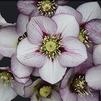
|
Helleborus 'Golden Sunrise'Lenten Rose
this variety is mixed strain of canary yellow hellebores so each plant is slightly different. Some are solid yellow, but most exhibit some degree of red veining and a red picotee edge. Some have a nicely contrasting red starburst center. The large 2-3" flowers are downward facing like most hellebores, but the backs of the petals are marked with colorful red veining.
[
More Info
]
|

|
Helleborus 'Ivory Prince'Lenten Rose
Upward facing flower buds start out pink, opening to creamy white blooms late March and April. Flowers remain intact for 8-10 weeks. Glossy, gray-green, mounding foliage is evergreen.
[
More Info
]
|
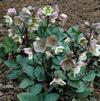
|
Helleborus 'New York Night'Lenten Rose
2.5-3", single flowers with shades of black that include deep grey-purple, jet black, and black-purple. You’ve enjoyed the double-flowered Hellebores of the Wedding Party series, try the equally lovely single-flowered selections of the HONEYMOON™ Series from Walters Gardens, Inc. hybridizer Hans Hansen. In his breeding work, he selects for plants with notable vigor, showy floral displays with large numbers of blossoms per plant, and rich flower colors. Hellebores are the harbingers of spring, blooming for six weeks or more beginning in late winter. They are often flowering during the Christian season of Lent, from which they get their common name, Lenten Rose. This is the perfect plant for naturalizing in moist, woodland areas where its extensive root system will spread as far as it is allowed.
[
More Info
]
|
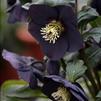
|
Helleborus 'Paris in Pink'Lenten Rose
3.5-4”, single light to medium pink flowers. You’ve enjoyed the double-flowered Hellebores of the Wedding Party series, try the equally lovely single-flowered selections of the HONEYMOON™ Series from Walters Gardens, Inc. hybridizer Hans Hansen. In his breeding work, he selects for plants with notable vigor, showy floral displays with large numbers of blossoms per plant, and rich flower colors. Hellebores are the harbingers of spring, blooming for six weeks or more beginning in late winter. They are often flowering during the Christian season of Lent, from which they get their common name, Lenten Rose. This is the perfect plant for naturalizing in moist, woodland areas where its extensive root system will spread as far as it is allowed.
[
More Info
]
|
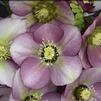
|
Helleborus 'Rio Carnival'Lenten Rose
2.5-3", single light yellow flowers with heavy burgundy red speckling. You’ve enjoyed the double-flowered Hellebores of the Wedding Party series, try the equally lovely single-flowered selections of the HONEYMOON™ Series from Walters Gardens, Inc. hybridizer Hans Hansen. In his breeding work, he selects for plants with notable vigor, showy floral displays with large numbers of blossoms per plant, and rich flower colors. Hellebores are the harbingers of spring, blooming for six weeks or more beginning in late winter. They are often flowering during the Christian season of Lent, from which they get their common name, Lenten Rose. This is the perfect plant for naturalizing in moist, woodland areas where its extensive root system will spread as far as it is allowed.
[
More Info
]
|
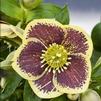
|
Helleborus 'Romantic Getaway'Lenten Rose
The HONEYMOON series brings gorgeous single flowers on very vigorous plants.Romantic Getaway sports 3" flowers with a dramatic red patterned center.
[
More Info
]
|

|
Helleborus 'Rome in Red'Lenten Rose
3-4", single rich maroon to wine red flowers. You’ve enjoyed the double-flowered Hellebores of the Wedding Party series, try the equally lovely single-flowered selections of the HONEYMOON™ Series from Walters Gardens, Inc. hybridizer Hans Hansen. In his breeding work, he selects for plants with notable vigor, showy floral displays with large numbers of blossoms per plant, and rich flower colors. Hellebores are the harbingers of spring, blooming for six weeks or more beginning in late winter. They are often flowering during the Christian season of Lent, from which they get their common name, Lenten Rose. This is the perfect plant for naturalizing in moist, woodland areas where its extensive root system will spread as far as it is allowed.
[
More Info
]
|
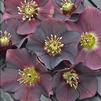
|
Helleborus 'Ruby Wine'Lenten Rose
Nodding, single blooms in shades of red. Crested center with white stamens.
[
More Info
]
|
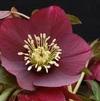
|
Helleborus 'Sandy Shores'Lenten Rose
2.5-3", single pale apricot flowers with a lovely rosy pink color on the backs. You've enjoyed the double-flowered Hellebores of the Wedding Party series, try the equally lovely single-flowered selections of the HONEYMOON™ Series from Walters Gardens, Inc. hybridizer Hans Hansen. In his breeding work, he selects for plants with notable vigor, showy floral displays with large numbers of blossoms per plant, and rich flower colors. Hellebores are the harbingers of spring, blooming for six weeks or more beginning in late winter. They are often flowering during the Christian season of Lent, from which they get their common name, Lenten Rose. This is the perfect plant for naturalizing in moist, woodland areas where its extensive root system will spread as far as it is allowed.
[
More Info
]
|
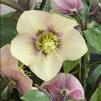
|
Helleborus 'Spanish Flare'Lenten Rose
3", single light yellow flowers with maroon red flares concentrated around the nectaries. A novel color pattern for Lenten Rose. You’ve enjoyed the double-flowered Hellebores of the Wedding Party series, try the equally lovely single-flowered selections of the HONEYMOON™ Series from Walters Gardens, Inc. hybridizer Hans Hansen. In his breeding work, he selects for plants with notable vigor, showy floral displays with large numbers of blossoms per plant, and rich flower colors. Hellebores are the harbingers of spring, blooming for six weeks or more beginning in late winter. They are often flowering during the Christian season of Lent, from which they get their common name, Lenten Rose. This is the perfect plant for naturalizing in moist, woodland areas where its extensive root system will spread as far as it is allowed.
[
More Info
]
|
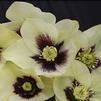
|
Helleborus 'Tropical Sunset'Lenten Rose
The HONEYMOON series brings vigorous plants with lovely single flowers. Tropical Sunset provides cheerful warmth during late winter/early spring with its butter yellow blooms streaked with bright burgundy .
[
More Info
]
|

|
Hemerocallis 'Black Eyed Susan'Daylily
4.5", rich yellow-orange tepals with a maroon eye and orange throat. Petal edges are lightly crimped; sepals are smooth and somewhat recurved. High bud count.Blooms in midsummer; rebloomer.One of the most consistent reblooming daylilies in northern regions.Tetraploid. Daylilies can survive many harsh conditions that other plants cannot including: polluted city environments, slopes, poor and dry soils, near pavement that is salted in winter, and under Black Walnut trees (not affected by juglone).
[
More Info
]
|
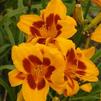
|
Hemerocallis 'Chicago Apache'Daylily
Intense scarlet red sepals. Very sun tolerant. Petals have loosely ruffled edges. Recurved tepals with a small yellow watermark and green throat. More thrip resistant than most reds.
[
More Info
]
|

|
Hemerocallis 'Fragrant Returns'Daylily
Visually, almost identical to Happy Returns, but with a more intense, lovely fragrance!
[
More Info
]
|

|
Hemerocallis 'Going Bananas'Daylily
An improved 'Happy Returns' with larger flowers and continuous bloom right into early fall. Canary yellow flowers open just above the foliage. PROVEN WINNER.
[
More Info
]
|

|
Hemerocallis 'Happy Returns'Daylily
Award winning, repeat blooming, ruffled, soft yellow flowers bloom profusely in June. Reblooms till frost. A Stella de Oro hybrid. Tolerates heat and humidity. Divide every 3-4 years to maintain vigor. Diploid.
[
More Info
]
|
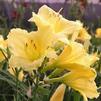
|
Hemerocallis 'Hyperion'Daylily
Lemon yellow, fragrant flowers are 7" across. Blooms mid-July then repeat blooms. Diploid.
[
More Info
]
|
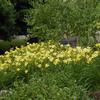
|
Hemerocallis 'Joan Senior'Daylily
Lightly ruffled, near white flowers with limestone-colored throats are 6" across. Excellent bud and branch count. Repeat blooming. Blooms late June to mid-July. Diploid.
[
More Info
]
|
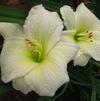
|
Hemerocallis 'Little Business'Daylily
[
More Info
]
|
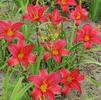
|
Hemerocallis 'Little Grapette'Daylily
Award winning miniature selection with lightly ruffled, purple petals and yellow throat. High bud count, blooming May through June. Tolerates heat and humidity. Divide every 3-4 years to maintain vigor.
[
More Info
]
|
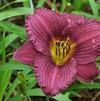
|
Hemerocallis 'Mary Todd'Daylily
Lots of 6", bright yellow, ruffled flowers with heavy texture. Tetraploid.
[
More Info
]
|
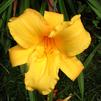
|
Hemerocallis 'Nosferatu'Daylily
Similar to the highly regarded daylily ‘Bela Lugosi’, this variety offers a shorter height, fragrant blossoms, and more prominent veining in the oval shaped petals. Large 6", shimmering dark purple, very sunfast flowers with a chartreuse throat and pie crust ruffled petals are produced midseason. A high bud count on well-branched scapes ensures many weeks of bloom. Semi-evergreen tetraploid.
[
More Info
]
|
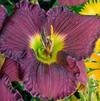
|
Hemerocallis 'Pardon Me'Daylily
Loads of cranberry red flowers with yellow-green throats are 3" across. Repeat blooming.
[
More Info
]
|
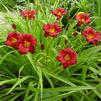
|
Hemerocallis 'Passionate Returns'Daylily
An everblooming daylily, ‘Passionate Returns’ blooms for about 3 ½ months beginning in mid-June in zone 7 or early July in zone 5. 4", rosy red, ruffled flowers have perfect form. Flowers are held just at the top of the foliage, with multiple branched scapes and lots of buds to make it extremely floriferous in the landscape. Its short stature and continuous flower show makes this the perfect daylily for growing at the front of the
[
More Info
]
|

|
Hemerocallis 'Primal Scream'Daylily
Spectacular 7½-8½ inch, glimmering tangerine orange, gold dusted blossoms and green throat. Officially classified as unusual form, the tepals are narrow, twisted, and recurved with loosely ruffled edges. These gigantic blossoms are presented in midsummer on tall, graceful, willowy scapes above the attractive arching foliage. Winner of the 2003 Stout Medal (the highest honor a daylily can receive). PROVEN WINNER.
[
More Info
]
|
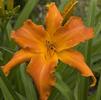
|
Hemerocallis 'Purple de Oro RAZZMATAZZ'Daylily
Compact growth producing ruffled, medium purple flowers with deep purple veining, paler purple midribs and a bright yellow throat. Long blooming period. Repeat blooms throughout the season.
[
More Info
]
|
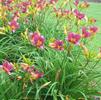
|
Hemerocallis 'Red Hot Returns'Daylily
First red, continuous blooming daylily that performs well in northern climates. Brilliant cherry red, ruffled blossoms have a brightly contrasting yellow halo and an apple green throat. They rest just above the dark green foliage, held up there like a bouquet all summer long.
It is a vigorous grower that readily increases its foliage and like EARLYBIRD CARDINAL™, it produces several flower scapes per fan. This daylily begins blooming in early midseason and repeats bloom all the way into fall. In zone 7, there are typically about 105 day of bloom. And since it's an extended bloomer, each flower remains open for at least 16 hours.
Brilliant color all season long on low maintenance plants—now that’s what today’s gardeners are looking for!
Semi-evergreen diploid.
This is considered a premium daylily, which means that it has been selected as highly performing plant with exceptional bloom performance, substantive, vibrantly colored flowers, complete winter hardiness in northern zones, and a vigorous habit.
Daylilies can survive many harsh conditions that other plants cannot including: polluted city environments, slopes, poor and dry soils, near pavement that is salted in winter, and under Black Walnut trees (not affected by juglone).
[
More Info
]
|
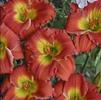
|
Hemerocallis 'Ruby Spider'Daylily
The gigantic 9”, dark ruby red flowers are officially classified as “unusual form-spatulate” since the petals are long and spoon-shaped. The petals open very wide and flat, displaying the large, golden yellow throat and matching midribs nicely.
Planted singly or en masse, this outstanding daylily is sure to make a huge visual impact in the landscape!
Dormant tetraploid.
Daylilies can survive many harsh conditions that other plants cannot including: polluted city environments, slopes, poor and dry soils, near pavement that is salted in winter, and under Black Walnut trees (not affected by juglone).
[
More Info
]
|
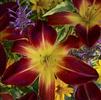
|
Hemerocallis 'Ruby Stella'Daylily
Repeat-blooming, dark red flowers with yellow throat bloom profusely in June. Reblooms till frost. A sister of Stella de Oro. Tolerates heat and humidity. Divide every 3-4 years to maintain vigor.
[
More Info
]
|

|
Hemerocallis 'Siloam Peony Display'Daylily
Like a bouquet of peonies, this lovely cultivar produces an elegant display of fully double, peach colored, diamond dusted blossoms with ruffled petals in midsummer and then again later in the season. The fragrant blooms measure up to 6 inches across and have a rose blush band near the center of the flower. This cultivar is an extended bloomer, so the flowers remain open for at least 16 hours. Truly unique!
Daylilies can survive many harsh conditions that other plants cannot including: polluted city environments, slopes, poor and dry soils, near pavement that is salted in winter, and under Black Walnut trees (not affected by juglone).
[
More Info
]
|
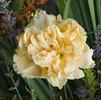
|
Hemerocallis 'Stella de Oro'Daylily
Award winning, repeat blooming, ruffled, bright gold flowers bloom profusely in May. Reblooms till frost. Foliage is compact. Tolerates heat and humidity. Divide every 3-4 years to maintain vigor.
[
More Info
]
|
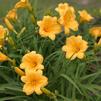
|
Hemerocallis 'Strawberry Candy'Daylily
Strawberry pink blooms have a distinct rose red eye zone and a golden green throat. Flowers are 4 1/2" across. Early to midseason repeat bloomer. Tetraploid.
[
More Info
]
|
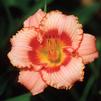
|
Hemerocallis 'Tiger Swirl'Daylily
This exciting variety stands out from the rest of the daylilies with its uniquely shaped petals. Huge, 6.5in triangular-shaped flowers are light golden yellow with a pronounced raspberry red eye. Its bottom sepals are smooth, often twisting or curling into a “swirling” motion. This is the perfect companion to ‘Primal Scream’, matching its spider-like look. Daylilies are a perfect landscape plant and possibly the most care-free and easiest perennials to grow.
Daylilies can survive many harsh conditions that other plants cannot including: polluted city environments, slopes, poor and dry soils, near pavement that is salted in winter, and under Black Walnut trees (not affected by juglone).
[
More Info
]
|
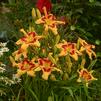
|
Heuchera 'Black Pearl'Coral Bells
Meet the new standard in black Heuchera. ‘Black Pearl’ forms an incredibly dense habit of shiny, jet black leaves with scalloped, ruffled edges. Each 4-4.5" leaf has rosy purple undersides, revealed with the intense ruffling of the leaves. Oldest leaves have a slight silver overlay. To top it off,‘Black Pearl’ keeps its intense black color even in full sun, instead of bleaching to brown. White flowers with pink calyxes appear in midsummer (requires vernalization).
This plant is a Heuchera villosa hybrid. The villosa species is a large, late blooming type that exhibits an increased tolerance of high heat and humidity over other species. Most produce cream flowers in midsummer, though they are grown more for their fantastic foliage. H. villosa is native to the southeastern United States.
Coral bells are easy to grow and blend easily with most other perennials in the landscape. Because of their low, mounding habit, they are often used as edging along paths or in containers.
[
More Info
]
|
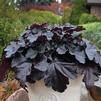
|
Heuchera 'Electric Plum'Coral Bells
New leaves emerge near black and lighten to an intense purple with dramatic black veining. Dainty, bright fuchsia pink flowers are produced on near black stems, with a color intensity that matches the awesome foliage. Compared to the popular ‘Grape Expectations’, ‘Electric Plum’ has a brighter purple foliage color, more attractive flowers, and improved floral performance. Growers will appreciate that this Heuchera does not require vernalization to bloom, although it is beneficial.
This plant is a Heuchera villosa hybrid. The villosa species is a large, late blooming type that exhibits an increased tolerance of high heat and humidity over other species. Most produce cream flowers in midsummer, though they are grown more for their fantastic foliage. H. villosa is native to the southeastern United States.
Coral bells are easy to grow and blend easily with most other perennials in the landscape. Because of their low, mounding habit, they are often used as edging along paths or in containers. Try cutting a few of the tall flower scapes for fresh bouquets.
[
More Info
]
|
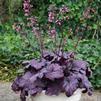
|
Heuchera 'Midnight Rose'Coral Bells
Hot pink flecks emerge on nearly-black foliage in spring and continue to enlarge and brighten before lightening to cream as the season progresses. PPAF
[
More Info
]
|
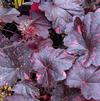
|
Heuchera 'Obsidian'Coral Bells
Smooth, rounded foliage emerges nearly true black. Unlike many other "black" foliage plants, it maintains its dark hue throughout the season. Tiny cream-colored flowers emerge on 24" spikes in early summer. PP14836
[
More Info
]
|
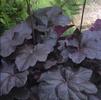
|
Heuchera 'Peach Flambe'Coral Bells
New leaves emerge fiery orange-red, maturing to peach in midseason and to plum purple in fall. Stalks of wispy white flowers rise over foliage in spring. Great color accent for the shade garden. PP17195
[
More Info
]
|
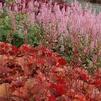
|
Heuchera 'Plum Pudding'Coral Bells
Shiny, plum colored leaves with dark purple veining and deep purple undersides. Semi-evergreen foliage forms compact mound. Small creamy flowers on slender wiry stems rise above foliage in June or July.. Excellent with variegated plants. EU3330
[
More Info
]
|
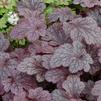
|
Heuchera 'Silver Gumdrop'Coral Bells
Silver leaves topped with bright pink flowers. A short yet robust plant, perfect for containers.A Heuchera villosa hybrid, so displays a good tolerance for heat and humidity.
[
More Info
]
|

|
Heuchera 'Southern Comfort'Coral Bells
Huge cinnamon-peach leaves change to burnished copper, then to amber. Creamy white flowers appear in late summer. This lush plant makes a bold foliage statement. PPAF
[
More Info
]
|
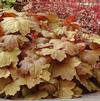
|
Heuchera 'Twist of Lime'Coral Bells
This heuchera with wavy, yellow-green leaves and cream flowers will really brighten up shady spots in the perennial border. Lovely and carefree!
[
More Info
]
|
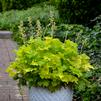
|
Heuchera 'Wild Rose'Coral Bells
This Heuchera has big leaves and big color with bright purple leaves and dark gray veining with rosy flowers atop these dense plants. This PRIMO collection addition grows quickly and is the perfect companion plant to the dark-leafed Black Pearl.
[
More Info
]
|
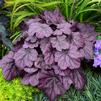
|
Heuchera americana 'Dale's Strain'Coral Bells
Unique silver-blue marbled foliage accented by white flowers on long panicles in May and June. Excellent drought tolerant ground cover. Foliage display is amazing!
[
More Info
]
|
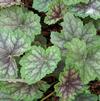
|
Heuchera americana 'Green Spice'Coral Bells
Green-edged silver leaves with purple veins. Good fall color. An improvement over 'Ecomagnifolia'.
[
More Info
]
|
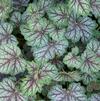
|
Heuchera micrantha 'Palace Purple'Coral Bells
Crinkled, deep purple foliage fades to bronze-brown in summer. Small whitish flowers in late spring. [PPA-1991]
[
More Info
]
|
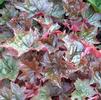
|
Heuchera richardsoniiAlum Root
Clump forming green foliage forms rounded mound. New foliage has some white mottling or purple blush. Tiny, greenish flowers on slender stems 18-24" above foliage in May and June. Very winter hardy.
[
More Info
]
|
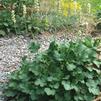
|
Heuchera sanguinea 'Ruby Bells'Coral Bells
Compact mounding green foliage with relatively large, intense blood-red flowers held in well-branched panicles. Flowers are mildly fragrant and persist for 4-8 weeks.
[
More Info
]
|
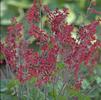
|
Heuchera villosa 'Pumpkin spice'Foamy Bells
Get a sweet taste of fall in spring with ‘Pumpkin Spice’! Bronze red leaves emerge in late spring and hold its color well into early summer. Each 4"lobed leaf has deep mahogany centers that follow the veins of the leaf. Dark red stems hold cream flowers that appear in early summer. For best foliage color and performance, plant in an area with filtered sun or afternoon shade.
‘Pumpkin Spice’ is a H. villosa hybrid which means that it is naturally more heat and humidity tolerant and also has greater vigor than Heucherellas without such parentage. It forms a very dense mound of interesting foliage that is evergreen in most climates.
Heucherella is a hybrid genus produced from a cross between Heuchera and Tiarella.
[
More Info
]
|
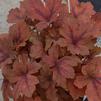
|
Heuchera villosa 'var. macrorrhiza Autumn Bride'Coral Bells, Hairy
Rounded mounds of velvety, light green, lobed and toothed foliage send up dense spikes of white flowers on slender but sturdy rusty-brown stems. A good choice for under-planting trees or other dry areas.
[
More Info
]
|
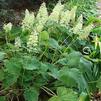
|
Heuchera x villosa 'Berry Timeless'Coral Bells
A revolution in Heuchera genetics! You’ll be amazed at the unbelievable flower production of our new ‘Berry Timeless’. A myriad of light pink flowers which age to a deeper rose red are produced in tight wands on 18-20" scapes.
What is so remarkable is what happens when the flowers are spent—they dry in place on the stems similar to what Statice does instead of falling off and leaving bare stems, thus the reference to the everlasting flowers in its name. You’ll get a two toned look of light and dark pink flowers on the same plant for a strong show of color. Even better, this plant blooms and reblooms continuously, not in waves, from early summer to frost!
You’ll have plenty of time to sell this plant in bloom if you're a retailer and loads of flowers to enjoy all summer if you're a gardener. Cut flower producers should also take note of this new everlasting heavy bloomer.
Breeders have come a long way with creating Heucheras with fantastic flowers, but this one also has very attractive, lightly silvered, mint green foliage that forms a compact, dense clump. The flowers stand in perfect proportion and contrast to the foliage.
This plant is a Heuchera villosa hybrid. The villosa species is a robust, late blooming type that exhibits an increased tolerance of high heat and humidity over other species. Most villosas produce cream flowers in midsummer, though they are grown more for their fantastic foliage. H. villosa is native to the southeastern United States.
[
More Info
]
|

|
Heuchera x villosa 'Georgia Peach'Coral Bells, Hairy
[
More Info
]
|
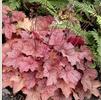
|
Heuchera x villosa 'Grape Expectations'Coral Bells
When its vibrant grape purple new foliage emerges with black veins in spring, you’ll easily be able to pick ‘Grape Expectations’ out from the crowd. The broad, thick and durable, somewhat fuzzy leaves form a dense, upright mound as opposed to the wide spreading form of ‘Blackberry Ice’. As the temperatures rise, the leaves develop a bright silver coating and then turn back to very deep purple in late fall. Creamy white flowers are produced on dark purple stems in midsummer.
The compact habit of 'Grape Expectations' makes it perfect for use in combination containers. Try pairing it with Carex s. ‘Banana Boat’ or Hosta ‘Autumn Frost’ for electric contrast.
This plant is a Heuchera villosa hybrid. The villosa species is a robust, late blooming type that exhibits an increased tolerance of high heat and humidity over other species. Most villosas produce cream flowers in midsummer, though they are grown more for their fantastic foliage. H. villosa is native to the southeastern United States.
Coral bells are easy to grow and blend easily with most other perennials in the landscape. Because of their low, mounding habit, they are often used as edging along paths or in containers. Try cutting a few of the tall flower scapes for fresh bouquets.
[
More Info
]
|
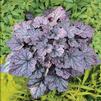
|
Heuchera x villosa 'Lava Lamp'Coral Bells
Large, billowy mass of very large, coppery purple leaves with deep purple undersides. The newest leaves emerge a bright copper orange color and then deepen to coppery purple as they age. Different from CINNAMON CURLS™, this variety has large, flat, rounded leaves that are not deeply dissected.
Deep purple scapes carry plump wands of closely spaced cream flowers in early summer.
This plant is a Heuchera villosa hybrid. The villosa species is a large, late blooming type that exhibits an increased tolerance of high heat and humidity over other species. Most produce cream flowers in midsummer, though they are grown more for their fantastic foliage. H. villosa is native to the southeastern United States.
Coral bells are easy to grow and blend easily with most other perennials in the landscape. Because of their low, mounding habit, they are often used as edging along paths or in containers. Try cutting a few of the tall flower scapes for fresh bouquets.
[
More Info
]
|
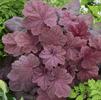
|
Heucherella 'Eye Spy'Foamy Bells
Long-lived bright pink flowers adorn this foliage plant, making this selection extra interesting all year long! Large, heavily dissected, light green leaves with purplish centers.
[
More Info
]
|

|
Heucherella 'Pink Fizz'Foamy Bells
A durable plant for sun or shade, this new Heucherella forms a full clump of large, deeply lobed, soft green leaves with a light silvering and heavy wine red to deep purple veining. It keeps its cool coloring and maintains its tight habit all season. Foliage is 8" tall, flower scapes reach 10-13" tall.
From early through midsummer, pure pink flowers burst open from hot pink buds on scapes that bubble up above the leaves like strawberry soda pop. The flowers are closely spaced on the wands, giving a strong show of color just above the foliage.
Heucherella is a hybrid genus produced from a cross between Heuchera and Tiarella which are both native to the United States.
[
More Info
]
|

|
Heucherella villosa 'Catching Fire'Foamy Bells
If you’re looking for a bright-colored foliage plant, you’ve found it! Vibrant lime green leaves are rounded, giving it a refined presence in the garden. In the centers of each leaves are very defined flame-shaped markings that flare from the center like cherry red fire. In summer, these markings will deepen to mahogany. Cream flowers appear in early summer. This is a very polished, vigorous plant. For best foliage color and performance, plant in an area with filtered sun or afternoon shade.
‘Catching Fire’ is a H. villosa hybrid which means that it is naturally more heat and humidity tolerant and also has greater vigor than Heucherellas without such parentage. It forms a very dense mound of interesting foliage that is evergreen in most climates.
Heucherella is a hybrid genus produced from a cross between Heuchera and Tiarella.
[
More Info
]
|
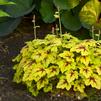
|
Heucherella villosa 'Hopscotch'Foamy Bells
Lobed leaves emerge dark red, lighten to bronze, then change to a deep green in summer.
[
More Info
]
|

|
Heucherella villosa 'Red Rover'Foamy Bells
Deep red, incredibly lobed foliage, 5" wide. Turns to an olive green foliage in the heat of summer.
[
More Info
]
|

|
Hibiscus 'Airbrush Effect'Hibiscus, Hardy
[
More Info
]
|
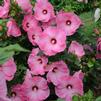
|
Hibiscus 'Ballet Slippers'Hibiscus, Hardy
Part of the SUMMERIFIC Series, this new hardy perennial fits the need of providing a Hibiscus lineup with greater feminine appeal. Huge 7" wide, ruffled flowers are white with a deep red eye. The edges of the petals are edged with blush pink. Combined with the heavily overlapping petals, this creates a pinwheel effect on the flowers. Attractive, healthy leaves are bright green with slightly serrated edges. A polished, upright habit and extremely high bud count with good axillary branching ensures that this Hibiscus will have a longer season of color, from late summer through early fall. Flowers are produced from the top to the bottom of the plant, rather than just at the top like some other cultivars. ‘Ballet Slippers’ is the perfect backdrop or centerpiece for sunny borders.
[
More Info
]
|
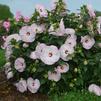
|
Hibiscus 'Berry Awesome'Hibiscus, Hardy
7-8" lavender pink flowers and red eye, with contrasting deep midnight green foliage. Flowers are produced from the top to the bottom of the plant, rather than just at the top like some other cultivars. The foliage forms the perfect habit and will be ready to show off from late summer into early fall. ‘Berry Awesome’ is the perfect backdrop or centerpiece for sunny borders. Use it in place of a shrub in your garden.
[
More Info
]
|
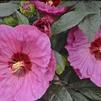
|
Hibiscus 'Bleu Brulee'Hibiscus, Hardy
With the SUMMER SPICE series, we have compact, long-blooming hardy-hibiscus in a wider array of colors than previously seen, including the blue tones.This series should be hardy in zones 5 to 9, and prefers acidid well-drained soil. Bleu Brulee's flower is sky blue with a red eye.
[
More Info
]
|

|
Hibiscus 'Cherry Choco Latte'Hibiscus, Hardy
A compact olive green hibiscus ideal for tight spaces. 8-9" white blooms have bright red eyes and thick hot-pink veins. Don't grab the Visine, these long-lasting blooms are beauties!
[
More Info
]
|
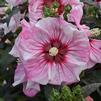
|
Hibiscus 'Cordon Bleu'Hibiscus, Hardy
With the SUMMER SPICE series, we have compact, long-blooming hardy-hibiscus in a wider array of colors than previously seen, including the blue tones.This series should be hardy in zones 5 to 9, and prefers acidid well-drained soil. Cordon Bleu has a blue flower reminiscent of the classic Rose of Sharon, with a red eye that extends towards the margins in the veining of the petals.
[
More Info
]
|

|
Hibiscus 'Cranberry Crush'Hibiscus, Hardy
Blackish buds open to cranberry-scarlet flowers. Huge 7-8" wide blooms appear in July and August. Glossy deep green foliages has a slight purple overtone. Loves heat and humidity
[
More Info
]
|
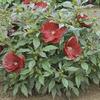
|
Hibiscus 'Crème de la Crème'Hibiscus, Hardy
With the SUMMER SPICE series, we have compact, long-blooming hardy-hibiscus in a wider array of colors than previously seen, including the blue tones.This series should be hardy in zones 5 to 9, and prefers acidid well-drained soil.Creme de la Crème has a fuchsia eye that bleeds into a white flower with serrated edges.
[
More Info
]
|

|
Hibiscus 'Mars Madness'Hibiscus, Hardy
Huge 6-8" flowers open flat and are magenta red in color, more on the pink side of the spectrum than ‘Cranberry Crush’. Each flower has a small, darker red halo with overlapping petals and deeply impressed veins. Flowers are produced from the top to the bottom of the plant, rather than only at the top like some older cultivars. Dark olive green leaves have copper highlights, with the newest leaves emerging coppery purple. The large, maple-like leaves are broadly smooth and form a full, billowy habit.
[
More Info
]
|
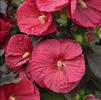
|
Hibiscus 'Midnight Marvel'Hibiscus, Hardy
From 'Summer Storm' PP20443 it inherits very deep wine purple, dissected maple-like foliage that is thick and leathery. From a distance, it appears a bit darker purple than 'Summer Storm'. Like many perennials with purple foliage, this one needs to be exposed directly to UV light (grown in full sun) to achieve the darkest foliage color.
From 'Cranberry Crush' PP21984, it inherits very similar glossy, black-red buds which open to 8-9", deep scarlet red flowers. The habit is relatively compact, measuring in at 4' tall x 4 ½' wide which is intermediate in size between its parents.
Since this variety is an indeterminate bloomer (has buds at several nodes up the stem), it blooms for an extended period from midsummer into early fall. We have been incredibly impressed by the growth and performance of 'Midnight Marvel' and think you will be equally delighted!
[
More Info
]
|
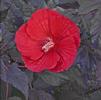
|
Hibiscus 'Perfect Storm'Hibiscus, Hardy
Gardeners loved the dark foliage of ‘Summer Storm’ Hibiscus, but it got too big for a small garden space. ‘Perfect Storm’ takes the dark foliage and shrinks it down to a manageable size (about half the height of ‘Summer Storm’).
At 3 feet tall, it will still be the centerpiece of your sunny garden. This beauty demands a presence! ‘Perfect Storm’ has huge, 7-8" wide, white flowers with a bright red eye that radiates out the veins, with the petals edged with pink. Enjoy its blooms from late summer into early fall.
[
More Info
]
|
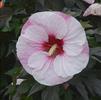
|
Hibiscus 'Starry Starry Night'Hibiscus, Hardy
Interesting 7-8" flowers are pale pink with darker pink speckling and veining. The flowers are held on bright green carpels, which contrast nicely with the dark foliage. Flowers are produced from the top to the bottom of the plant, rather than only at the top like some older cultivars. Incredibly dark, near-black, broad, maple-like leaves form an upright clump in the landscape.
[
More Info
]
|
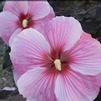
|
Hibiscus 'Summer in Paradise'Hibiscus, Hardy
There’s no sight quite like a Hardy Hibiscus blooming in late summer, and ‘Summer in Paradise’ truly delivers with its refined habit and attractive, large flowers and floriferous performance. Deep red buds open to 7-8" hot cerise red flowers. Medium green, maple-like leaves are accented by olive green edges. The large leaves quickly fill in the habit to keep it appearing full and refined. Flowers are produced from the top to the bottom of the plant, rather than only at the top like some older cultivars. Use in place of a shrub in your garden.
[
More Info
]
|

|
Hibiscus 'Vintage Wine'Hibiscus, Hardy
Near-black buds open to huge 7", scarlet red flowers that shimmer in the sun with a darker red eye. The overlapping petals of ‘Vintage Wine’ have a crinkled texture and open completely with minimal cupping. Flowers are produced from the top to the bottom of the plant, rather than only at the top like some older cultivars.
Dark green, heart-shaped leaves form a densely upright, columnar clump. Use this incredibly dense variety as a focal point in your sun garden.
‘Vintage Wine’ differs from ‘Cranberry Crush’ with the shape of its leaves, the tone of flower color (a warmer red), and the density of its plant habit.
[
More Info
]
|
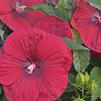
|
Hibiscus lasiocarpusHibiscus, Rose Mallow
White or pink flowers with red centers grow 4 to 5 in. across. Flowers open for many weeks in July through October.. Large fuzzy leaves and a shrublike form give this plant substantial bulk in the landscape. Plants generally break dormancy late in spring so be patient. Tolerates some shade but flower production is best in full sun. Tolerates heat and humidity.
[
More Info
]
|
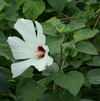
|
Hosta 'Abiqua Drinking Gourd'Hosta
Dark blue-green, seersuckered leaves with heavy substance display a unique cupped form up to 3 inches deep.White flowers appear just above the foliage on 22" scapes in early summer. Demonstrates good slug resistance.
[
More Info
]
|

|
Hosta 'August Moon'Hosta
Heavily corrugated gold leaves are 6" long and 5" wide. Leaves hold their color all season. White flowers in July.
[
More Info
]
|
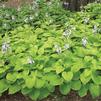
|
Hosta 'Autumn Frost'Hosta
The leaves emerge frosty blue with a bright yellow margin that lightens to creamy white during the summer. It forms a medium sized mound topped with light lavender flowers in mid to late summer. Autumn Frost is a sport of the 2010 Hosta of the Year, First Frost, which in turn is a sport of the champion of blue hostas, Halcyon. It is a showier version of First Frost, displaying extra wide margins. PROVEN WINNER.
[
More Info
]
|
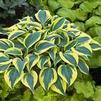
|
Hosta 'Big Daddy'Hosta
Huge, round, puckered leaves are deep blue. White flowers on 36" stems. Good back-of-the-border specimen.
[
More Info
]
|
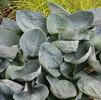
|
Hosta 'Blue Angel'Hosta
Large size selection with gigantic, heavily textured, blue-green leaves. Foliage forms large, tiered mound. Light lavender flowers in June and July. One of the most vigorous blue hostas. Slug resistant. Cupped, heavily-textured blue leaves grow 16" long and 13" wide with time.
[
More Info
]
|
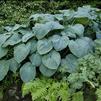
|
Hosta 'Blue Mouse Ears'Hosta
Adorable true miniature selection featuring thick, heart shaped blue-green foliage, forming a perfectly symmetrical mound. Lavender flowers appear in July. 2008 Hosta of the Year.
[
More Info
]
|

|
Hosta 'Blueberry Muffin'Hosta
This excellent blue hosta is a strong grower and reliable performer in the landscape. It forms a medium sized mound of large, blue, rounded leaves that are rugose and puckered in unusual patterns. Late in the season, the foliage transitions to green. Attractive light mauve speckles appear on the petioles.
Lavender flowers on proportional scapes just above the foliage in early summer.
Hostas are exceedingly popular perennials in today's gardens due to their versatility in the landscape. Their subtle colors, tall flower scapes, and broad, coarse leaves fill a niche in garden designs that few other plants can achieve. Their large leaves provide excellent coverage for dying bulb foliage. Hostas also grow well in city environments where the air may be polluted by car exhaust, etc.
This premium hosta variety is part of a group of the finest hostas available today. Members of this collection were evaluated and selected by a group of specialty hosta growers in zones 4-7, who together have a combined total of over 150 years of hosta growing experience. To be considered a premium hosta, plants must perform superbly in all four zones (4-7). They must also exhibit exemplary garden presence and performance, have a long season of appeal in the landscape, have leaves of good substance, and demonstrate a greater resistance to common garden pests.
[
More Info
]
|
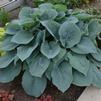
|
Hosta 'Coast to Coast'Hosta
Adding a new color to the Proven Winners hosta line, ‘Coast to Coast’ is a giant, solid gold hosta that makes a striking specimen in the shade garden. Its foliage emerges gold in spring and turns lighter gold with a bit more sun exposure in the summer months. As the leaves mature, they become thick and puckered with wavy edges and have nearly white undersides.
The upright vase-shaped clump is topped with green scapes carrying pale violet flowers in midsummer. This hosta tends to be more slug resistant because of its thick substance foliage and rigidly upright habit.flower scape grows to 36"
[
More Info
]
|
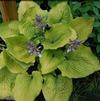
|
Hosta 'Curly Fries'Hosta
Miniature to small sized hosta forms an arching, wiggly clump of extremely rippled, narrow leaves. Position this hosta where it will receive morning sun, as its chartreuse foliage will be brightest there. Mature plants will develop red speckled petioles. Great for containers or the front of the border.
Lavender flowers top the clump in midsummer.
Hostas are exceedingly popular perennials in today's gardens due to their versatility in the landscape. Their subtle colors, tall flower scapes, and broad, coarse leaves fill a niche in garden designs that few other plants can achieve. Their large leaves provide excellent coverage for dying bulb foliage. Hostas also grow well in city environments where the air may be polluted by car exhaust, etc.
[
More Info
]
|

|
Hosta 'Designer Genes'Hosta
‘Designer Genes’ is incredibly striking in the spring as the brilliant yellow leaves emerge from contrasting deep wine red shoots. It quickly grows to form a medium sized mound of bright yellow leaves with showy bright red petioles.
Compared to other yellow hostas, this variety holds its coloring longer. Later in the season, the foliage mellows to more of a chartreuse green color. Tall, red scapes carry the purple flowers in late summer.
[
More Info
]
|
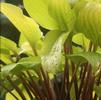
|
Hosta 'Earth Angel'Hosta
Large, heart-shaped, blue-green leaves with wide, creamy-white margins that are creamy yellow in spring. Pale lavender flowers appear on 40 inch scapes in midsummer. A sport of H. 'Blue Angel'.
[
More Info
]
|
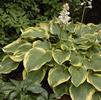
|
Hosta 'Elegans'Hosta
Large size selection featuring huge blue-gray, quilted foliage. White flowers on tall scapes in May and June. Tolerates dry shade. Slug resistant.
[
More Info
]
|

|
Hosta 'Empress Wu'Hosta
Largest hosta ever introduced. Huge, dark green, deeply veined foliage forms a tall and wide mound. Pale violet flowers rise just above foliage in July and August. PROVEN WINNER.
[
More Info
]
|
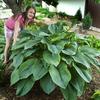
|
Hosta 'Fire & Ice'Hosta
Small size selection has heart-shaped leaves with pure white centers and dark green margins have heavy substance. Lavender flowers on tall scapes bloom in July. Sun and slug resistant. A sport of 'Patriot'. Needs morning sun or filtered shade to thrive.
[
More Info
]
|
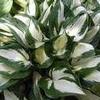
|
Hosta 'Fire Island'Hosta
[
More Info
]
|
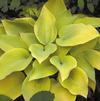
|
Hosta 'First Frost'Hosta
Medium size selection has intense blue-green center. Gold margin changes to pure white as it matures. Lavender flower on tall scapes bloom in July and August. Sport of Halcyon.
[
More Info
]
|
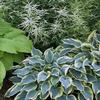
|
Hosta 'Fragrant Blue'Hosta
Medium size selection with slightly wavy, blue-green leaves. Foliage forms tiered mound and holds color throughout the season. Fragrant, pale lavender to white flowers appear in July and August.
[
More Info
]
|

|
Hosta 'Francee'Hosta
Medium size selection featuring dark green, slightly glossy foliage with clear white margins. Lavender flowers in June and July. Excellent sun tolerance. A classic hosta. Leaves grow 7" long and 5" wide. Variegation holds up well in sun.
[
More Info
]
|
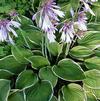
|
Hosta 'Francis Williams'Hosta
[
More Info
]
|

|
Hosta 'Gold Standard'Hosta
Medium-large size selection featuring puckered yellow leaves with irregular dark green margins. As leaves mature, center becomes gold. Morning sun helps the gold color develop. Pale lavender flowers in July and August. Leaves are 7" long and 5" wide. Upright, vase-shaped habit.
[
More Info
]
|
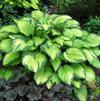
|
Hosta 'Golden Tiara'Hosta
Medium size selection featuring tidy yellow margins with an apple-green center. Light purple flowers in June and July. A vigorous grower.
[
More Info
]
|
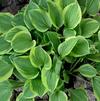
|
Hosta 'Guacamole'Hosta
Medium-large size selection featuring huge, apple green leaves with dark green margins. Foliage color intensifies with sun exposure. Fragrant, pale lavender flowers in July. Leaves are 11" long and 8" wide. American Hosta Growers' Association 2002 Hosta of the Year.
[
More Info
]
|

|
Hosta 'Halcyon'Hosta
Medium-large size selection featuring frosty blue-green lance-shaped foliage. Deeply ribbed leaves are 8" long and 5" wide. Pale blue-violet flowers in abundance June and July. A vigorous grower. Thick foliage realizes great slug resistance. Retains blue color all season.
[
More Info
]
|

|
Hosta 'Happy Dayz'Hosta
Sport of ‘Orange Marmalade’ with wider, more blue-green margins. Leaves of good substance have yellow centers which brighten to parchment and margins that turn dark green in summer. The leaves of adult vernalized plants are more cupped at the base compared to its parent. Light lavender flowers in midsummer.
Hostas are exceedingly popular perennials in today's gardens due to their versatility in the landscape. Their subtle colors, tall flower scapes, and broad, coarse leaves fill a niche in garden designs that few other plants can achieve. Their large leaves provide excellent coverage for dying bulb foliage. Hostas also grow well in city environments where the air may be polluted by car exhaust, etc.
[
More Info
]
|
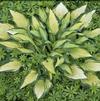
|
Hosta 'Hudson Bay'Hosta
An improvement over its parent, Eskimo Pie, this new sport is a much showier, larger specimen and a stronger grower overall. The wider, brighter blue margin and apple green jetting contrast nicely with the creamy white center all season long. The leaves are of heavy substance, exhibiting good slug resistance in the landscape. This plant forms a large mound of attractive foliage topped with near-white flowers on white scapes in early summer. PROVEN WINNER.
[
More Info
]
|
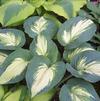
|
Hosta 'Island Breeze'Hosta
Wide, dark green margins stand in sharp contrast to the bright yellow centers in early spring. As summer approaches, the centers become more chartreuse when plants are grown in heavier shade or lighter yellow if they are grown in more sun. Like ‘Paradise Island’, this one also has showy red speckled petioles that bleed up into the leaves.
Dark lavender flowers appear on reddish green scapes in midsummer.
Hostas are exceedingly popular perennials in today's gardens due to their versatility in the landscape. Their subtle colors, tall flower scapes, and broad, coarse leaves fill a niche in garden designs that few other plants can achieve. Their large leaves provide excellent coverage for dying bulb foliage. Hostas also grow well in city environments where the air may be polluted by car exhaust, etc.
[
More Info
]
|

|
Hosta 'June'Hosta
Medium size selection featuring blue-green foliage with irregularly shaped creamy gold centers. Pale bluish-lavender flowers appear in July and August. Needs some sunlight to develop the best color. Good leaf substance. Slug resistant. American Hosta Growers' Association 2001 Hosta of the Year.
[
More Info
]
|
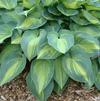
|
Hosta 'Key West'Hosta
Intense gold, smooth, heart shaped leaves adorn this very large hosta. Bright filtered shade draws out the most intense gold coloration. Lavender flowers are produced in early summer. Fast grower.
[
More Info
]
|
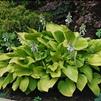
|
Hosta 'Liberty'Hosta
Sport of H. 'Sagae'. Blue-green leaves have wide, dramatically streaked, yellow margins which fade to creamy-white later in the season. They are of much heavier substance, providing greater slug resistance. Lavender flowers appear on 40 inch scapes from early to midsummer. 2012 Hosta of the year.
[
More Info
]
|

|
Hosta 'Loyalist'Hosta
A sport of the famous H. 'Patriot' with reverse variegation; leaves have deep green margins and nearly pure white centers that are not prone to melting out. Leaves have heavy substance. Pale lavender flowers are borne upon 20 inch tall, creamy-white scapes in midsummer.
Hostas are exceedingly popular perennials in today's gardens due to their versatility in the landscape. Their subtle colors, tall flower scapes, and broad, coarse leaves fill a niche in garden designs that few other plants can achieve. Their large leaves provide excellent coverage for dying bulb foliage. Hostas also grow well in city environments where the air may be polluted by car exhaust, etc.
[
More Info
]
|
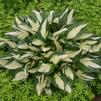
|
Hosta 'Maui Buttercups'Hosta
One of the very best small, yellow hostas. Bright gold, 5", rounded leaves are deeply cupped and corrugated. They are of heavy substance and demonstrate good slug resistance. Near white flowers appear on 18" scapes in midsummer. Hostas are exceedingly popular perennials in today's gardens due to their versatility in the landscape. Their subtle colors, tall flower scapes, and broad, coarse leaves fill a niche in garden designs that few other plants can achieve. Their large leaves provide excellent coverage for dying bulb foliage. Hostas also grow well in city environments where the air may be polluted by car exhaust, etc.
[
More Info
]
|
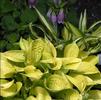
|
Hosta 'Minuteman'Hosta
Medium size selection featuring very dark green, slightly cupped foliage with a pure white margin. Foliage has good substance which provides some slug resistance. Lavender flowers in June and July. Sport of H. 'Francee'.
[
More Info
]
|

|
Hosta 'Old Glory'Hosta
Heart-shaped leaves have golden yellow centers and irregular, 1 inch wide, dark green margins.Light lavender flowers appear on 24 inch scapes in midsummer.
[
More Info
]
|
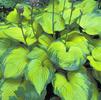
|
Hosta 'Pandora's Box'Hosta
A pocket-sized hosta for the collector. 2 inch long leaves have blue-green margins, white centers, and green streaking between the blue and white areas.Lavender, bell-shaped flowers appear on 10-12 inch scapes in early summer. A sport of H. 'Baby Bunting'
[
More Info
]
|
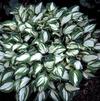
|
Hosta 'Paradigm'Hosta
[
More Info
]
|

|
Hosta 'Patriot'Hosta
Medium size selection featuring slightly wavy, dark green foliage with wide white margins. Lavender flowers appear in July and August. Great heat and sun tolerance. Variegation remains fresh until frost. Really stands out in the garden. American Hosta Growers' Association 1997 Hosta of the Year.
[
More Info
]
|
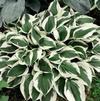
|
Hosta 'Pocketfull of Sunshine'This cute small hosta grows quickly to form a compact clump of thick, rugose, distinctly cupped leaves that are yellow with broad, deep green margins at maturity. The centers of the leaves are chartreuse in spring and brighten as the season progresses.
Light lavender flowers are produced in early to midsummer.
[
More Info
]
|

|
Hosta 'Prairie Sky'Hosta
[
More Info
]
|

|
Hosta 'Praying Hands'Hosta
Upright, narrow, tightly folded leaves resemble hands folded in prayer. Dark green leaves are heavily rippled with very narrow, gold margins. Leaves have a matte finish above but are folded, revealing their shiny undersides. Lavender flowers on 18" scapes are abundant in late summer. Slug resistant. 2011 Hosta of the year.
[
More Info
]
|
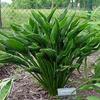
|
Hosta 'Rainbow's End'Hosta
This unique hosta exhibits incredibly variegated, shiny foliage. The bright yellow leaves of good substance have dark green margins that jet into the center, and the center brightens to creamy white in summer. It forms a medium sized mound of attractive foliage in the landscape.
In late summer, showy red scapes (16-19" tall) carry the dark lavender, tubular flowers.
Hostas are exceedingly popular perennials in today's gardens due to their versatility in the landscape. Their subtle colors, tall flower scapes, and broad, coarse leaves fill a niche in garden designs that few other plants can achieve. Their large leaves provide excellent coverage for dying bulb foliage. Hostas also grow well in city environments where the air may be polluted by car exhaust, etc.
[
More Info
]
|

|
Hosta 'Rainforest Sunrise'Hosta
Leaves are solid light green when they emerge, then quickly develop dramatic dark green borders and radiant gold centers. They are thick and glossy, holding up well all season, and are also slug resistant. Light lavender flowers are produced on 24 inch scapes in midsummer.
A sport of H. 'Maui Buttercups'. This premium hosta variety is part of a group of the finest hostas available today. Members of this collection were evaluated and selected by a group of specialty hosta growers in zones 4-7. They must also exhibit exemplary garden presence and performance, have a long season of appeal in the landscape, have leaves of good substance, and demonstrate a greater resistance to common garden pests.
[
More Info
]
|

|
Hosta 'Revolution'Hosta
Dark green foliage with cream centers speckled with soft green. Leaves have heavy substance.
[
More Info
]
|

|
Hosta 'Royal Wedding'Hosta
Medium sized hosta grows quickly to form an upright mound of thick, shiny green leaves with very wide, creamy white margins which brighten to pure white. Pure white flowers in mid to late summer are 3-4"and sweetly perfumed. Be sure to plant it near a patio or pathway where its fragrance can be enjoyed up close.
Hostas are exceedingly popular perennials in today's gardens due to their versatility in the landscape. Their subtle colors, tall flower scapes, and broad, coarse leaves fill a niche in garden designs that few other plants can achieve. Their large leaves provide excellent coverage for dying bulb foliage. Hostas also grow well in city environments where the air may be polluted by car exhaust, etc.
[
More Info
]
|
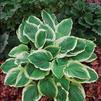
|
Hosta 'Sagae (syn fluctuans Variegated)'Hosta
Foliage with heavy substance, frosty green centers and broad, creamy yellow edges. Heart-shaped leaves with wavy edges are 12" long and 10" wide. Upright, vase-shaped habit. Pale lavender blooms. American Hosta Growers' Association 2000 Hosta of the Year.
[
More Info
]
|

|
Hosta 'Seducer'Hosta
Large sized hosta with broadly, ovate leaves. Foliage is dark green with a slightly ruffled, gold margin and a trace of white between the center and margin. The white coloring needs the summer heat to develop. Near-white, tubular flowers are produced from late summer through early fall. PROVEN WINNER.
[
More Info
]
|
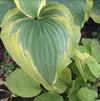
|
Hosta 'Stained Glass'Hosta
Large size selection has huge 10.5 inch long brilliant gold leaves with dark green margins. Large fragrant lavender flowers on tall scapes bloom July and August. A sport of 'Guacamole'. American Hosta Growers' Association 2006 Hosta of the Year.
[
More Info
]
|
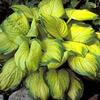
|
Hosta 'Sum and Substance'Hosta
One of the largest Hostas available. Huge glossy leaves are thick-textured giving them good slug and deer resistance. Leaf color varies with light conditions from light green to chartreuse to gold. Pale lavender flowers on tall scapes in July and August. More sun tolerant than most hostas. American Hosta Growers' Association 2004 Hosta of the Year.
[
More Info
]
|
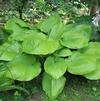
|
Hosta 'Twilight'Hosta
A sport of H. fortunei 'Aureomarginata' with wider gold margins, good substance and larger leaves.
[
More Info
]
|

|
Hosta 'Vulcan'Hosta
‘Vulcan’ is a vigorous, white-centered sport of ‘Captain Kirk’. We are very impressed with its excellent growth rate and light colored center that does not melt out. Contrasting dark green margins and lighter yellow coloring jet towards the white center of each broad, heart-shaped leaf. White scapes carry the light lavender flowers just above the foliage in mid to late summer.
[
More Info
]
|
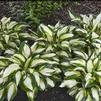
|
Hosta 'Waterslide'Hosta
This blue hosta rounds out the color palette of the SHADOWLAND collection. Thick, wavy, waxy blue-gray leaves lend an essence of water to the shade garden.
[
More Info
]
|
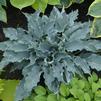
|
Hosta 'Wheee!'Hosta
Playful ruffled green foliage has a cream margin from the tip to the petiole. Foliage has a heavy substance and is slug resistant. Lavender flowers bloom in mid summer.
[
More Info
]
|
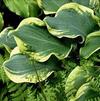
|
Hosta 'Wide Brim'Hosta
Medium size selection featuring dark green, textured leaves with wide, buttery yellow margins. Leaves are 7" long and 5" wide. Pale lavender to white flowers in July and August. A classic hosta.
[
More Info
]
|

|
Hosta 'Wolverine'Hosta
Blue-green foliage with wide, gold margins.The wavy, tapering leaves can measure 10" long. Quickly forms a dense, mound with a cascading habit. Lavender flowers appear on 20" scapes in late summer. This hosta will catch your eye from quite a distance. Hostas are exceedingly popular perennials in today's gardens due to their versatility in the landscape. Their subtle colors, tall flower scapes, and broad, coarse leaves fill a niche in garden designs that few other plants can achieve. Their large leaves provide excellent coverage for dying bulb foliage. Hostas also grow well in city environments where the air may be polluted by car exhaust, etc.
[
More Info
]
|
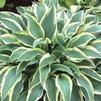
|
Hydrangea arborescensHydrangea
[
More Info
]
|

|
Hypericum calycinumSt. John'S Wort
Low, creeping woody shrub with rich green foliage. Large, bright yellow flowers with numerous, bushy stamens cover the plant in July and August. Spread by underground stems. Tolerates poor soils.
[
More Info
]
|

|
Iberis sempervirens 'Snowflake'Candytuft
Cushion of evergreen foliage smothered in pure white flowers in 2-3" inflorescences.
[
More Info
]
|

|
Iberis sempervirens 'Tahoe'Candytuft
Clusters of small, white flowers blanket the wide mound of narrow, evergreen leaves. The compact uniform habit makes it perfect for use as edging or ground cover.
[
More Info
]
|

|
Ilex deciduaHolly, Deciduous
[
More Info
]
|

|
Ilex verticillataHolly, Winterberry
[
More Info
]
|

|
Iris 'Beverly Sills'Iris, Tall Bearded
Flamingo pink, lacy blooms with flaring falls. Prolific bloomer and winner of many awards, including the Dykes medal.
[
More Info
]
|
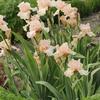
|
Iris 'Firebreather'Iris, Tall Bearded
Striking, luminous orange self with tangerine beards.Blooms in early summer.
No garden would be complete without Tall Bearded Irises. Though they have been grown for decades, new and improved hybrids continue to be developed every year and fabulous color combinations have been achieved. The Tall Beardeds bloom after the Dwarf Irises but before the Japanese and Siberian Irises. They are wonderful accent plants for late spring gardens.
[
More Info
]
|
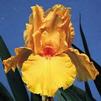
|
Iris 'Harvest of Memories'Iris, Tall Bearded
Radiant all-yellow iris with widely ruffled petals. Slight sweet fragrance. Outstanding branching and bud count; vigorous grower. Blooms in late spring with a dependable rebloom in summer and fall. The Tall Beardeds bloom after the Dwarf Irises but before the Japanese and Siberian Irises.
[
More Info
]
|
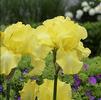
|
Iris 'Violet Turner'Iris, Tall Bearded
Charm emanates from this violet-purple bitone.. Not only does it have a beautiful floral color with shining tangerine beards, violet Turner also has a pronounced sweet fragrance and tends to rebloom in the summer.
[
More Info
]
|
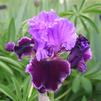
|
Iris 'War Chief'Iris, Tall Bearded
Rich ruby colorwith abundance of bloom. Tall strong stems produce four branches with 11-13 buds. War Chief has a non-fading red tone, with bright yellow beards.
[
More Info
]
|
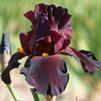
|
Iris cristataIris, Dwarf Crested
Clouds of pretty blue flowers float just above the foliage for two weeks in April or May. Unlike many iris, the foliage is handsome all through summer. Nice edging plant for the front of a shaded garden or path. Also a good slow moving ground cover.
[
More Info
]
|
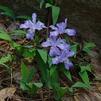
|
Iris cristata 'Powder Blue Giant'Iris, Dwarf Crested
Considerably huskier and more vigorous than the spacies, this sweet giant boasts 3" flowers of delicate light blue with golden crests and deep blue accents. Blooms in April and May. Vigorous and easy to grow!
[
More Info
]
|
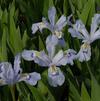
|
Iris fulvaIris, Copper
Unusual copper color flower is a beardless variety native to swamps and wetlands. Flowers appear in May and June on tall scapes. Bright green foliage is sword shaped. Pollinated by hummingbirds.
[
More Info
]
|
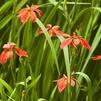
|
Iris germanica 'Hemstitched'Iris, Tall Bearded
Lilac plicata stitching graces the gently ruffled edges of these broad white petals. Beauty and serenity emanate from this minimalist interpretation of the plicata pattern. In addition to its color, Hemstitched has inherited the reblooming habit of its notable parent, Earl of Essex. It is also a very reliable re-blooming variety. Reblooming irises are noted for producing both a main bloom in spring and an additional bloom from late summer into fall (often to frost). The time and duration of the rebloom may vary considerably by climatic region, however. Sword-shaped, linear leaves. The Bearded Iris makes wonderful cut flower, lasting a week or more. They are well suited for meadows, woodland gardens and borders.
[
More Info
]
|
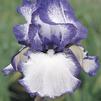
|
Iris Germanica 'Jurassic Park'Iris, Bearded
Dramatic Colour Contrast on Huge Blooms!
An outstanding iris that has won multiple awards, including the American Iris Society's Wister and President's Cup! Broad, ruffled form and large, well-spaced blooms are blessed with great substance so they keep their good looks a long time in the garden and as cut flowers. Blooms on 34-36" stems in mid spring followed by a second round of blooms in late summer to early fall.
[
More Info
]
|
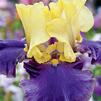
|
Iris Germanica 'Mary Frances'Iris, Bearded
Multiple award winner, including the most prestigious award of the American Iris Society, the Dykes Medal in 1979. Fragrant and lovely blue-orchid flowers delicately splashed with pristine white on their falls. Very floriferous, with 6-9 buds per stem and sometimes more!
[
More Info
]
|
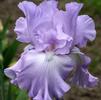
|
Iris pallida 'Argentea-variegata'Iris, Sweet
An excellent accent plant with flattened, silvery white leaves with green stripes. Lilac-blue flowers are fragrant.
[
More Info
]
|
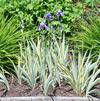
|
Iris pallida 'Variegata'Iris, Sweet
Blue-green leaves with white and cream streaking. Lavender-blue flowers. Foliage looks good all season. Grow in well-drained soil.
[
More Info
]
|

|
Iris pseudacorus 'Variegata'Iris, Yellow Flag
Like the species but new leaves are striped with yellow and green. Foliage turns solid green by midsummer.
[
More Info
]
|

|
Iris sibirica 'Caesar's Brother'Iris, Siberian
Rich, velvet violet flowers bloom after German Iris. Refined, 1/2"-wide leaves form an upright clump that is handsome all summer. Less prone to iris borer and soft rot than other irises.
[
More Info
]
|

|
Iris sibirica 'White Swirl'Iris, Siberian
Delicate ivory-white flowers have a touch of gold near the throat. Blooms in May and June. Narrow, dark green, vase shaped foliage remains attractive all season. Considered one of the finest whites. Less prone to iris borer and soft rot than other irises.
[
More Info
]
|
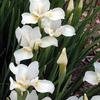
|
Iris virginica var. shreveiIris, Southern Blue Flag
This moisture-loving iris has fragrant, blue violet flowers with falls crested in yellow and white. Narrow, bright green leaves often lie on the ground or in water.
[
More Info
]
|
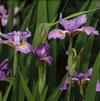
|
Itea virginicaSweetspire
[
More Info
]
|

|
Juncus effususRush, Soft
A native clump-forming wetland plant with dark green soft, round stems. An effective foliage accent for pools, ponds and stream sides. Will grow in shallow water or bogs. Foliage turns yellow in fall before turning brown. Insignificant golden flowers June through August. Attracts songbirds.
[
More Info
]
|
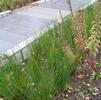
|
Juncus inflexus 'Blue Arrows'Rush, Hard
Although often grown as a wetland plant, Juncus inflexus is quite drought tolerant once established. Blue Arrows Rush thrives in heat and full sun. It fits perfectly beside a pool, pond, or stream where its reflection captures the mood of an aquatic paradise. Blue Arrows’ soft blue-green color and beautiful, upright form make it irresistible in container combos and annual beds. In the wild, Juncus inflexus is found in wet soils along streams, ditches, and on wet, sandy and peaty hillsides. This genus is one of our favorites: Juncus are tough, versatile, and evergreen in most climates ’ they’re versatile plants underused in the trade.
[
More Info
]
|
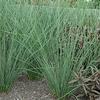
|
Juncus tenuisRush, Poverty
[
More Info
]
|
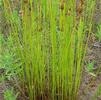
|
Juncus tenuis 'Blue Dart'Rush, Common
'Blue Dart' features attractive, linear, blue to blue-green foliage. It is sometimes used in containers as an alternative to dracaena. 'Blue Dart' is sometimes sold in commerce today as a cultivar of Juncus inflexus and Juncus tenuis. Industry naming is confused. Plant form is closer to Juncus inflexus and may indeed by a cultivar thereof. Blooms May throught September. Easily grown in consistently moist to wet soils in full sun. Tolerates light shade, but performs best in full sun. Tolerates heavy soils. Needs ample moisture, but also does surprisingly well in slightly moist soils that do not dry out. Plants may take time to establish, but once established will slowly spread by creeping rhizomes. May freely self-seed in optimum growing conditions. Propagate by division in early spring.
[
More Info
]
|
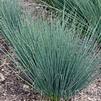
|
Kalimeris incisa 'Blue Star'Aster, False
Long blooming daisy-like flowers are pale blue with yellow center. Bloom time is June through September. Compact green foliage is clump-forming. Excellent for the front of the border. Loves heat and humidity. Tolerates drought.
[
More Info
]
|
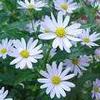
|
Kniphofia 'Flamenco'Red Hot Poker Plant
Flower spikes in mixed colors of creamy white, yellow, orange and red or shades of all four colors. A 1999 All-America Selection winner. Hardy to zone 6.
[
More Info
]
|

|
Koeleria macranthaGrass, June
[
More Info
]
|
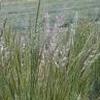
|
Lamium maculatum 'Anne Greenaway'Spotted Nettle
Exquisite blend of chartreuse, silver, medium and pale green foliage extends season of interest. Mauve flowers in May through July. Excellent groundcover brightens shady areas.
[
More Info
]
|

|
Lamium maculatum 'Ghost'Spotted Nettle
Forms a large mound of silver leaves creating a great backdrop for attractive clusters of bright orchid-purple flowers. Flowers appear May through August. Excellent for dry shade areas under trees.
[
More Info
]
|

|
Lamium maculatum 'Orchid Frost'Spotted Nettle
Trailing stems bearing leaves with shimmering silver centers and blue-green margins. Showy, heavy blooming, pink flowers. Purported to resist foliage diseases. PP11122
[
More Info
]
|

|
Lamium maculatum 'Pink Pewter'Spotted Nettle
Silver-white leaves have a narrow green margin. Salmon-pink flower clusters May through July. Excellent mat forming ground cover to brighten shaded areas.
[
More Info
]
|

|
Lamium maculatum 'Purple Dragon'Spotted Nettle
This robust selection produces the largest deep purple snapdragon-like flowers of any Lamium. Arranged in larger denser terminal spikes, the flowers jump right out of their bright silvery foliage. PPAF
[
More Info
]
|

|
Lamium maculatum 'Red Nancy'Spotted Nettle
Excellent ground cover featuring rose-red flowers over silver-white leaves with green margins.
[
More Info
]
|

|
Lamium maculatum 'White Nancy'Spotted Nettle
Nearly all-silver leaves with narrow, blue-green margins are a lovely backdrop for pure white, hooded flowers. Excellent ground cover. Similar to 'Beacon Silver' but with white flowers. More heat tolerant than 'Beacon Silver'.
[
More Info
]
|

|
Lavandula angustifolia 'Hidcote Blue'Lavender
Downy bluish-green foliage in a compact, erect habit, with tall spikes of fragrant purple flowers in midsummer. It's bushy, evergreen form makes it an excellent short hedge plant.
[
More Info
]
|

|
Lavandula angustifolia 'Munstead'Lavender
Violet-blue flowers and a compact growth habit. Early flowering. Grow in light, sandy, alkaline soil.
[
More Info
]
|

|
Lavandula angustifolia 'SWEET ROMANCE'Lavender
The grey-green foliage forms a compact mound topped with plump, rich violet purple flower wands that are perfect for cutting for fresh and dried bouquets. Blooms the first year with little or no vernalization.
[
More Info
]
|
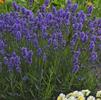
|
Lavandula intermedia 'Phenomenal'Lavender
A uniform plant both in production and the garden. Extremely tolerant to heat & humidity with superior winter survival and hardiness to Zone 5 - this lavender has been tested in several locations in Minnesota and Michigan with excellent results. Also resistant to common root and foliar diseases. Blooms best after vernalization. Developed & introduced by Peace Tree Farm.
With remarkable fragrance and flower presentation above uniform mounds of silvery foliage in spring and summer, it is truly 'Phenomenal' for fresh and dried flower arrangements, oils, and culinary delights – and of course, the perennial border or patio container!
[
More Info
]
|
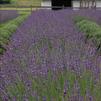
|
Leucanthemum superbum 'Cream Puff'Daisy, Shasta
A compact variety with large flowers. Buttery yellow buds give way to the classic yellow and white of the Shasta Daisy, but with double rows of petals for full coverage of the dark green foliage. Cream Puff does not require vernalization to bloom, and respond well to deadheading. A great little Leucanthemum, perfect for the front of the border or for containers!
[
More Info
]
|

|
Leucanthemum Superbum 'Spoonful of Sugar'Daisy, Shasta
The first thing you’ll notice about this cute Shasta Daisy is the enormous flower size. The second thing you’ll notice is its incredibly compact, dome-like habit, with flowers produced almost all the way to the ground. 4.5in, creamy white flowers have two rows of very long petals. Flowers are held tight and compact against the attractive, dark green foliage, with a second wave of flowers following the initial wave. Growers will appreciate that ‘Spoonful of Sugar’ is a free-flowering variety.
[
More Info
]
|
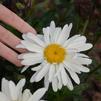
|
Leucanthemum x superbum 'Banana Cream'Daisy, Shasta
The 4-5 inch wide flowers are lemon yellow when they open, brightening to light butter yellow and finally to creamy white as they mature. An extra row of ray petals gives the flowers a fuller appearance than truly single varieties. Since it produces flower buds at each axillary shoot, it blooms prolifically all summer long atop strong, upright stems. Compared to older cultivars, this plant has nicely compact, dark green foliage and exhibits increased disease resistance. It has proven to be a very strong grower and rapid multiplier. Try planting a few in the landscape or combination containers and youll be rewarded with loads of blooms for fresh bouquets. Flowers last up to two weeks when cut. PROVEN WINNER.
[
More Info
]
|

|
Leucanthemum x superbum 'Becky'Daisy, Shasta
Large, single flowers with white petals and yellow centers on strong stems. Long bloom time is June through October. The best Shasta daisy for hot humid climates. 2003 Perennial Plant of the Year.
[
More Info
]
|
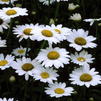
|
Leucanthemum x superbum 'DAISY MAY Daisy Duke'Daisy, Shasta
Three inch wide, single, pure white, daisy-like flowers with a gold button center forms a solid dome of bloom. A super compact, highly floriferous selection. In the Midwest, this plant typically grows 20-24” tall and wide and blooms from early summer into late summer. However, to account for the national variability in Proven Winners trials, they describe this plant as growing 12-24” tall and blooming from spring to fall with deadheading. PROVEN WINNER.
[
More Info
]
|
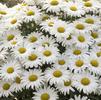
|
Leucanthemum x superbum 'Snow Cap'Daisy, Shasta
Dwarf variety with large, single white flowers in abundance June through August. Dark green clump forming foliage is compact. Tolerates light shade. Good for massing or edging at the front of the border.
[
More Info
]
|
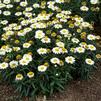
|
Leucanthemum x superbum 'Whoops-a-Daisy'Daisy, Shasta
Whoops-a-Daisy’ was no accident! It was the result of a planned breeding program at Walters Gardens, Inc. An improvement over the old standard ‘Snowcap’ in many respects; it’s time to look at this new dwarf Leucanthemum.
‘Whoops-a-Daisy’ forms an exceptionally dense, rounded ball-shaped mound of dark green foliage that becomes completely blanketed in large 3-4”, white flowers with gold centers from early through midsummer. It has better flower coverage and a more uniform habit compared to ‘Snowcap’, and the individual flowers have a fuller, fluffier appearance.
[
More Info
]
|
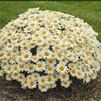
|
Leymus arenarius 'Blue Dune'Grass, Blue Lyme
[
More Info
]
|

|
Liatris asperaBlazing Star, Rough
Spires of fluffy, button-like, rosy purple flowers in September--this is one of the last liatris to bloom. Migrating butterflies love the nectar. A good candidate for a wild area. Grow in lean soil so plants don't grow so tall they need support.
[
More Info
]
|
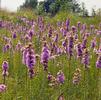
|
Liatris microcephalaGayfeather, Tiny-Headed
Multi-stemmed plants with rose purple flower spikes and narrow, grass-like leaves. Grows best in dry soil in full sun.
[
More Info
]
|

|
Liatris pycnostachyaBlazing Star, Prairie
Dense spikes of magenta flowers on strong stems attract hordes of butterflies.
[
More Info
]
|
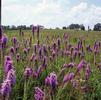
|
Liatris scariosaBlazing Star, Eastern
Rounded, somewhat shaggy flowers of a vibrant pinkish purple line tall stems in late summer. Prefers dry soil.
[
More Info
]
|
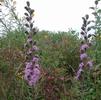
|
Liatris spicataBlazing Star
Deep purple flower spikes in July and August on erect, grass-like stems. Tolerant of drought, heat and humidity. Attracts songbirds.
[
More Info
]
|
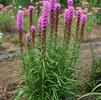
|
Liatris spicata 'Floristan White'Gayfeather
Creamy white flower spikes.
[
More Info
]
|

|
Liatris spicata 'Kobold'Gayfeather
Bright rose-lavender flower spikes on compact plants.
[
More Info
]
|
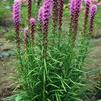
|
Ligularia dentata 'Britt Marie Crawford'Ligularia
Deep, dark glossy chocolate maroon leaves with dark purple on the undersides. Deep orange-yellow daisy-like flowers. Grows best in moist, organic soil. PP16113
[
More Info
]
|

|
Limonium 'Blue Diamond'Statice, Sea Lavender
Brillant blue, long-flowering with compact deep green foliage.
[
More Info
]
|

|
Lindera benzoinSpicebush
[
More Info
]
|

|
Liriope muscari 'Big Blue'Lily Turf
Solid green, grass-like leaves with purple flower spikes in August. Growth habit is fountain-like.
[
More Info
]
|
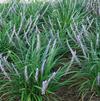
|
Liriope muscari 'Evergreen Giant'Lily Turf
Spikes of deep purple flowers rise above the arching, dark green, grasslike foliage followed by black berries. A superb edging or border plant for partially shaded areas. Tolerates drier conditions when established. Evergreen.
[
More Info
]
|
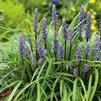
|
Liriope muscari 'Royal Purple'Lily Turf
Spikes of deep purple flowers rise above the arching, dark green, grasslike foliage followed by black berries. A superb edging or border plant for partially shaded areas. Tolerates drier conditions when established. Evergreen.
[
More Info
]
|

|
Liriope muscari 'Variegata'Lily Turf
Green grass-like leaves with white variegation along the edges. Purple flower spikes. Growth habit is fountain-like.
[
More Info
]
|
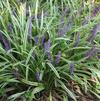
|
Liriope spicataLily Turf, Creeping
[
More Info
]
|
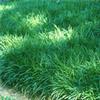
|
Lobelia cardinalisCardinal Flower
[
More Info
]
|
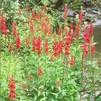
|
Lobelia siphiliticaLobelia, Blue
Stout spikes of two-lipped blue flowers bloom in September and October. Excellent for attracting butterflies and hummingbirds. Great lobelia is a Missouri native perennial which typically grows in moist to wet locations along streams, sloughs, springs, swamps, meadows and in low wooded areas. May self-seed in optimum growing conditions, forming attractive colonies.
[
More Info
]
|
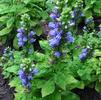
|
Lysimachia nummularia 'Aurea (syn Goldilocks)'Creeping Jenny (Moneywort)
[
More Info
]
|

|
Lysimachia punctata 'Golden Alexander'Loosestrife, Variegated Yellow
Lime green leaves with buttery yellow margins, complemented by starry yellow flowers in mid-late summer. More compact and less invasive than other lysimachias. PP13547
[
More Info
]
|

|
Lythrum virgatum 'Purple Dwarf'Loosestrife, Purple
Prolific, long-lasting, rose pink flower spikes on compact plants. Excellent dwarf form. This sterile species does not produce viable seeds.
[
More Info
]
|

|
Matteuccia struthiopterisFern, Ostrich
One of the largest and most popular perennial ferns. Dark green fronds are shaped like ostrich plumes. Clump forming, upright to arching habit. Rapid spreader requiring space to grow. Good ground cover that spreads rapidly in moist areas.
[
More Info
]
|
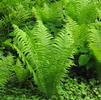
|
Mazus reptansMazus, Creeping
Low growing ground cover with bright green foliage forms a dense mat. Tiny lavender-blue flowers appear in small clusters April and May. May repeat bloom in September. Creeping stems root at nodes.
[
More Info
]
|

|
Mertensia virginicaBluebells, Virginia
Flowers are pink in bud and open to sky blue in March and April. Foliage is blue-green. This plant is a spring ephemeral, meaning the foliage goes dormant in summer. A great plant to naturalize in a rich, moist, woodland environment.
[
More Info
]
|
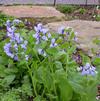
|
Mimulus ringensMonkey Flower, Allegehny
Lilac-purple snapdragon-like flowers appear in pairs June through September. Upright foliage is bright green. Native to swampy areas, wet meadows and low woods. Spreads by creeping rhizomes.
[
More Info
]
|
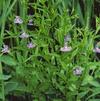
|
Miscanthus sinensisGrass, Flame
[
More Info
]
|
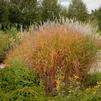
|
Miscanthus sinensis 'Adagio'Grass, Maiden
[
More Info
]
|

|
Miscanthus sinensis 'Cabaret'Grass, Maiden
Super-bold variegation is the highlight of Cabaret Miscanthus. Each 1.25-inch- wide leaf is marked with deep green borders and a white center, the opposite variegation of its kissing cousin, Cosmopolitan Miscanthus. Because of the lively coloring and eight-foot height, Miscanthus sinensis var. condensatus 'Cabaret' makes an impressive specimen that is well worth the space it needs in the landscape. In early fall, pink blooms rise one foot above foliage for an impressive fall display. Cabaret Miscanthus was introduced in the mid-70s by the US National Arboretum.
[
More Info
]
|
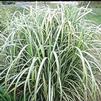
|
Miscanthus sinensis 'Dixieland'Grass, Dwarf Maiden
[
More Info
]
|

|
Miscanthus sinensis 'Gracillimus'Grass, Maiden
[
More Info
]
|

|
Miscanthus sinensis 'Little Kitten'Grass, Dwarf Maiden
[
More Info
]
|

|
Miscanthus sinensis 'Little Zebra'Grass, Dwarf Zebra
Green leaves with bright yellow horizontal bands. Red-purple flower plumes appear in August. A compact selection of M. `Zebrinus. Attracts songbirds. PPAF
[
More Info
]
|

|
Miscanthus sinensis 'Morning Light'Grass, Maiden
[
More Info
]
|
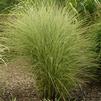
|
Miscanthus sinensis 'Strictus'Grass, Porcupine
[
More Info
]
|

|
Miscanthus sinensis 'Variegatus'Grass, Variegated Japanese Silver
Green and white striped leaves are 1/4 - 3/4" wide and arch loosely. Provides a strong white effect in the landscape. Flowers in August or September. Plants may require support to remain upright.
[
More Info
]
|

|
Monarda bradburyanaBergamot, Wild
[
More Info
]
|
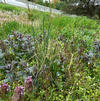
|
Monarda fistulosaBergamot, Wild
Spidery pompons of lavender blossoms are irresistible to butterflies and hummingbirds, and the fragrant gray-green foliage is wonderful in a scent garden or herb garden. Provide good air circulation to minimize powdery mildew, and deadhead to prolong flowering.
[
More Info
]
|
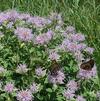
|
Monarda x didyma 'Blue Moon'Bee Balm
Lavender blue flowers are held by attractive purple bracts.A breakthrough, shorter height for this color.The members of the SUGAR BUZZ® Series from the Walters Gardens, Inc. hybridizing program are perfectly suited to the middle of the flower border at 16-24" tall. All members in this series are similar in size, bloom time, and vigor, making it easy for growers to offer the entire series. In midsummer, they form a solid dome of color with their 2-2.5" flowers on strong, well-branched stems. The dark green foliage forms an upright clump with enough vigor to quickly fill out containers nicely but are not aggressive in the garden. As with all Monardas from the Walters Gardens, Inc. hybridizing program, these display above average resistance to powdery mildew.
[
More Info
]
|
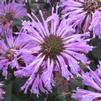
|
Monarda x didyma 'Bubblegum Blast'Bee Balm
This brand new series of SUGAR BUZZ™ Monardas is perfectly suited to the middle of the flower border. All four unique colors in this series are similar in size, bloom time, and vigor, making it easy for growers to offer the whole lot.
In midsummer, 'Bubblegum Blast' forms a solid dome of hot pink, 2-2.5” flowers on strong, well-branched stems. The dark green foliage forms an upright clump that will fill out containers nicely but won’t run all over the garden. It displays above average resistance to powdery mildew.
[
More Info
]
|

|
Monarda x didyma 'Cherry Pops'Bee Balm
This brand new series of SUGAR BUZZ™ Monardas is perfectly suited to the middle of the flower border. All four unique colors in this series are similar in size, bloom time, and vigor, making it easy for growers to offer the whole lot.
In midsummer, 'Cherry Pops' forms a solid dome of cherry red, 2-2.5” flowers on strong, well-branched stems. The dark green foliage forms an upright clump that will fill out containers nicely but won’t run all over the garden. It displays above average resistance to powdery mildew.
Monarda is native to eastern North America, so it is easy to grow and it multiplies quickly. The flowers' sweet nectar attracts scores of hummingbirds, butterflies, and bees to the garden. The aromatic foliage smells like mint when crushed and is often used to flavor teas.
[
More Info
]
|

|
Monarda x didyma 'Grape Gumball'Bee Balm
This brand new series of SUGAR BUZZ™ Monardas is perfectly suited to the middle of the flower border. All four unique colors in this series are similar in size, bloom time, and vigor, making it easy for growers to offer the whole lot.
In midsummer, 'Grape Gumball' forms a solid dome of vibrant magenta, 2-2.5” flowers on strong, well-branched stems. The dark green foliage forms an upright clump that will fill out containers nicely but won’t run all over the garden. It displays above average resistance to powdery mildew.
Monarda is native to eastern North America, so it is easy to grow and it multiplies quickly. The flowers' sweet nectar attracts scores of hummingbirds, butterflies, and bees to the garden. The aromatic foliage smells like mint when crushed and is often used to flavor teas.
[
More Info
]
|

|
Monarda x didyma 'Jacob Cline'Bee Balm
Large bright red flower clusters appear July through September. Upright, mildew resistant, fragrant foliage can be used to flavor tea. Attracts hummingbirds.
[
More Info
]
|

|
Monarda x didyma 'Leading Lady Lilac'Bee Balm
PROVEN WINNER. Bee Balm typically bloom in midsummer, but ‘Leading Lady Lilac’ leads the way in early summer, flowering earlier and forming a more petite clump than other Bee Balm (like ‘Pardon My Purple’). She typically blooms from early summer (first week of June in Michigan) into midsummer and grows just a foot tall.
Her densely branched, dark green, somewhat glossy foliage is topped with light lilac purple blossoms coddled by purple bracts. A fine mist of dark purple spots appears on the open petals. After the first flush of flowers is passing full bloom, a secondary flush blooms above the initial flowers, extending the color show into midsummer.
‘Leading Lady Lilac’ behaves like a lady in the garden—she stays where you plant her and doesn’t run around. Her blossoms’ sweet nectar is highly attractive to butterflies, hummingbirds, and honeybees and her aromatic foliage is naturally deer resistant.
[
More Info
]
|
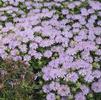
|
Monarda x didyma 'Leading Lady Plum'Bee Balm
PROVEN WINNER. Bee Balm typically bloom in midsummer, but ‘Leading Lady Plum’ leads the way in early summer, flowering earlier and forming a more petite clump than other Bee Balm (like ‘Pardon My Purple’). She typically blooms from early summer into midsummer and grows just a foot tall.
Her densely branched, dark green, somewhat glossy foliage is topped with magenta purple blossoms coddled by deep blackish purple bracts. A fine mist of dark purple spots appears on the open petals. After the first flush of flowers is passing full bloom, a secondary flush blooms above the initial flowers, extending the color show into midsummer.
‘Leading Lady Plum’ behaves like a lady in the garden—she stays where you plant her and doesn’t run around. Her blossoms’ sweet nectar is highly attractive to butterflies, hummingbirds, and honeybees and her aromatic foliage is naturally deer resistant.
[
More Info
]
|
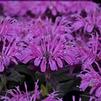
|
Monarda x didyma 'Pardon My Cerise'Bee Balm
PROVEN WINNER. No room for the tall, bushy, traditional Bee Balm in your garden? Here is a petite selection that’s easy to tuck into the front of your sunny border and combination containers. Reaching just a little over a foot tall at maturity, this compact selection forms a bushy, well-branched clump of green, semi-glossy foliage.
From mid through late summer, dark cherry pink flowers sit just at the top of the foliage. Though the plant may be dwarf, the flowers are the same size as taller selections, measuring a full 2 ½ - 3 inches across. They add a bright splash of color to the border in high summer.
This new selection also offers good resistance to powdery mildew, a problem with many older Bee Balms. Just provide good air circulation, sunshine, and plenty of water and these plants will thrive!
[
More Info
]
|
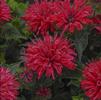
|
Monarda x didyma 'Pardon My Lavender'Bee Balm
PROVEN WINNER. No room for the tall, bushy, traditional Bee Balm in your garden? Here is a petite selection that’s easy to tuck into the front of your sunny border and combination containers. Reaching just a little over a foot tall at maturity, this compact selection forms a bushy, well-branched clump of medium green, semi-glossy foliage. Slightly running, but controlled and refined habit.
From mid through late summer, light lavender pink flowers sit just at the top of the foliage. The insides of the flowers are lighter pink, giving the flower a three-dimensional look. Though the plant may be dwarf, the flowers are the same size as taller selections, measuring a full 2 ½ - 3 inches across. They add a bright splash of color to the border in high summer.
This new selection also offers good resistance to powdery mildew, a problem with many older Bee Balms. Just provide good air circulation, sunshine, and plenty of water and these plants will thrive!
[
More Info
]
|
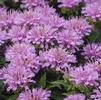
|
Monarda x didyma 'Pardon My Purple'Bee Balm
No room for the tall, bushy, traditional Bee Balm in your garden? Now there’s a petite selection that’s easy to tuck into the front of your sunny border and combination containers. Reaching just a foot tall at maturity, this compact selection forms a well-branched clump of deep green, glossy foliage.
From mid through late summer, fuchsia purple flowers sit just at the top of the foliage. Though the plant may be dwarf, the flowers are the same size as taller selections, measuring a full 2 ½ - 3 inches across. They add a cool splash of color to the border in high summer.
This new selection also offers good resistance to powdery mildew, a problem with many older Bee Balms. Just provide good air circulation, sunshine, and plenty of water and these plants will thrive!
[
More Info
]
|

|
Monarda x didyma 'Pink Frosting'Bee Balm
The members of the SUGAR BUZZ® Series from the Walters Gardens, Inc. hybridizing program are perfectly suited to the middle of the flower border at 16-24" tall. All members in this series are similar in size, bloom time, and vigor, making it easy for growers to offer the entire series. In midsummer, they form a solid dome of color with their 2-2.5" flowers on strong, well-branched stems. The dark green foliage forms an upright clump with enough vigor to quickly fill out containers nicely but are not aggressive in the garden. As with all Monardas from the Walters Gardens, Inc. hybridizing program, these display above average resistance to powdery mildew.
Pastel pink flowers form a carpet of blossoms that completely cover the foliage.
[
More Info
]
|

|
Monarda x didyma 'Rockin Raspberry'Bee Balm
Deep raspberry purple flowers with very dark green leaves. The members of the SUGAR BUZZ™ Series from the Walters Gardens, Inc. hybridizing program are perfectly suited to the middle of the flower border at 16-24” tall. All members in this series are similar in size, bloom time, and vigor, making it easy for growers to offer the whole lot. In midsummer, they form a solid dome of color with their 2-2.5” flowers on strong, well-branched stems. The dark green foliage forms an upright clump that will fill out containers nicely but won’t run all over the garden. As with all Monardas from the Walters Gardens, Inc. hybridizing program, these display above average resistance to powdery mildew.
[
More Info
]
|
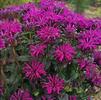
|
Nepeta 'Early Bird'The earliest blooming Nepeta we've had in our trials, with flowers starting in early April and lasting up to six weeks! Clean, gray-green, aromatic foliage and a compact habit make it an excellent groundcover. A low-growing member of the clan whose aromatic, gray-green leaves complement the lavender-blue blossoms. Its flowers gather in whorls on stems that reach just 12", and bloom is persistent up to six weeks. This compact, early-blooming variety makes an excellent ground cover for edging a sunny walkway.
Most Nepetas are thrifty plants that prosper in average, well-drained soils, and the majority offer deliciously fragrant, gray-green foliage and numerous spikes of small flowers, generally in the blue to purple range. They are durable, hardy, and pest free. Like Catnip, the best-known member of the genus, Nepetas may send felines into a frenzy.
[
More Info
]
|
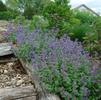
|
Nepeta faassenii 'Purrsian Blue'Catmint
In its first year, 'Purrsian Blue' forms a small, perfectly rounded, densely branched clump of tiny, green leaves. In year two, the plant maintains its compact mounding habit but nearly doubles its spread to just over two feet across.
This is a very floriferous selection whose flower power is amplified by its having its flowers spaced closely together on the stems. Periwinkle blue flowers are coddled by dark purple calyxes just above the aromatic foliage from early summer into early fall.
'Purrisan Blue' has everything today's gardeners are looking for: a low maintenance, drought tolerant, deer resistant, long blooming perennial that looks great all season.
When Nepeta's stems are broken, they release an aroma into the air that tends to attract cats, thus its common name, Catmint.
[
More Info
]
|
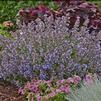
|
Nepeta x faassenii 'Blue Wonder'Catmint
Long-blooming, dark blue flowers May through September. Compact, mounding, gray-green, aromatic foliage. Quite drought tolerant. Much more compact than Nepeta `Walkers Low. A wonderful low maintenance perennial for drought prone landscapes.
[
More Info
]
|
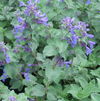
|
Nepeta x faassenii 'Cat's Meow'Catmint
Unlike most Nepetas that have a bit of a wild, unkempt look, this first class selection keeps its tidy, dense, rounded shape all season long.
Its small, grey-green, aromatic leaves are topped with well-branched stems carrying spikes of sky blue flowers with purple calyxes from early summer into early fall.
‘Cat’s Meow’ has everything today’s gardeners are looking for: a low maintenance, drought tolerant, deer resistant, long blooming perennial that looks great all season.
When Nepeta's stems are broken, they release an aroma into the air that tends to attract cats, thus its common name, Catmint.
[
More Info
]
|

|
Nepeta x faassenii 'Six Hills Giant'Catmint
Violet blue flowers on large plants with gray-green foliage.
[
More Info
]
|

|
Nepeta x faassenii 'Walker's Low'Catmint
Soft lavender-blue flowers bloom May through September on mounded, arching plants. Aromatic gray-green foliage is deer and rabbit resistant. Very drought tolerant. Cats are attracted to scent. [PPA-2007]
[
More Info
]
|
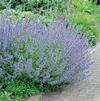
|
Oenothera berlandieri 'Siskiyou'Primrose, Mexican Evening
Pale pink, saucer-shaped flowers are produced in great numbers May through July with rebloom in the fall. Compact and trailing habit. Heat and drought tolerant. Prefers poor soils. Spread by underground stolons.
[
More Info
]
|

|
Oenothera macrocarpa (syn missouriensis)Sundrops, Ozark
Large yellow flowers, up to 4" across, are mildly fragrant. Plants trail and look good in a rock garden. Plants tolerate poor soil and drought but need good drainage. (syn. O. missouriensis)
[
More Info
]
|
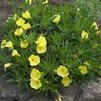
|
Onoclea sensibilisFern, Sensitive
Large somewhat course textured foliage is bright green. Fertile fronds turn dark brown and roll up. Native to wet woods and moist soils along streams. Sensitive to frost and drought. Fast-creeping rhizomes produce a carpet of light green fronds. A tough fern that thrives in moist soil. Plants die down at the first hint of frost but ornamental fertile fronds remain. These can be used in dried arrangements.
[
More Info
]
|

|
Ophiopogon japonicusGrass, Mondo
Evergreen, sod-forming perennial; 1/2 " leaves are dark green, erect to arching, grass-like with white flowers from July through September.
[
More Info
]
|

|
Optuntia humifusa (compressa)Cactus, Prickly Pear
Native cactus with succulent green pads that are water-storing segments. Pads have needle-like spines and tufts of bristles. Showy bright yellow flowers in June and July are followed by edible red fruit. Easily propagated by cuttings. Winter interest.
[
More Info
]
|
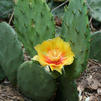
|
Osmunda cinnamomeaFern, Cinnamon
[
More Info
]
|
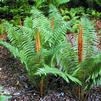
|
Osmunda regalisFern, Royal
Mature fronds are lance-shaped and light green and grow in a vase shape. The fronds resemble leaves from plants in the legume family such as a locust tree. Spreads slowly.
[
More Info
]
|
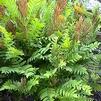
|
Pachysandra terminalisPachysandra
Fast-growing, dark green glossy evergreen foliage forms dense carpet. Tiny white flower spikes bloom in April. Spreads rapidly by underground stems to form large colonies.
[
More Info
]
|
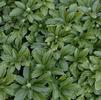
|
Paeonia Intersectional 'Alexander Fleming'Peony
Fragrant, fully double, pink blossoms abound in early summer. The central petals have a tendancy to curl inward, giving the flowers a sphere-like shape. Many side buds are produced, extending the bloom time.
Peonies are classic garden plants that add a bit of nostalgia and charm to the garden. Their fragrant blooms and lush foliage have made them popular for years, and with the recent resurgence in breeding, they will continue to improve. Peonies are simple to grow and can be utilized in many ways, including mass plantings, specimens, or hedges. By choosing a mixture of early, midseason, and late blooming varieties, you can have blooms for up to 6 weeks.
[
More Info
]
|

|
Paeonia lactiflora 'Best Man'Peony
Garden Peonies are old favourites for late spring display, prized for their large, colourful and fragrant blooms. Plants form an upright bush of dark green leaves, remaining attractive all season. This selection offers double, bomb-type flowers in deep red with pink tones appearing on strong stems mid-season. Delightful light fragrance. Excellent for cutting. Peonies seldom need to be divided or moved, but if necessary it should be carried out only in the fall. Flowering is always best in a sunny location. Trim off old stems to the ground in late fall, to help prevent disease problems.
[
More Info
]
|
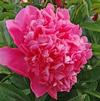
|
Paeonia lactiflora 'Bowl of Beauty'Peony
This is a striking Japanese style peony of exceptional beauty. The Peony 'Bowl of Beauty' grows to 32" high, with large, delicate flowers in May and June. Each blossom is a lovely, single bloom peony with rich rose pink flowers and frilly, creamy yellowish-white centers. The blossoms are sweetly fragrant and are supported on strong stems. Blooms early.
[
More Info
]
|

|
Paeonia lactiflora 'Bowl of Love'Peony
Garden Peonies are old favourites for late spring display, prized for their large, colourful and fragrant blooms. Plants form an upright bush of dark green leaves, remaining attractive all season. This selection offers double, bomb-type flowers in deep red with pink tones appearing on strong stems mid-season. Delightful light fragrance. Excellent for cutting. Peonies seldom need to be divided or moved, but if necessary it should be carried out only in the fall. Flowering is always best in a sunny location. Trim off old stems to the ground in late fall, to help prevent disease problems.
[
More Info
]
|
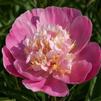
|
Paeonia lactiflora 'Bunker Hill'Peony
Loosely double blooms are deep, rose-pink to red. Individual petals are traced with a hint of silver. Sturdy stems and deep green foliage. Fragrant. Heirloom variety. Great for cutting. Early-Midseason.
[
More Info
]
|
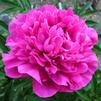
|
Paeonia lactiflora 'Coral Charm'Peony
This classic peony is a true color breakthrough in the coral category. Deep coral buds open to semi-double, light coral peach blossoms early in the peony season.
This charming peony has attractive deep green foliage and grows equally well in northern and southern zones.
Peonies are classic garden plants that add a bit of nostalgia and charm to the garden. Their fragrant blooms and lush foliage have made them popular for years, and with the recent resurgence in breeding, they will continue to improve. Peonies are simple to grow and can be utilized in many ways, including mass plantings, specimens, or hedges. By choosing a mixture of early, midseason, and late blooming varieties, you can have blooms for up to 6 weeks.
[
More Info
]
|
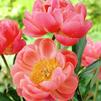
|
Paeonia lactiflora 'Do Tell'Peony
Single shell pink outer petals with darker rose-pink to red center. Blooms May and June. Lightly fragrant. A long lived perennial.
[
More Info
]
|
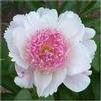
|
Paeonia lactiflora 'Felix Crousse'Peony
Carmine-red blossoms with a silvery sheen are lavishly produced in early summer. This is a fragrant, double variety.
[
More Info
]
|
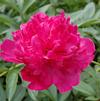
|
Paeonia lactiflora 'Festiva Maxima'Peony
Double white flowers have red streaks on center petals blooming in May and June. Flowers are noticeably fragrant. Glossy green foliage on strong stems. A long lived perennial.
[
More Info
]
|
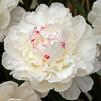
|
Paeonia lactiflora 'Henry Bockstoce'Peony
Double, rich red blooms with centers shaped like rosebuds grace the garden in early summer. This is an advanced-generation hybrid of a cross between P. lactiflora and P. officinalis.
Peonies are classic garden plants that add a bit of nostalgia and charm to the garden. Their fragrant blooms and lush foliage have made them popular for years, and with the recent resurgence in breeding, they will continue to improve. Peonies are simple to grow and can be utilized in many ways, including mass plantings, specimens, or hedges. By choosing a mixture of early, midseason, and late blooming varieties, you can have blooms for up to 6 weeks.
[
More Info
]
|
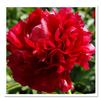
|
Paeonia lactiflora 'Honey Gold'Peony
Popular creamy white and gold combination with extraordinary form and slight sweet fragrance. Blooms have hints of pink and broad, well-formed guard petals. Excellent cut flower.
[
More Info
]
|
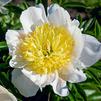
|
Paeonia lactiflora 'Jan Van Leeuwen'Peony
Fragrant single blooms have satiny white petals around big yellow centers. A long lived perennial. Long lasting cut flower.
[
More Info
]
|
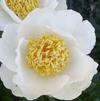
|
Paeonia lactiflora 'Kansas'Peony
Large, bright watermelon red flowers which are fully double appear on strong, dark green stems in early summer. The color is sunfast, ensuring top performance, and it contrasts well with the mid-green foliage. Cut a few stems to bring the lovely scent of the blossoms inside.
[
More Info
]
|
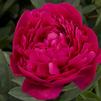
|
Paeonia lactiflora 'Karl Rosenfield'Peony
Brilliant double fuchsia-wine flowers bloom in May. Mildly fragrant. A long lived perennial. Long lasting cut flower. A long lived perennial.
[
More Info
]
|
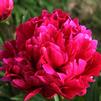
|
Paeonia lactiflora 'Miss America'Peony
Semi-double creamy white outer petals with golden-yellow center. Blooms in early May. Fragrant. Glossy green foliage. A long lived perennial.
[
More Info
]
|

|
Paeonia lactiflora 'Paul M. Wild'Peony
Large double ruby-red, fragrant flowers bloom in late May. Glossy green foliage. A long lived perennial.
[
More Info
]
|
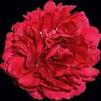
|
Paeonia lactiflora 'Primevere'Peony
This incredible double selection features ivory outer petals and a sulphur-yellow centre. Early flowering.
[
More Info
]
|
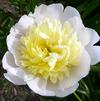
|
Paeonia lactiflora 'Raspberry Sundae'Peony
[
More Info
]
|
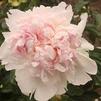
|
Paeonia lactiflora 'Red Charm'Peony
Recognized as the best deep red Double, this 1944 award-winning Glasscock hybrid has gigantic, ruffled, bomb-type deep merlot-red flowers with full, piled-high peaked centers and a sweet-spicy fragrance.
[
More Info
]
|
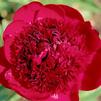
|
Paeonia lactiflora 'Red Sarah Bernhardt'Peony
Full double purple-red flowers. Very healthy, dark green and shiny foliage with very stout stems for a lactiflora-variety. Also because of this not much like 'Sarah Bernhardt' at all. BTW, 'Red Sarah Bernhardt' originates from China and is renamed for her pink namesake for obvious commercial ends. Currently this variety is very sought after and desired for by the world's cut flower industry.
[
More Info
]
|

|
Paeonia lactiflora 'Sarah Bernhardt'Peony
Large, double blooms are rose-pink and bloom in May and June. Very Fragrant. Glossy green foliage. A long lived perennial. Use peony cage to keep flowers upright.
[
More Info
]
|
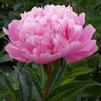
|
Paeonia lactiflora 'Scarlet O'Hara'Peony
Large, single, fragrant flowers with scarlet-red petals and gold center stamens. Blooms in early May. Glossy green foliage.
[
More Info
]
|
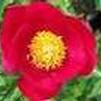
|
Paeonia lactiflora 'Shirley Temple'Peony
Highly fragrant, large, double flowers are pale pink when they emerge, then lighten to white as they mature. They are produced atop very strong stems in late spring to early summer and are wonderful in fresh bouquets.
The plant forms a sturdy shrub-like clump with deep green foliage. This is a highly floriferous, vigorous variety.
Peonies are classic garden plants that add a bit of nostalgia and charm to the garden. Their fragrant blooms and lush foliage have made them popular for years, and with the recent resurgence in breeding, they will continue to improve. Peonies are simple to grow and can be utilized in many ways, including mass plantings, specimens, or hedges. By choosing a mixture of early, midseason, and late blooming varieties, you can have blooms for up to 6 weeks.
[
More Info
]
|
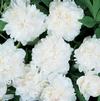
|
Panicum amarum 'Dewey Blue'Grass, Bitter Switch
[
More Info
]
|

|
Panicum virgatumGrass, Switch
[
More Info
]
|
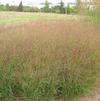
|
Panicum virgatum 'Apache Rose'Switchgrass
PROVEN WINNER. Dense, upright, columnar habit with grey-green leaves. In the fall, the tips of the leaves are flushed with a hint of rosy-red. While other green-leaved Switch Grass typically have cream or tan inflorescences, ‘Apache Rose’ has unique rose-colored flower panicles welcome color in the fall garden.
Switch grass gets its name from the peaceful swishing sound it makes when blowing in the wind. All parts of this grass are very sturdy, and will remain standing thru winter unless snows are heavy. This provides important cover for birds during the coldest days of winter. This grass is very versatile from a design standpoint; it is effective as a specimen, in masses, for screening, alongside ponds or streams, or even in large containers.
Ornamental Grasses of the PRAIRIE WINDS® Collection add graceful texture and movement to the garden. These varieties thrive in full sun growing conditions and are proven deer resistant.
[
More Info
]
|

|
Panicum virgatum 'Bad Hair Day'Switchgrass
Upright grass with arching yellow-tinged stems and pendulous inflorescences. Doesn't flop. Rust resistant.
[
More Info
]
|

|
Panicum virgatum 'Cape Breeze'Switchgrass, Dwarf
Fantastic foliage stays green until Halloween! From production to the landscape, this grass truly is a breeze. Selected for upright habit, compact size and early flowering. Its perfect, tidy stature combines the toughness of seaside Panicum with the neatness of garden worthy cultivars. Great texture and movement in the landscape!
[
More Info
]
|
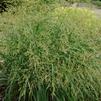
|
Panicum virgatum 'Cheyenne Sky'Grass, Switch
Absolutely ideal for growing in decorative containers, this hardy Red Switch Grass is a perennial substitute for Pennisetum 'Rubrum'. Measuring in at just 3ft (2ft before blooming), 'Cheyenne Sky' forms a tight, vase-shaped clump of blue-green foliage that begins turning wine red in early summer. By late summer, nearly the entire clump is drenched in color and is topped by matching wine-red flower panicles held just above the foliage. It makes a dynamite specimen plant and is even more eye-catching when planted en masse.
[
More Info
]
|
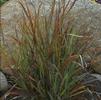
|
Panicum virgatum 'Dallas Blues'Grass, Switch
Wide, blue, upright foliage. Large, purplish flower heads emerge late in summer. PP11202
[
More Info
]
|
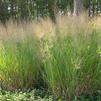
|
Panicum virgatum 'Heavy Metal'Grass, Switch
[
More Info
]
|
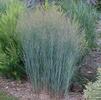
|
Panicum virgatum 'Hot Rod'Grass, Switch
Compact switch gras that emerges blue green and reddens rapidly to produce a rich, deep maroon show. Eary to color.
[
More Info
]
|
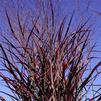
|
Panicum virgatum 'Northwind'Grass, Switch
[
More Info
]
|
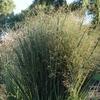
|
Panicum virgatum 'Shenandoah'Grass, Switch
[
More Info
]
|
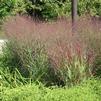
|
Panicum virgatum 'Thundercloud'Grass, Switch
Looking for a large specimen plant for your landscape? Look no further! Even gardeners in chilly zone 4 can grow this native grass with ease.
Panicum 'Thundercloud' PP20665 is a very large switch grass that grows to a height of 7-8ft when mature. Yet the blue-green foliage remains strictly upright and doesn't flop over in windy, rainy conditions. In late summer, a plethora of pinkish-tan, airy panicles are produced just above the foliage.
This selection was hybridized by Gary Trucks of Amber Wave Gardens in West Michigan.
[
More Info
]
|
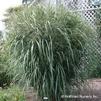
|
Papaver orientale 'Crimson Red'Poppy, Oriental
Crimson-red flowers reminiscent of crepe paper. Poppies require full sun and well-drained soil. Do not over water.
[
More Info
]
|

|
Papaver orientale 'Orange Scarlet'Poppy, Oriental
Large, cup shaped, papery orange flowers on strong, graceful stems in June and July . The foliage of Oriental poppies goes dormant in summer, sometimes reappearing in the autumn.
[
More Info
]
|

|
Parthenium integrifoliumQuinine, Wild
Clump-forming, Missouri native perennial which occurs in dry soils on prairies, glades and rocky woods. Grows 3-4' tall. Woolly-looking, white flower headsMay to august. Leaves are aromatic, toothed and rough. Former medicinal use as a diuretic. Also called American Feverfew.
[
More Info
]
|
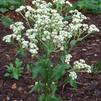
|
Parthenocissus tricuspidataIvy, Boston
Vigorous climbing ability and spectacular fall color make this vine an effective cover for fences, walls, or even the ground. Large, three-lobed leaves have a waxy appearance. The flowers are insignificant. In autumn, the foliage is set ablaze in shades of red and orange. Boston Ivy is easy to grow, even by beginner's standards. Tolerating nearly any soil and light conditions, this vine will quickly grow to cover everything in its path. It is a clinging vine, so it will automatically attach itself to any wall or fence that it is planted against. Regular pruning will help to keep this plant in bounds.Boston Ivy is able to tolerate pollution from urban settings.
[
More Info
]
|

|
Pennisetum alopecuroidesGrass, Fountain
Narrow green leaves arch softly toward the ground and turn golden yellow in fall. Flowers resemble large foxtails and are good in floral arrangements. Use in masses or in decorative containers. Native to Illinois and Arkansas. Hardy to zone 6.
[
More Info
]
|

|
Pennisetum alopecuroides 'Hameln'Grass, Dwarf Fountain
[
More Info
]
|

|
Pennisetum alopecuroides 'Little Bunny'Grass, Miniature Fountain
[
More Info
]
|
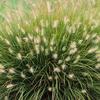
|
Pennisetum orientale 'Karley Rose'Grass, Oriental Fountain
A new Pennisetum with a big future. Abundant, 8-10" flower spikes start light lavender, mature dark purple, and dry to beige above a flowing mound of fine green foliage. Hardy to at least Zone 6. PP12909
[
More Info
]
|

|
Penstemon digitalisPenstemon, Foxglove
Clump-forming, Missouri-native perennial typically occurs in prairies, fields, wood margins, open woods and along railroad tracks. Abundant plumes of tubular white flowers provide nectar for hummingbirds April through June. Attractive seed heads and reddish fall color extend seasonal interest. Attracts songbirds.
[
More Info
]
|
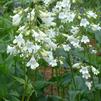
|
Penstemon digitalis 'Blackbeard'Beardtongue
Dark purple flower stems hold its lilac purple flowers with their white flaring tubes high above the low mound of deep eggplant purple leaves. Attractive dark burgundy seed pods follow the flowering performance for extended seasonal interest. ‘Blackbeard’ stays strictly upright all season long.
It takes the heat and humidity in stride but is also very cold hardy. It continues to provide terrific color in the landscape all season long.
[
More Info
]
|
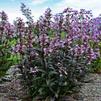
|
Penstemon digitalis 'Husker Red'Penstemon, Foxglove
Foliage emerges purple-bronze and matures to green. Profusion of white flowers on wiry stems. Grows best in full sun and moist soil. [PPA-1996]
[
More Info
]
|
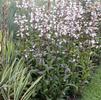
|
Penstemon digitalis 'Pocahontas'Penstemon, Bearded
Clusters of bell shaped lavender pink blossoms in April to June, with red stems are highlighted against a backdrop of upright deep green, burgundy washed foliage. Foliage emerges deep burgundy red. Butterflies love Penstemon.
[
More Info
]
|
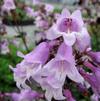
|
Perovskia atriplicifoliaRussian Sage
[
More Info
]
|

|
Perovskia atriplicifolia 'Blue Jean Baby'Sage, Russian
Need a shorter, manageable Russian Sage that is still vigorous in the landscape and production? Try ‘Blue Jean Baby’! Lavender blue flowers held in smoky purple calyxes bloom for a long period starting in midsummer, with the color from the calyxes extending appeal into fall. This variety is one of the earliest Perovskia to bloom. This bushy selection joins the lineup of Perovskia from the Walters Gardens, Inc. hybridizing and, like the others this program has introduced, resists lodging.
[
More Info
]
|
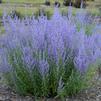
|
Perovskia atriplicifolia 'Denim n Lace'Sage, Russian
PROVEN WINNER. Lacy-like, bright sky blue flowers are held on amethyst calyxes. Its calyxes are spaced very close together to give the flowers a very full look. The colorful calyxes make it look like it is still in bloom even when it is past peak. Denim ‘n Lace’ doesn’t get too tall, has stronger stems and a more upright habit than most older varieties.
[
More Info
]
|
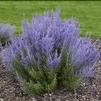
|
Perovskia atriplicifolia 'Little Spire'Russian Sage
[
More Info
]
|

|
Perovskia atriplicifolia 'Peek-a-Blue'Russian Sage
Though we love Perovskia ‘Little Spire’ for its compact habit, it grows a bit tall for some who are looking for a shorter selection that works well in smaller urban gardens. We’ve been working for several years on developing a new Perovskia to fit that niche and now we have it!
Introducing ‘Peek-a-Blue’, a short selection of P. atriplicifolia with a compact habit and attractive, finely dissected foliage. Very lacy, silvery green leaves line the silvery stems topped with lavender blue flowers from midsummer into early fall.
The plants measure just over 2’ tall when they are in full bloom. In the landscape, they peek out between shorter plants in the front of the border and taller plants in the back.
[
More Info
]
|
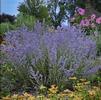
|
Persicaria polymorphaFleece Flower, Giant
White plumes over bushy, vase-shaped plants from May through September. Clump forming; not invasive.
[
More Info
]
|

|
Phalaris arundinacea 'Strawberries & Cream'Grass, Ribbon
Green and white variegated foliage is blushed with pink during cool seasons. Produces soft white flower panicles. A rapid spreader, use as a ground cover or for erosion control. Tolerates clay soil.
[
More Info
]
|

|
Phlox 'Amethyst Pearl'Phlox, Hybrid
Light amethyst pink flowers with a white eye are produced in loose, rounded panicles in early summer and reblooms again in early fall. Glossy, bright green foliage stays clean all season. Like ‘Minnie Pearl’, it spreads slowly by rhizomes.
[
More Info
]
|
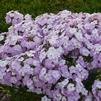
|
Phlox 'Cloudburst'Phlox, Tall Cushion
A new hybrid, ‘Cloudburst’ combines the rich colors of tall garden phlox and the dome-like habit of cushion phlox. Vibrant lavender-purple flowers have bright pink eyes and bloom all summer, starting about two to three weeks ahead of Phlox paniculata. A very mildew resistant variety.
[
More Info
]
|

|
Phlox 'Fashionably Early Crystal'Phlox, Hybrid
‘Fashionably Early Crystal’ is a taller variety of Hybrid Phlox that will work best for the middle to back of the border. In addition to blooming 2-3 weeks earlier than the typical Tall Garden Phlox, it boasts a long season of color. Pure white flowers with a faint light purple eye appear from early summer well into midsummer with some rebloom in fall. Broad, dark green, thick foliage stays beautiful all season. Each member of the Fashionably Early series has exceptional mildew resistance, thick leathery leaves, and a stoloniferous habit (as opposed to the tightly clumping P. paniculata types).
[
More Info
]
|
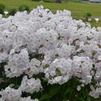
|
Phlox 'Fashionably Early Flamingo'Phlox, Hybrid
‘Fashionably Early Flamingo’ is a taller variety of Hybrid Phlox that will work best for the middle to back of the border. In addition to blooming 2-3 weeks earlier than the typical Tall Garden Phlox, it boasts a long season of color. Perfectly defined panicles of light lavender pink flowers bloom prolifically well into midsummer with some rebloom in fall. Broad, dark green, thick foliage stays beautiful all season. Each member of the Fashionably Early series has exceptional mildew resistance, thick leathery leaves, and a stoloniferous habit (as opposed to the tightly clumping P. paniculata types).
[
More Info
]
|
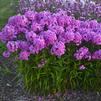
|
Phlox 'Fashionably Early Princess'Phlox, Hybrid
‘Fashionably Early Princess’ is the very first of the series to bloom. This is a taller variety of Hybrid Phlox that will work best for the middle to back of the border. In addition to being early blooming, it boasts a long season of color. Light fuchsia pink flowers and a darker pink eye appear well into midsummer with some rebloom in fall. Broad, thick, glossy green foliage stays beautiful all season. Each member of the Fashionably Early series has exceptional mildew resistance, thick leathery leaves, and a stoloniferous habit (as opposed to the tightly clumping P. paniculata types).
[
More Info
]
|

|
Phlox 'Kung Fuchsia'Phlox, Hybrid
Intensely colored, fuchsia pink flowers blanket the foliage of this shorter variety. Blooms 2-3 weeks earlier than Phlox paniculata, and is extremely resistant to powdery mildew.
[
More Info
]
|

|
Phlox divaricata 'Blue Moon'Phlox, Woodland
Violet-blue, fragrant flowers bloom in April and May. Puts on quite a show when in blooms. A long lived, carefree native groundcover.
[
More Info
]
|
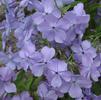
|
Phlox divaricata var. laphammiPhlox, Woodland
[
More Info
]
|
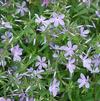
|
Phlox maculataWild Sweet William
[
More Info
]
|

|
Phlox paniculataPhlox, Meadow
[
More Info
]
|

|
Phlox paniculata 'David'Phlox, Garden
Large heads of clear white flowers blooming July through September. Extremely mildew resistant. Deadheading prolongs bloom. Attracts songbirds. 2002 Perennial Plant of the Year. The best white available. 2002 Perennial Plant of the Year.
[
More Info
]
|
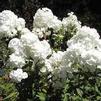
|
Phlox paniculata 'Glamour Girl'Phlox, Garden
Hot coral-pink flowers are held on dark purple stems. Even the oldest flowers in the panicles are a beautiful shade of light coral pink.
‘Glamour Girl’ maintains bright green, healthy looking foliage on strong stems all summer, putting on a flower show mid to late summer. Good resistance through hot, humid summers with ease, shaking off any sign of powdery mildew. Tall Garden Phlox grows best in rich, moist soil in full sun. It will thrive with bi-monthly fertilizing and consistent moisture levels. Overhead watering should be avoided since some varieties of phlox are susceptible to powdery mildew. This can be avoided or diminished by providing ample air circulation around the plants and by thinning them out periodically. Deadheading will prolong bloom time and prevent self-seeding.
[
More Info
]
|

|
Phlox paniculata 'Jeana'Phlox, Garden
Sweetly fragrant petite lavender-pink flowers are born on large dense panicles up to 6 inches long. Brighten up the border or containers with this charming variety. Perfect for the middle of the border, this vigorous grower is highly mildew resistant and a source of great color, attracting beneficial insects and butterflies.
[
More Info
]
|
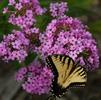
|
Phlox paniculata 'Opening Act Blush'Phlox, Garden
PROVEN WINNER. Tall Garden Phlox are a mainstay in the midsummer sun garden, and this new hybrid Phlox will bloom even earlier, starting in early summer. It boasts a long season of color in addition to being early blooming, with lovely light lavender pink flowers typically appearing from early summer well into midsummer, with some sporadic rebloom into early fall. The dark green, glossy foliage is mildew and disease resistant, an improvement on older varieties of Phlox that don’t hold up as well in the heat and humidity of summer. Plant these in an area with good air circulation and plenty of sunshine.
[
More Info
]
|
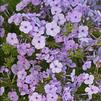
|
Phlox paniculata 'Opening Act White'Phlox, Garden
PROVEN WINNER. Pure white flowers typically appearing from early summer well into midsummer, with some sporadic rebloom into early fall. The dark green, glossy foliage is mildew and disease resistant, an improvement on older varieties of Phlox that don’t hold up as well in the heat and humidity of summer. Plant these in an area with good air circulation and plenty of sunshine.
[
More Info
]
|
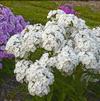
|
Phlox paniculata 'Red Riding Hood'Phlox, Garden
Cherry red flowers on compact plants.
[
More Info
]
|

|
Phlox paniculata 'Robert Poore'Phlox, Garden
One of the tallest Phlox with large clusters of violet-pink, fragrant flowers blooming late June through September. Dark green, mildew resistant foliage on strong stems. Attracts songbirds.
[
More Info
]
|

|
Phlox subulata 'Amazing Grace'Phlox, Creeping
Dark green foliage with a showy display of white flowers, each with a tiny maroon-red eye.
[
More Info
]
|
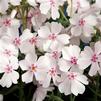
|
Phlox subulata 'Candy Stripe'Phlox, Creeping
Produces a stunning blanket of pink and white two-tone flowers in April and May. Semi-evergreen foliage forms a dense, carpet-like ground cover. Mass planting creates a spectacular show.
[
More Info
]
|

|
Phlox subulata 'Crimson Beauty'Phlox, Creeping
Rosy red flowers. Semi evergreen, needlelike foliage.
[
More Info
]
|

|
Phlox subulata 'Drummon's Pink'Phlox, Creeping
Larger flowers than other Creeping Phlox. Dark green needle-like foliage. Fragrant deep pink flowers with deeper pink eyes.
[
More Info
]
|
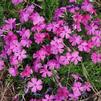
|
Phlox subulata 'Emerald Blue'Phlox, Creeping
Produces a stunning blanket of clear blue flowers in April and May. Semi-evergreen foliage forms a dense, carpet-like groundcover. Mass planting creates a spectacular show.
[
More Info
]
|

|
Phlox subulata 'Fort Hill'Phlox, Creeping
Produces a stunning blanket of pink flowers with red eye in April and May. Semi-evergreen foliage forms a dense, carpet-like groundcover. Mass planting creates a spectacular show.
[
More Info
]
|

|
Phlox subulata 'Purple Beauty'Phlox, Creeping
Produces a stunning blanket of lavender-blue flowers with dark eye in April and May. Semi-evergreen foliage forms a dense, carpet-like groundcover. Mass planting creates a spectacular show.
[
More Info
]
|

|
Phlox subulata 'Red Wing'Phlox, Creeping
Crimson flowers with dark red eyes. Semi evergreen, needlelike foliage.
[
More Info
]
|

|
Phlox subulata 'Scarlet Flame'Phlox, Creeping
Produces a stunning blanket of deep scarlet pink flowers with dark rose eye in April and May. Semi-evergreen foliage forms a dense, carpet-like groundcover. Mass planting creates a spectacular show.
[
More Info
]
|

|
Phlox subulata 'Snowflake'Phlox, Creeping
Starry white flowers. Much denser than 'White Delight'. Semi evergreen, needlelike foliage.
[
More Info
]
|
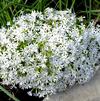
|
Physocarpus opulifoliusNinebark
[
More Info
]
|

|
Platycodon grandiflorus 'Astra Double Blue'Balloonflower
[
More Info
]
|
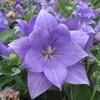
|
Platycodon grandiflorus 'Sentimental Blue'Balloonflower
Balloon-like buds burst open into splendid blue, dwarf bell-shaped flowers. Prolific bloomer.
[
More Info
]
|

|
Polemonium 'Heaven Scent'Jacob'S Ladder
[
More Info
]
|
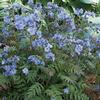
|
Polemonium boreale 'Heavenly Habit'Jacob'S Ladder
Lots of medium blue flowers with yellow halos and white eyes. Repeat blooms if sheared back after the first flush of flowers. Glossy foliage and a compact habit. Prefers rich, moist, well-drained soil.
[
More Info
]
|

|
Polemonium reptansJacob'S Ladder
[
More Info
]
|
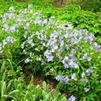
|
Polygonatum odoratum 'var. Variegatum'Solomon'S Seal, Variegated
Dangling white fragrant flowers below leaves in April and May. Tall, upright variegated foliage is soft green and white, turning an attractive yellow in fall. Flowers are followed by blue-black berries. Slowly colonizes to form dense stands. Looks terrific in a woodland garden.
[
More Info
]
|
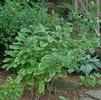
|
Polystichum acrostichoidesFern, Christmas
Glossy, dark green foliage is evergreen. Fronds emerge upright, arching as they mature to cover ground. Drought tolerant once established. Tiny leaves resemble Christmas stockings.
[
More Info
]
|
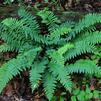
|
Pontedaria cordataPickeral Weed
[
More Info
]
|
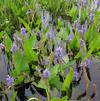
|
Pulmonaria 'Raspberry Splash'Lungwort
Dusky raspberry coral flowers over green leaves splashed with silver dots. Strong upright growth habit. PP12138
[
More Info
]
|
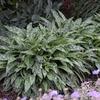
|
Pulmonaria 'Twinkle Toes'Lungwort
Periwinkle blue flowers adorn low mounds of dark green leaves flecked with silver. Pulmonaria's foliage lends 3-season interest to the garden, making it a quintessential shade garden plant.
[
More Info
]
|
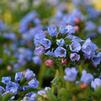
|
Pycnanthemum tenuifoliumMint, Slender Mountain
[
More Info
]
|
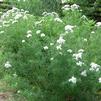
|
Ratibida pinnataConeflower, Grey Headed
Large yellow flowers with drooping petals surround a brown seed head. Plants bloom profusely all summer. Birds eat the seed if old flowers are left on the plant.
[
More Info
]
|
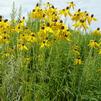
|
Rheum 'Victoria'Rhubarb, Edible
Huge leaves on thick, green stalks that are reddish at the base. Produces heavy yields beginning in the second season. Use stalks (only) to make delicious tart pies and sauces.
[
More Info
]
|

|
Rhus aromaticaSumac, Aromatic
[
More Info
]
|

|
Rhus aromatica 'Gro-Low'Sumac, Fragrant
A low spreader with glossy green leaves and superb orange-red fall color. Grows quickly and makes a good ground cover.
[
More Info
]
|

|
Rhus glabraSumac, Smooth
Sumacs are well known for their excellent color in autumn, when the long compound leaves turn bright orange and red. Plants produce yellow flower clusters that later form large bright red berry clusters. The fruits persist long into winter, and many birds and other wildlife rely on them for a food source. Colony-forming, Smooth sumac is the only shrub or tree species native to all 48 contiguous U.S. states. Larval host to the Hairstreak Butterfly.
[
More Info
]
|

|
Rudbeckia fulgidaConeflower, Orange
Masses of golden daisies from mid to late summer on long-lived, adaptable plants. Equally useful in a flower border or prairie meadow.
[
More Info
]
|
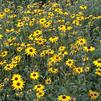
|
Rudbeckia fulgida 'Goldsturm'Black-Eyed Susan
A superior selection of our native Rudbeckia with long-blooming deep yellow flowers on stiff stems. An extensive root system makes this perennial an excellent choice for slope stabilization. [PPA-1999]
[
More Info
]
|
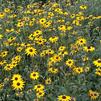
|
Rudbeckia fulgida var sullivantii 'Little Goldstar'Black-Eyed Susan
Golden yellow blossoms are held just above the short clump of rich green, bushy foliage. Very well branched scapes carry loads of flowers July through October. Over 80 flowers have been counted on a single plant, making this selection more floriferous than 'Goldsturm'. While 'Goldsturm' can stand waist-high in bloom, 'Little Goldstar' is much more compact. This variety is produced by tissue culture and provides a more uniform plant than the seed grown 'Goldsturm'. Attracts songbirds.
[
More Info
]
|
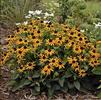
|
Rudbeckia hirtaDaisy, Gloriosa
Bright yellow to orange-yellow flower petals surround dark brown centers. Blooms June through September. This short-lived perennial will remain in the garden for many years if allowed to self-seed.
[
More Info
]
|

|
Rudbeckia hirta 'Indian Summer'Daisy, Gloriosa
Single golden yellow flowers with brown centers are 6" in diameter. Tolerates poor soil but needs good soil drainage. A 1995 All-America Selection winner.
[
More Info
]
|

|
Rudbeckia maximaConeflower, Giant
Yellow drooping petals surround a brown cylindrical cone. Flowers are borne on tall (60-96" stems) but stems are see-through so plant it where you can see the bold, mounded blue-green leaves which are attractive even before the plant flowers.
[
More Info
]
|
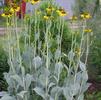
|
Rudbeckia missouriensisBlack-Eyed Susan, Missouri
This native is loaded with gold flowers with brown centers for several weeks in summer.
[
More Info
]
|
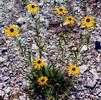
|
Rudbeckia subtomentosaConeflower, Sweet
Lovely, butter yellow daisies, each 3 across, decorate large, well-branched plants. Foliage is an attractive gray-green. For more compact plants, pinch lightly in spring.
[
More Info
]
|
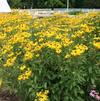
|
Rudbeckia subtomentosa 'Henry Eilers'Coneflower, Sweet
This plant was named for the fellow that discovered it along a stream in Montgomery County, Ill. Strong upright clumps to 5' or slightly more bear numerous clusters of finely quilled light yellow flower petals with brown cones in August and September.
[
More Info
]
|
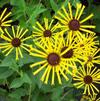
|
Rudbeckia subtomentosa 'Little Henry'Coneflower, Sweet
'Little Henry' offers the same true yellow, quilled blooms as 'Henry Eilers' but its smaller size makes it more functional for the average garden. 'Little Henry' is in bloom from summer until frost. A great choice for cut flowers.
[
More Info
]
|
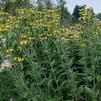
|
Ruellia humilisPetunia, Hairy Wild
Wild petunia is a Missouri native perennial which occurs in dryish soils in open woods, glades, prairies and fields throughout the State except for the far southeastern lowlands. Charming, low growing clumps produce light purple tubular flowers from May to Oct. The flowers arise in groups at the leaf axis. The square stems and the leaves are both quite hairy-a natural defense against dry conditions.
[
More Info
]
|
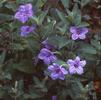
|
Salvia 'Crystal Blue'Salvia, Perennial
Salvia is a staple item for every sunny garden. It asks little more than sunshine and a little drink every once in a while in return for producing a bountiful mass of colorful flower spires from late spring into early summer. It forms a dense, rounded clump of aromatic, rugose grey-green foliage that looks nice all season long and is not enjoyed by rabbits or deer.
‘Crystal Blue’ Salvia is the first of its kind—an incredibly unique light sky blue (most perennial Salvias are darker purple), a cool shade perfectly fitting for a perennial that blooms relatively early in the season.
[
More Info
]
|
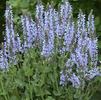
|
Salvia 'Midnight Model'Salvia, Perennial
Vibrant blue flowers that surpass the other blue perennial salvias bloom atop a dense clumping habit. Sun-loving salvias are easy to grow, unfussy plants.
[
More Info
]
|
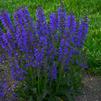
|
Salvia 'Pink Dawn'Salvia, Perennial
Salvia is a staple item for every sunny garden. It asks little more than sunshine and a little drink every once in a while in return for producing a bountiful mass of colorful flower spires from late spring into early summer. It forms an upright clump of aromatic, rugose green foliage that looks nice all season long and is not enjoyed by rabbits or deer.
‘Pink Dawn’ Salvia produces a cloud of sizable, cotton candy pink blossoms which pop open from fuchsia buds held on purplish stems from late spring into early summer. Compared to other pink Salvias, it is a bit longer blooming due to its well-branched flower stems.
[
More Info
]
|
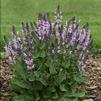
|
Salvia 'Violet Riot'Salvia, Perennial
Salvia is a staple item for every sunny garden. It asks little more than sunshine and a little drink every once in a while in return for producing a bountiful mass of colorful flower spires from late spring into early summer. It forms a uniform, rounded clump of aromatic, rugose green foliage that looks nice all season long and is not enjoyed by rabbits or deer.
‘Violet Riot’ Salvia produces a riot of vivid violet blue flowers with deep purple calyxes from late spring into early summer. Compared to the industry standard ‘May Night’, it has a much denser habit, a more concentrated show of color, and a neater habit in containers, increasing its impulse appeal at retail.
[
More Info
]
|
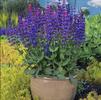
|
Salvia 'Wesuwe'Salvia, Perennial
Early bloomer with a relaxed, vertical habit. Spikes of vibrant purple intensify the garden. Gray-green foliage develops nice mounds. Will rebloom if cut back. Can be found in the Lurie Garden, Chicago Illinois.
[
More Info
]
|

|
Salvia azureaSage, Blue
[
More Info
]
|

|
Salvia nemorosa 'BLUE HILL Blauhugel'Salvia, Perennial
Dense spikes of long-blooming, true blue flowers on compact plants. Plants are not as upright as 'May Night'.
[
More Info
]
|
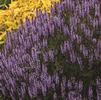
|
Salvia nemorosa 'Bumbleblue'Salvia, Perennial
Intense violet blue flowers bloom profusely on this short plant in late spring. A feast for your eyes, and for the pollinators!
[
More Info
]
|
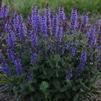
|
Salvia nemorosa 'Bumblesky'Salvia, Perennial
Beautiful sky blue flowers bloom profusely on this short plant in late spring. A feast for your eyes, and for the pollinators!
[
More Info
]
|
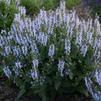
|
Salvia nemorosa 'Caradonna'Salvia, Perennial
Violet-blue flowers June through September on dark purple stems. Aromatic foliage resists rabbits and deer. Heat and humidity tolerant. The most rigid form of all perennial salvias.
[
More Info
]
|
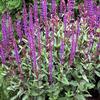
|
Salvia nemorosa 'Marcus'Salvia, Perennial
A dainty new salvia with violet-purple flowers. Will bloom all summer if deadheaded. PP13322
[
More Info
]
|
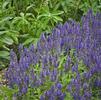
|
Salvia nemorosa 'MAY NIGHT Mainacht'Salvia, Perennial
Dense spikes of long-blooming, deep purple flowers on vase-shaped plants. This outstanding cultivar tends to be more rigid in form than other perennial Salvias. Aromatic foliage resists rabbits and deer. 1997 Perennial Plant of the Year.
[
More Info
]
|
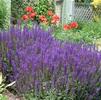
|
Salvia nemorosa 'New Dimension Blue'Salvia, Perennial
Dwarf variety has dense spikes of deep purple flowers in June on compact, aromatic foliage. Will repeat bloom throughout summer if deadheaded to basal foliage and given regular moisture.
[
More Info
]
|
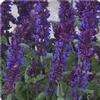
|
Salvia nemorosa 'New Dimension Rose'Salvia, Perennial
Dwarf variety has dense spikes of deep rose flowers in June on compact foliage. Will repeat bloom throughout summer if deadheaded to basal foliage and given regular moisture.
[
More Info
]
|
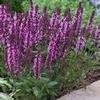
|
Salvia nemorosa 'SNOW HILL Schneehugel'Salvia, Perennial
Pure white flower spikes rise above compact mounds of gray-green foliage. Blooms into summer if deadheaded. Sport of 'Blue Hill'.
[
More Info
]
|

|
Sambucus canadensisElderberry
[
More Info
]
|

|
Saururus cernuusLizard Tail
[
More Info
]
|
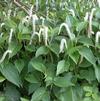
|
Scabiosa columbaria 'Blue Note'Pincushion
A lovely dwarf pincushion flower, with lavender-blue blooms on grey-green foliage. Likes sandy, dry soil and needs good drainage, especially in winter. Deadhead occasionally to maintain a neat appearance.
[
More Info
]
|

|
Scabiosa columbaria 'Butterfly Blue'Pincushion Flower
A profusion of lavender-blue flowers on wiry stems from April through October. A cool season perennial tolerating heat. Needs excellent soil drainage. [PPA-2000]
[
More Info
]
|

|
Scabiosa columbaria 'Pink Mist'Pincushion Flower
Pincushion-like, pink flowers with a hint of lavender are borne atop wiry stems all season. Drought tolerant once established. A reliable, long blooming selection.
[
More Info
]
|

|
Schizachyrium (syn Andropogon) scopariumGrass, Little Bluestem
Green to blue-green leaves turn deep red in the fall. One of our native prairie grasses that is perfectly suited to hot humid summers.
[
More Info
]
|
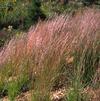
|
Schizachyrium (syn Andropogon) scoparium 'Blaze'Grass, Little Bluestem
Valued ornamentally for its vivid red fall foliage. In winter it remains a standout as the leaves fade to deep pink. Easily grown and adapts to any soil type, including clay. Heat and drought tolerant.
[
More Info
]
|
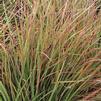
|
Schizachyrium (syn Andropogon) scoparium 'Blue Heaven'Grass, Little Bluestem
Tall, upright form with beautiful blue-grey foliage that turns to burgundy red with purple and violet highlights in fall. The fall color lasts well into November. Small, fluffy white flowers form in late summer.
[
More Info
]
|
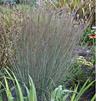
|
Schizachyrium (syn Andropogon) scoparium 'Carousel'Grass, Little Bluestem
An improved selection of the native bluestem, with stems that remain sturdy through the winter. Compact blue-green foliage turns shades of copper, beiges and oranges in the autumn.
[
More Info
]
|
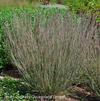
|
Schizachyrium (syn Andropogon) scoparium 'Prairie Blues'Grass, Little Bluestem
An improved selection of the native bluestem. It offers striking gray-blue, upright foliage that takes on reddish-orange tones in the fall. Fluffy silver seed heads from late summer well into fall.
[
More Info
]
|

|
Schizachyrium (syn Andropogon) scoparium 'Smoke Signal'Grass, Little Bluestem
This selection of our native Schizachyrium has a beautifully refined habit and puts forth a strong show of color in late summer and fall. The glaucous blue-green foliage begins to take on scarlet red tones in late summer, turning a deeper red-purple through the fall. Tiny, tan seed heads appear in early fall on the top half of the stems.
An improvement over older cultivars, this grass maintains its strictly upright habit through fall.
Schizachyrium is a great choice if you are looking to restore an eroded site, or for a plant that will grow in hot, dry areas where other plants have a hard time surviving.
[
More Info
]
|

|
Schizachyrium (syn Andropogon) scoparium 'The Blues'Grass, Little Bluestem
A very blue selection of the species with exceptional burgundy fall color. Tolerates heat and humidity and is great for mass planting.
[
More Info
]
|
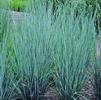
|
Schizachyrium (syn Andropogon) scoparium 'Twilight Zone'Grass, Little Bluestem
We are so excited to bring you this new Schizachyrium because it was a total standout in our trials. Though native Schizachyriums typically color up in fall, the new ‘Twilight Zone’ possesses a nearly iridescent silvery mauve purple cast all over the whole plant beginning in midsummer. It retains these eerily beautiful tones through fall when brighter purple highlights appear on the flower stems. The attractive foliage forms a strictly upright, narrowly columnar clump that is about half as wide as it is tall.
This grass would be stunning in combination with silver foliage plants like Silver Mound Artemisia in a sunny, hot, dry spot in the landscape.
Schizachyrium is a great choice if you are looking to restore an eroded site, or for a plant that will grow in hot, dry areas where other plants have a hard time surviving.
[
More Info
]
|

|
Scutellaria incanaSkullcap, Hoary
Blooms July through September.
[
More Info
]
|

|
Sedum 'Autumn Fire'Stonecrop
[
More Info
]
|

|
Sedum 'Autumn Joy'Stonecrop
Fleshy green leaves are topped with flowers that resemble flat heads of broccoli. Flower buds are green in midseason then turn to pink before opening rosy bronze. Flower heads dry on the plant and provide winter interest. Grow in lean dry soil.
[
More Info
]
|

|
Sedum 'Carl'Stonecrop
Upright form producing flat clusters of magenta flowers in August. Succulent foliage is smooth gray-green throughout the growing season. Easy to grow. Drought tolerant. Attracts songbirds.
[
More Info
]
|

|
Sedum 'Cherry Tart'Stonecrop
This new groundcover type Sedum offers never-before-seen cherry red foliage and a short, compact mounded habit. It holds its red foliage color from spring through fall. Large clusters of pink flowers top the colorful foliage from late August thru September.
Low, spreading Sedums form a solid mat of foliage which is excellent for covering slopes or can be planted as a groundcover in sunny, dry areas. They are extremely drought tolerant and many are evergreen. These are terrific low-maintenance plants that always look their best.
[
More Info
]
|
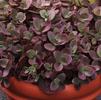
|
Sedum 'Dazzleberry'Stonecrop
This breakthrough new groundcover type Sedum forms a low growing, compact clump of smoky blue-grey foliage topped with giant 6-8”, vibrant raspberry colored flowers.
The flower clusters are comparatively much larger than those of ‘Rosy Glow’ and ‘Sunset Cloud’. They completely cover the foliage from early August through September here in Michigan, making it one of the earliest of all fall blooming Sedum cultivars.
This Sedum has fabulous color impact even from quite a distance and it provides color in the landscape for over 7 weeks.
Low, spreading Sedums form a solid mat of foliage which is excellent for covering slopes or can be planted as a groundcover in sunny, dry areas. They are extremely drought tolerant and many are evergreen. These are terrific low-maintenance plants that always look their best.
Sedum SUNSPARKLER® Series--
This colorful new series of Sedum comes from the breeding work of Chris Hansen. After several years of hybridizing and evaluating in his West Michigan field trials, Chris has selected only the best, most unique cultivars for introduction in his new SUNSPARKLER® series.
His first three introductions are colorful groundcover types that were selected from over 4,000 seedlings. They all retain their attractive coloration from spring through fall and are free of the leaf scorch that can often plague Sedums. Their compact habit and unique foliage/flower combinations greatly broaden the range of groundcover type Sedums that are currently on the market. They can also be used in combination containers and green roof systems.
Like all Sedums, they thrive on neglect and show their best colors when grown dry and in full sun.
[
More Info
]
|
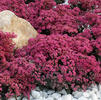
|
Sedum 'Firecracker'Stonecrop
For a rich blanket of color in those hot, sunny areas, try Sedum ‘Firecracker’ from breeder Chris Hansen who also brought us ‘Dazzleberry’ and ‘Lime Zinger’. This is Chris’ improvement over his previous red-foliage introduction, ‘Cherry Tart’. Very dense growing, well-branched selection that won’t split open in summer. It puts on a strong show of burgundy red color all season long, with only the tiniest new leaves emerging mint green. Plant ‘Firecracker’ en masse in the landscape as a colorful, weed-suppressing ground cover and enjoy its vibrant pink flowers in late summer to early fall as an added bonus.
[
More Info
]
|
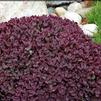
|
Sedum 'Lemonjade'Stonecrop
Diversify your fall Sedum offerings with this unique yellow flowered selection. Unlike most autumn stonecrops which have pink flowers, ‘Lemonjade’ bears large 5-7” panicles of bright citron yellow flowers which completely cover the top of the foliage in early fall. As the cold weather sets in, the seed heads take on rosy peach tones.
This is a compact selection with a stocky, upright mounded habit. It does not split open when it blooms like so many older Sedums do. Its grey-green, toothed foliage remains clean all season long.
Tall, upright sedums form substantial clumps of foliage which can be substituted for shrubs in the landscape. Their stout, sturdy stems support the massive flower heads which develop in summer and burst into bloom in fall. If left standing, they provide winter interest and food for birds.
[
More Info
]
|
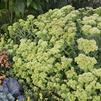
|
Sedum 'Lime Zinger'Stonecrop
No other Sedum combines the colorful foliage display and groundcover type habit quite like ‘Lime Zinger’. Succulent apple green leaves are edged in cherry red and grow into a tight weed suppressing mat that is just 4” tall. The carpet of colorful foliage is topped with large clusters of soft pink flowers from late August through September here in Michigan.
Low, spreading Sedums form a solid mat of foliage which is excellent for covering slopes or can be planted as a groundcover in sunny, dry areas. They are extremely drought tolerant and many are evergreen. These are terrific low-maintenance plants that always look their best.
Sedum SUNSPARKLER® Series--This colorful new series of Sedum comes from the breeding work of Chris Hansen. After several years of hybridizing and evaluating in his West Michigan field trials, Chris has selected only the best, most unique cultivars for introduction in his new SUNSPARKLER® series.
His first three introductions are colorful groundcover types that were selected from over 4,000 seedlings. They all retain their attractive coloration from spring through fall and are free of the leaf scorch that can often plague Sedums. Their compact habit and unique foliage/flower combinations greatly broaden the range of groundcover type Sedums that are currently on the market. They can also be used in combination containers and green roof systems.
Like all Sedums, they thrive on neglect and show their best colors when grown dry and in full sun.
[
More Info
]
|
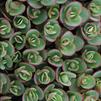
|
Sedum 'Little Miss Sunshine'Stonecrop
This groundcover is perfect for rock gardens, containers, or the front of the border. Tiny and tidy, it is covered in bright yellow flower clusters on glossy green leaves from early to midsummer.
[
More Info
]
|
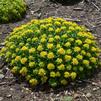
|
Sedum 'Matrona'Stonecrop
Large, pastel pink blooms in late summer and fall. Plant is vase-shaped with shiny red stems and deep gray foliage edged in rose pink.
[
More Info
]
|

|
Sedum 'Popstar'Stonecrop
Blue-green foliage gives way to salmon pink flowers in late summer, covering this hardy easy-care Sedum until attractive pink seed pods appear. Loads of late season appeal.
[
More Info
]
|
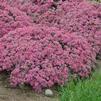
|
Sedum 'Pure Joy'Stonecrop
In the spring, very small, sharply serrated leaves emerge a cool shade of blue green, a color reminiscent of the lovely Sedum sieboldii. They formed a perfectly rounded, low mound that was perfect for edging the front of the border.
As the plant aged through the season, the leaves expanded and turned lighter green, forming a short, semi-upright clump.
When late summer and early fall arrived, we understood exactly why the breeder had selected this plant for its flowers. A massive dome of bubblegum pink, star-shaped flowers completely covered the foliage followed by deeper pink seed heads later in fall.
This plant pairs perfectly with other fall bloomers like hardy garden mums, asters, and Black-Eyed Susans. Try a few in containers and at the front of the border.
[
More Info
]
|
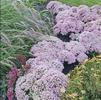
|
Sedum 'Superstar'Stonecrop
Smoky turquoise foliage covered in bright rose pink blooms in late summer, followed by dark purple seed heads. With its exquisite color and low-mounded habit, this will truly is a superstar of the perennial border!
[
More Info
]
|
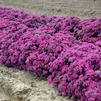
|
Sedum acreStonecrop
Deep green succulent foliage carpet is covered with yellow flowers in June. Foliage turns red in fall. Re-seeds. Good container plant.
[
More Info
]
|

|
Sedum kamtschaticum 'Weihenstephaner Gold'Stonecrop
Low growing, fleshy green foliage turns red in winter. Tiny, star-shaped, gold flower clusters appear June through August. Similar to S. kamtschaticum with smaller, denser foliage. Drought tolerant.
[
More Info
]
|
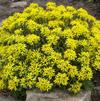
|
Sedum kamtschaticum var ellacombeanumSecum, Pachy
Fleshy green leaves covered with mounds of lemon yellow flowers June through September. A great ground cover for dry slopes and banks. Foliage turns varying shades of red in autumn. Extremely drought tolerant. Referred to as "Pachy Sedum" since its leaves resemble the foliage of Pachysandra.
[
More Info
]
|
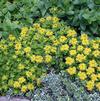
|
Sedum rupestreStonecrop, Blue Spruce
Narrow-leaved succulent foliage resembling the needles of blue spruce. Yellow flowers in June. Fast growing evergreen foliage forms dense mat. Heat and drought tolerant.
[
More Info
]
|

|
Sedum rupestre 'Angelina'Stonecrop
Brilliant golden-yellow, needle-like foliage forms dense colorful mats. Evergreen foliage turns reddish-orange in cooler months and throughout winter. Yellow flowers in early summer. Excellent for rock gardens and mixed containers. Easy to grow fast spreading sedum. Drought tolerant. A 2002 ISU Perennial Award for Best New Introduction.
[
More Info
]
|
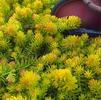
|
Sedum spectabile 'Neon'Stonecrop
This upright selection sports brilliant rosy-magenta pink flowers and light green foliage. A sport of "Brilliant' with broader flower clusters and more consistent, vibrant color.
[
More Info
]
|

|
Sedum spurium 'Fuldaglut FULDA GLOW'Stonecrop
Bronze-red low growing foliage forms a solid mat and keeping its color all season long. Rose-red flowers appear in august and September. Excellent when massed. Heat and drought tolerant.
[
More Info
]
|

|
Sedum spurium 'John Creech'Stonecrop
Tightly clustered green foliage with pink flowers in late May and June. Vigorous and grows easily in well-drained soil.
[
More Info
]
|
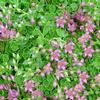
|
Sedum spurium 'Voodoo'Stonecrop
Deep reddish-bronze, almost black foliage on cascading stems. Rosy red flowers in summer. Low growing, mat forming foliage, eventually forms a thick carpet. Tolerates some light shade. Drought tolerant.
[
More Info
]
|
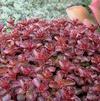
|
Sedum ternatumStonecrop, Woodland
Blooms late April through May.
[
More Info
]
|
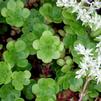
|
Senecio aureusRagwort, Golden
[
More Info
]
|

|
Senecio (syn Packera) obovatusSquaw-Weed
[
More Info
]
|
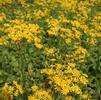
|
Sesleria autumnalisGrass, Autumn Moor
Cool season, clump-forming ornamental grass with narrow flower spikes rising above the foliage clump in summer to 18" tall. Flowers give way in autumn to silvery-white inflorescences. Attractive, narrow, yellow-green foliage. This grass is indigenous to the moors of Europe and puts on its best flowering display in autumn, hence the common name.
[
More Info
]
|
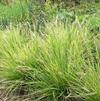
|
Silphium terebinthinaceumPrairie Dock
[
More Info
]
|

|
Sisyrinchium angustifolium 'Lucerne'Grass, Blue-Eyed
Bright blue star shaped flowers with gold centers rise above fine, Iris-like foliage from late April or early May until July. Excellent for edging.
[
More Info
]
|

|
Solidago 'Golden Baby (syn Goldkind)'Goldenrod
Dwarf variety has bright yellow flower plumes August through September. Low-growing, compact foliage forms an attractive dark green mat. Chicago Botanic Garden "Best Plants for the Midwest".
[
More Info
]
|

|
Solidago drummondiiGoldenrod, Cliff
Graceful, arching stems are crowded with tiny, bright yellow, daisy like flowers in late summer to fall. Flowers attract butterflies and other pollinators. Basal leaves generally dry up and disappear by flowering time but leaves toward the top of stems remain. Plant Cliff Goldenrod where it can hang over a rock wall for a be
[
More Info
]
|
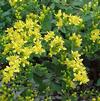
|
Solidago flexicaulisGoldenrod, Zigazg
[
More Info
]
|
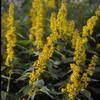
|
Solidago rugosa 'Fireworks'Goldenrod
Impressive, lacy sprays of golden yellow flowers in September and October. Flower clusters radiate out in all directions and resemble fireworks on arching bushy foliage. Basal foliage is evergreen. Extremely drought tolerant, as exhibited at Alwerdt's Gardens in Altamont, Il during the summer 2002 drought.
[
More Info
]
|
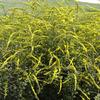
|
Solidago speciosaGoldenrod, Showy
Dense, erect clusters of bright yellow flowers top tall reddish stems in late summer and early fall. "Speciosa" is Latin for "showy," and this goldenrod certainly fits that bill. Clump forming.
[
More Info
]
|

|
Solidago sphacelata 'Golden Fleece'Goldenrod, Broad-Leaf
Bright yellow flower plumes August through September. Low-growing, compact foliage forms an attractive dark green mat. Make a good ground cover when massed.
[
More Info
]
|

|
Solidago (syn Oligoneuron) rigidaGoldenrod, Stiff
Bright, true yellow, flat-topped flowers bloom in late summer and early fall. The flowers provide nectar and birds relish the seed. Clump forming.
[
More Info
]
|
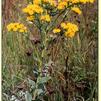
|
Soreopsis verticillata 'Crazy Cayenne'Coreopsis, Threadleaf
This vibrant orange Coreopsis that has a perfectly domed, rounded, uniform habit. 1.75" wide, fiery sunset orange flowers have intense red-orange color concentrated at the centers of the petals. The undersides of its petals are golden yellow, with some petal tips displaying the same golden yellow. The flowers will cover the gray-green, threadleaf foliage for a showy midsummer display.
Coreopsis is easy to grow, making it a good choice for beginners. One plant will provide you with long-lasting cut flower bouquets all summer long.
[
More Info
]
|

|
Sorghastrum nutansGrass, Indian
Upright clumps of slender, blue-green leaves turn golden yellow in fall. Stiff, vertical flowering stems, topped with 12" long, narrow, light brown flower panicles with yellow stamens, rise well above the foliage in late summer.
[
More Info
]
|
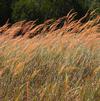
|
Sorghastrum nutans 'Indian Steel'Grass, Blue Indian
Steel blue foliage with hints of light green. Five-foot flower spikes topped with yellow flowers. Beautiful bronze fall color. With these attributes, Blue Indian Grass is one of the most attractive native grass cultivars. In addition, it is drought tolerant, tolerates poor soils, and requires little maintenance. This is a great choice for sustainable landscapes, natural areas, and modern designs that demand structured, yet restful, form and texture. Sorghastrum nutans 'Indian Steel' performs best in full sun. Rich soil and too much fertilizer will cause weak growth and flopping. Indian grasses attract songbirds and provide shelter for gamefowl. Blue Indian Grass is a seed selection of native Sorghastrum nutans.
[
More Info
]
|

|
Sorghastrum nutans 'Sioux Blue'Grass, Blue Indian
This seedling of 'Osage' was selected by Rick Darke who saw great potential in its powder blue foliage and erect habit. This is a clump-forming grass that turns yellow in the fall, then fades to tan and remains standing through most of the winter. In late summer, copper brown flowers with conspicuous bright yellow pollen sacs attached are produced. They make wonderful cut and dried flowers. This heat tolerant, disease resistant, clumping forming grass is native to North American prairies.
[
More Info
]
|
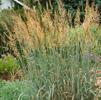
|
Spartina pectinataGrass, Prairie Cordgrass
[
More Info
]
|
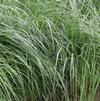
|
Spigelia marilandicaIndian Pink
Indian pink is a clump-forming, Missouri native perennial which occurs in moist woods and streambanks in the far southeastern part of the State. Features one-sided cymes of upward facing, trumpet-shaped, red flowers (to 2" long) atop stiff stems growing to 18" tall. Each flower is yellow inside and flares at the top to form five pointed lobes (a yellow star). Flowers bloom in June. Glossy green, ovate to lance-shaped leaves (to 4" long).
[
More Info
]
|
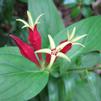
|
Sporobolus heterolepisGrass, Prairie Dropseed
Fine textured tufts of green foliage turn gold or deep orange in autumn. Pink flowers appear in August with fragrant seeds. Heat and drought tolerant. Attracts songbirds and wildlife.
[
More Info
]
|
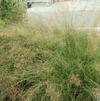
|
Sporobolus heterolepis 'Tara'Grass, Prairie Dropseed
A useful compact, vegetatively propagated selection of the native Prairie Dropseed. The flowers and vase-shaped habit of Tara are much more upright than the seed propagated species. Attractive orange red autumn color. Flowers are very aromatic. Elegant in the landscape in mass or as a specimen. Very drought tolerant.
[
More Info
]
|
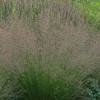
|
Sporobolus wrightiiGrass, Giant Sacaton
Gray-green foliage sports airy clouds of flowers atop tall stems in summer. This grass is good as a single specimen or in a group as a showy backdrop. Fast growing. Drought, heat and salt tolerant. Supstitute for Pampas Grass.
[
More Info
]
|
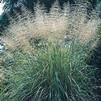
|
Stachys byzantina 'Fuzzy Wuzzy'Lamb'S Ears
Velvety soft,silver-gray leaves are shaped and feel like a lamb's ear. Lavender flower on short spikes in July. Tolerates drought, heat and humidity. Remove spent flower stems to tidy.
[
More Info
]
|
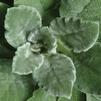
|
Stachys byzantina 'Helene von Stein (syn Big Ears)'Lamb'S Ears
Huge, velvety soft, greenish-silver leaves are shaped and feel like a lamb's ear. Non flowering variety stays neat and tidy, doesn't melt out as easily as other cultivars Tolerates drought, heat and humidity. Also known as 'Big Ears'. Leaves are twice the size of 'Silver Carpet'. Tolerates drought, heat and humidity. Grow in moist, well-drained soil.
[
More Info
]
|
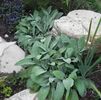
|
Stachys monieri 'Hummelo'Betony
Striking, rosy lavender, bottlebrush flower spikes on sturdy stems July through September. Forms rounded clumps of textured foliage with extended season interest.
[
More Info
]
|
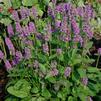
|
Stachys officinalis 'Densiflorus'Betony
Bright lavender-pink flower spikes appear June through August above extremely dense, compact rosettes of green, glossy foliage. Good for the edge of the border.
[
More Info
]
|
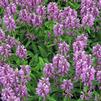
|
Stokesia laevis 'Honeysong Purple'Aster, Stokes'
Large, royal purple flowers with contrasting white stamens on purple-tinged stems. Flowers are 4" in diameter. Compact form. Grows best in filtered light and well-drained soil. PPAF
[
More Info
]
|
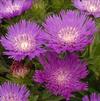
|
Stokesia laevis 'Peachie's Pick'Aster, Stokes'
[
More Info
]
|
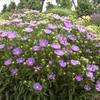
|
Stylophorum diphyllumPoppy, Celandine
Blooms April through June and frequently into July.
[
More Info
]
|
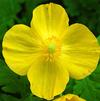
|
Tanacetum vulgare 'Isla Gold'Gold Leaf Tansy
[
More Info
]
|

|
Teucrium chamaedrysGermander
A compact shrub-like plant with glossy green, scalloped leaves resembling those of boxwood. Blooms for 3-4 weeks with short spikes of rose-purple flowers. Commonly used in knot gardens as a miniature hedge.
[
More Info
]
|

|
Thalia dealbataCanna, Wild
[
More Info
]
|

|
Thalictrum aquilegifoliumMeadow Rue, Columbine
Large sprays of delicate mauve flowers. Lacy, green-blue foliage is similar to columbine. Prefers a rich, moist soil but will tolerate heat.
[
More Info
]
|

|
Thalictrum rochebrunianumLavender Mist
Delicate sprays of lavender-purple flower clusters on dark purple stems July through September. Tall, airy, fine textured foliage is bluish-green. Spectacular when massed.
[
More Info
]
|

|
Tiarella 'Brandywine'Foamflower
Star-shaped, maple-like foliage forms a rounded clump 6-9" tall. Leaves are green with dark centers turning reddish-brown in autumn. Tiny, pinkish-white flowers on wiry stems in late April into May.
[
More Info
]
|

|
Tiarella 'Cutting Edge'Foamflower
Highly dissected green leaves with burgundy centers provide 3-season interest, while white bottlebrush flowers provide spring excitement. For the shade garden, this is a wonderful, clumping perennial that plays nice with others.
[
More Info
]
|
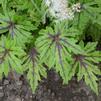
|
Tiarella 'Elizabeth Oliver'Foamflower
Blooms late April into May.
[
More Info
]
|
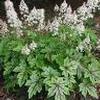
|
Tiarella 'Sugar and Spice'Foamflower
Deeply cut, lacy foliage variegated in burgundy with wide green margins are topped in late April into May with delicate spikes of pink flowers opening to white. PPAF
[
More Info
]
|

|
Tradescantia 'Sweet Kate'Spiderwort
Compact, clump-forming plant; triangular, gentian-blue blossoms with sulphur-yellow stamens contrast sharply with the glowing gold foliage. Long blooming. Protect from scorching afternoon sun. Vigorous and long-blooming. This plant has been seen at Wine Country Gardens used as a very effective component in mixed container gardens. (syn. `Blue & Gold')
[
More Info
]
|
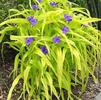
|
Tradescantia ernestianaSpiderwort, Woodland
[
More Info
]
|

|
Tradescantia ohiensisSpiderwort, Ohio
Showy clusters of blue or rose flowers bloom on erect stems late May to early July. Each flower opens for one day. Cut back to 6-12" in mid summer to encourage new growth and possible fall bloom.
[
More Info
]
|
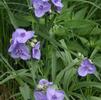
|
Tricyrtis formosana 'Samurai'Toad Lily, Variegated
Orchidlike, purple flowers with darker spots borne in the leaf axils. Green foliage with gold margins. Spreads by stolons. USDA Zone 6.
[
More Info
]
|

|
Verbena hastataVervain, American Blue
Numerous purplish-blue flowers on pencil-like spikes bloom July through September. Stiff and upright habit. Flowers bloom from bottom to top, a few at a time. A Midwest native enjoying wet soils.
[
More Info
]
|
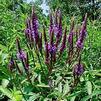
|
Verbena (syn Glandularia) canadensisVerbena, Rose
Lilac rose flowers are very attractive to butterflies. Plants bloom April through September. Low growing foliage makes a good ground cover. Not reliably hardy when associated with heavy, wet soil conditions during the winter months; best treated as an annual.
[
More Info
]
|
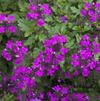
|
Vernonia arkansanaIronweed, Curlytop
Blooms August through September.
[
More Info
]
|

|
Vernonia fasciculataIronweed, Dwarf
Small purple flowers from August through September. This is a very durable, naturally short growing specie.
[
More Info
]
|

|
Vernonia lettermanniiIron Butterfly
Blooms August through September.
[
More Info
]
|
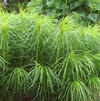
|
Vernonia noveboracensisIronweed
Blooms August through September.
[
More Info
]
|
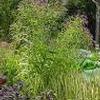
|
Veronica 'Mona Lisa Smile'Speedwell
Rosy purple flower spikes adorn the rounded habit of this early-blooming Veronica.
[
More Info
]
|
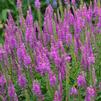
|
Veronica 'Pink Potion'Speedwell
Pink flowers atop a rounded, low habit. Quick grower.Great for containers.
[
More Info
]
|

|
Veronica 'White Wands'MAGIC SHOW® Spike Speedwell have long, narrow flower spikes that look like colorful wands and ‘White Wands’ is the perfect neutral white color if you’d like to combine with brightly colored annuals.
‘White Wands’ is the perfect height to plant behind your low-growing perennials, but if front of your shrubs, and will bloom from midsummer into late summer. Honeybees, hummingbirds, and butterflies delight in their sweet nectar. The dark green, glossy linear leaves display better disease resistance than older Veronica.
[
More Info
]
|
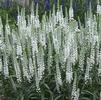
|
Veronica peduncularis 'Waterperry Blue'Speedwell, Dwarf
Sky blue flower spikes and shiny, green, creeping foliage.
[
More Info
]
|
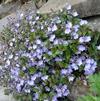
|
Veronica spicata 'RED FOX Rotfuchs'Speedwell
[
More Info
]
|

|
Veronica spicata 'Royal Candles'Speedwell
Masses of violet-blue flower spikes are held above compact, upright clumps of deep green foliage all summer. The bottom foliage of this variety does not die out.. Long-blooming and compact. Purported to be an outstanding new Veronica selection, and possibly a replacement for the leaf disease prone Sunny Border Blue. PP18432
[
More Info
]
|

|
Veronicastrum virginicumCulver'S Root
Blooms June through August.
[
More Info
]
|
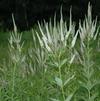
|
Vinca minor 'Bowles'Periwinkle
Dark green, glossy evergreen foliage forms dense carpet. Intense blue-violet flowers appear above foliage in April.
[
More Info
]
|

|
Yucca filamentosa 'Color Guard'Adam'S Needle
Bright creamy-yellow leaves have green edges. During the cooler months of fall and winter, the light leaf centers take on rose overtones.
From early to midsummer, spectacular sturdy flower stalks rise 3-4 feet tall from the center of the plant. The individual bell-shaped, creamy white flowers are 2-3 inches long and dangle from the stems.
Tough as nails, yuccas are the ideal plant for a no-maintenance garden. Their sword-like foliage radiates upward from a central crown, remaining upright all year round except in the heaviest snows.Yuccas thrive in any type of well-drained soil including those that are very dry. Though they will grow in partial shade, they reach their full potential only if they receive sun all day long. Many yuccas do not bloom until they are mature. Once they start, though, you will see that they were worth the wait. The flower stalks retain some ornamental value after the blooms have faded. Mature plants sometimes develop plantlets near their base. These can be dug and transplanted elsewhere if desired.
[
More Info
]
|
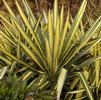
|
Yucca filamentosa 'Excalibur'Adam'S Needle
This Yucca forms a uniform, spiky, rounded clump of sword-like, blue-green to glaucous grey-green leaves lined with an extraordinary number of curly white filaments. Its habit is much more uniform and is overall smaller than the straight species.
Impressively stout flower scapes carry white, bell-shaped flowers in early to midsummer.
[
More Info
]
|
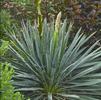
|
Zizia apteraGolden Alexanders
The thick, glossy semi-evergreen foliage looks a little like Lenten Rose and provides nice contrast to other native plants. Small yellow flowers in flat heads bloom May-June.
[
More Info
]
|
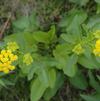
|
Zizia aureaGolden Alexanders
Golden Alexander is a Missouri native perennial which occurs most often in small colonies in moist woods and meadows, thickets, glades and prairies. Features flat-topped clusters (compound umbels) of tiny yellow flowers in late spring atop stems growing to 3' tall. Distinguished from other carrot family members by the absence of a flower stalk on the central flower of each umbel. Both basal and stem leaves are compound biternate with toothed leaflets. The similar Zizia aptera has simple, heart-shaped basal leaves. Golden Alexanders is a food plant for the larvae of the Missouri woodland swallowtail butterfly (Papilio joanae). Similar to Z. aptera which has a heart shaped basal leaf and reddish stem.
[
More Info
]
|
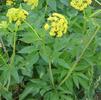
|
